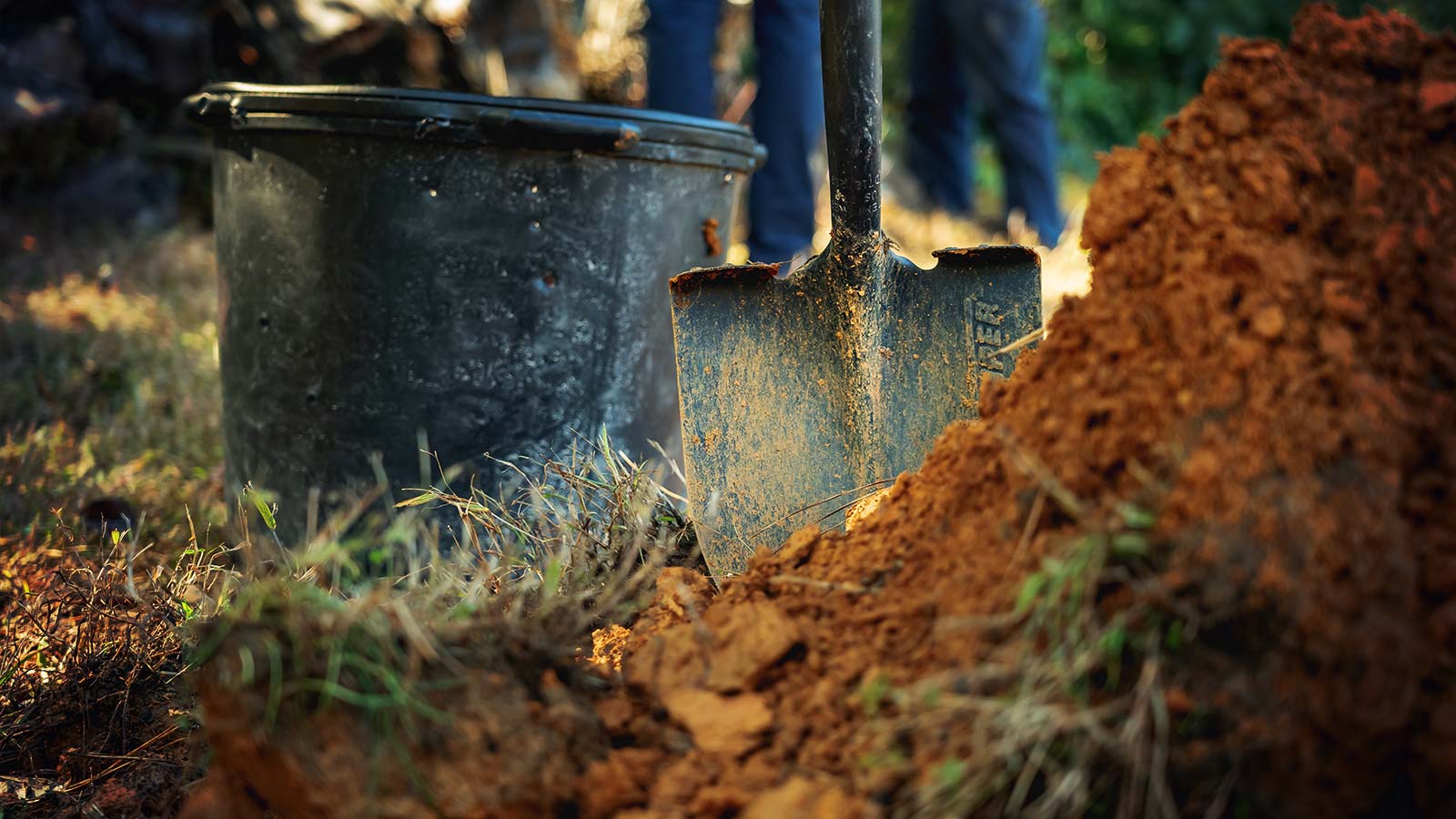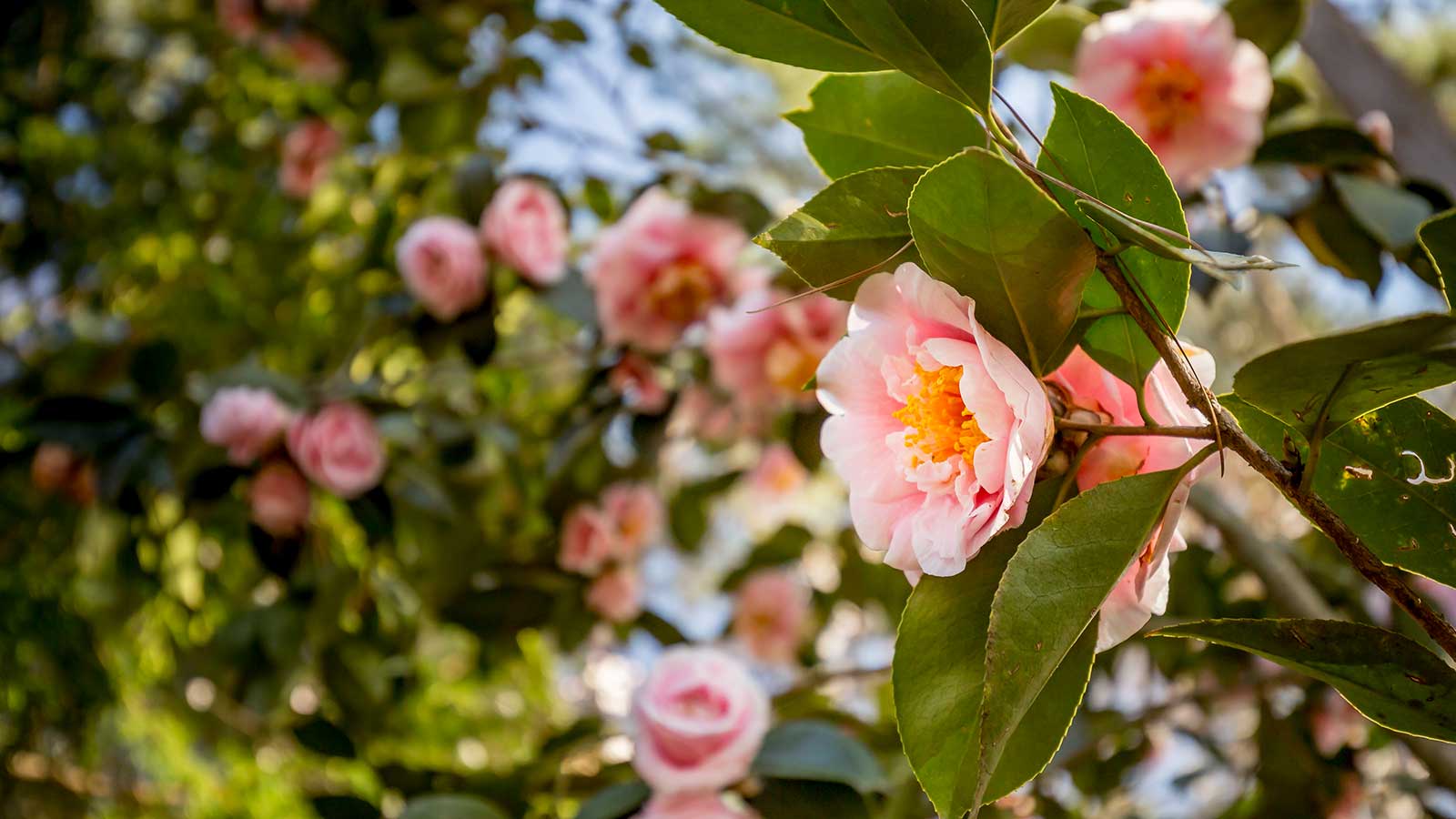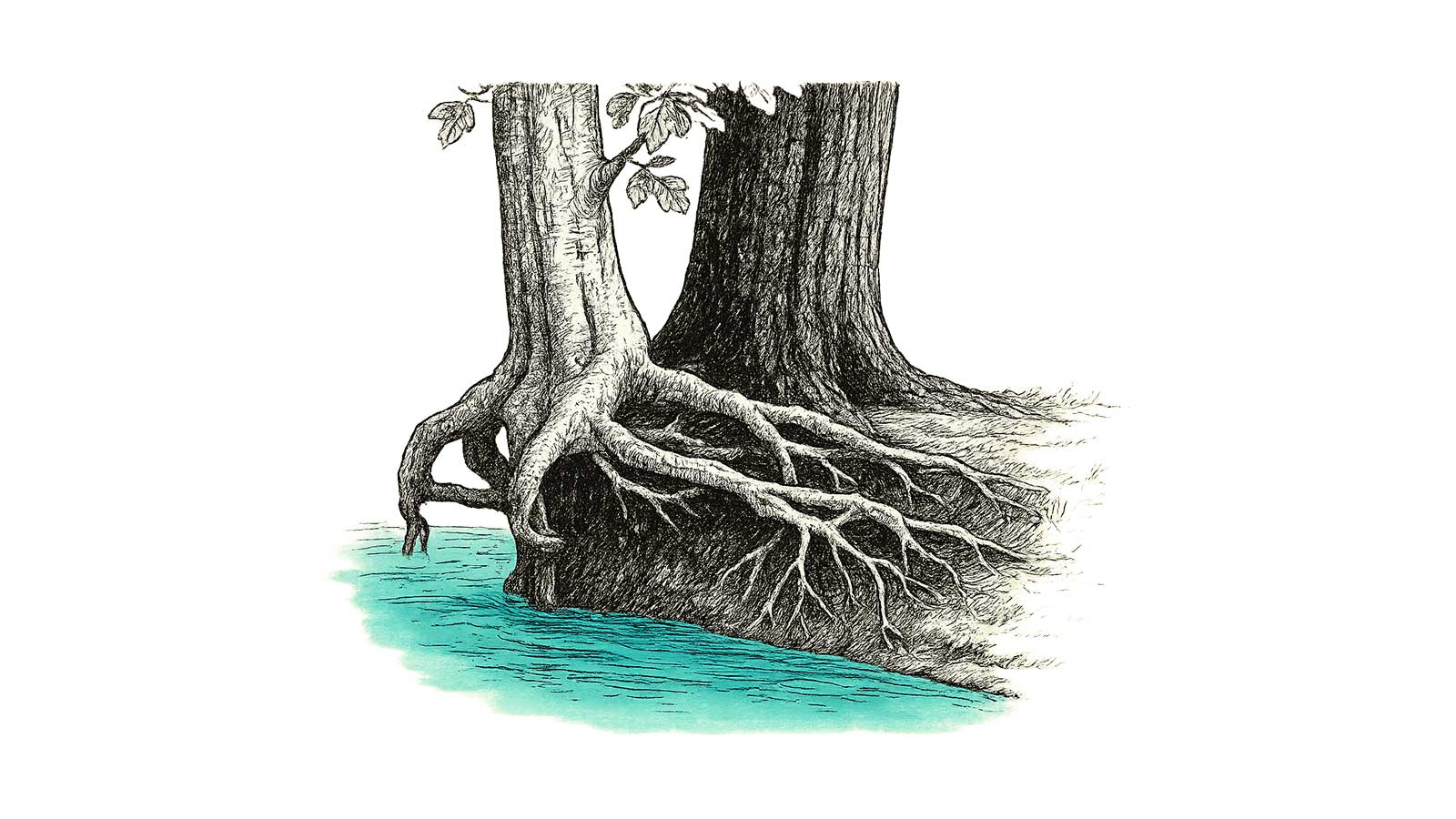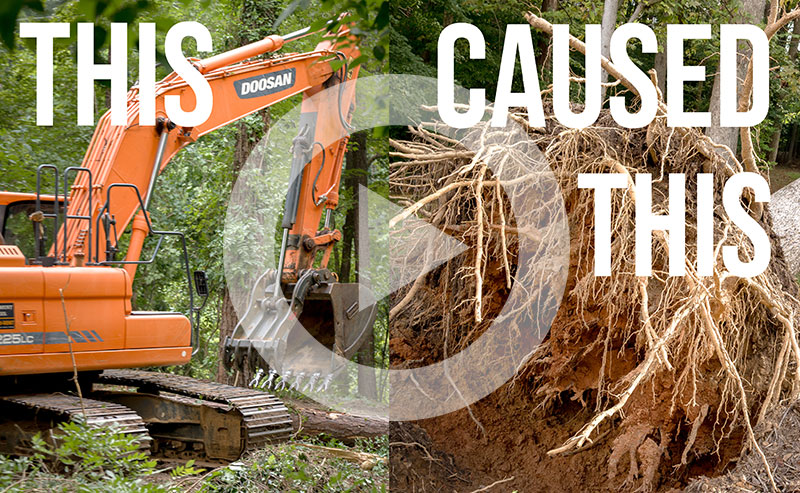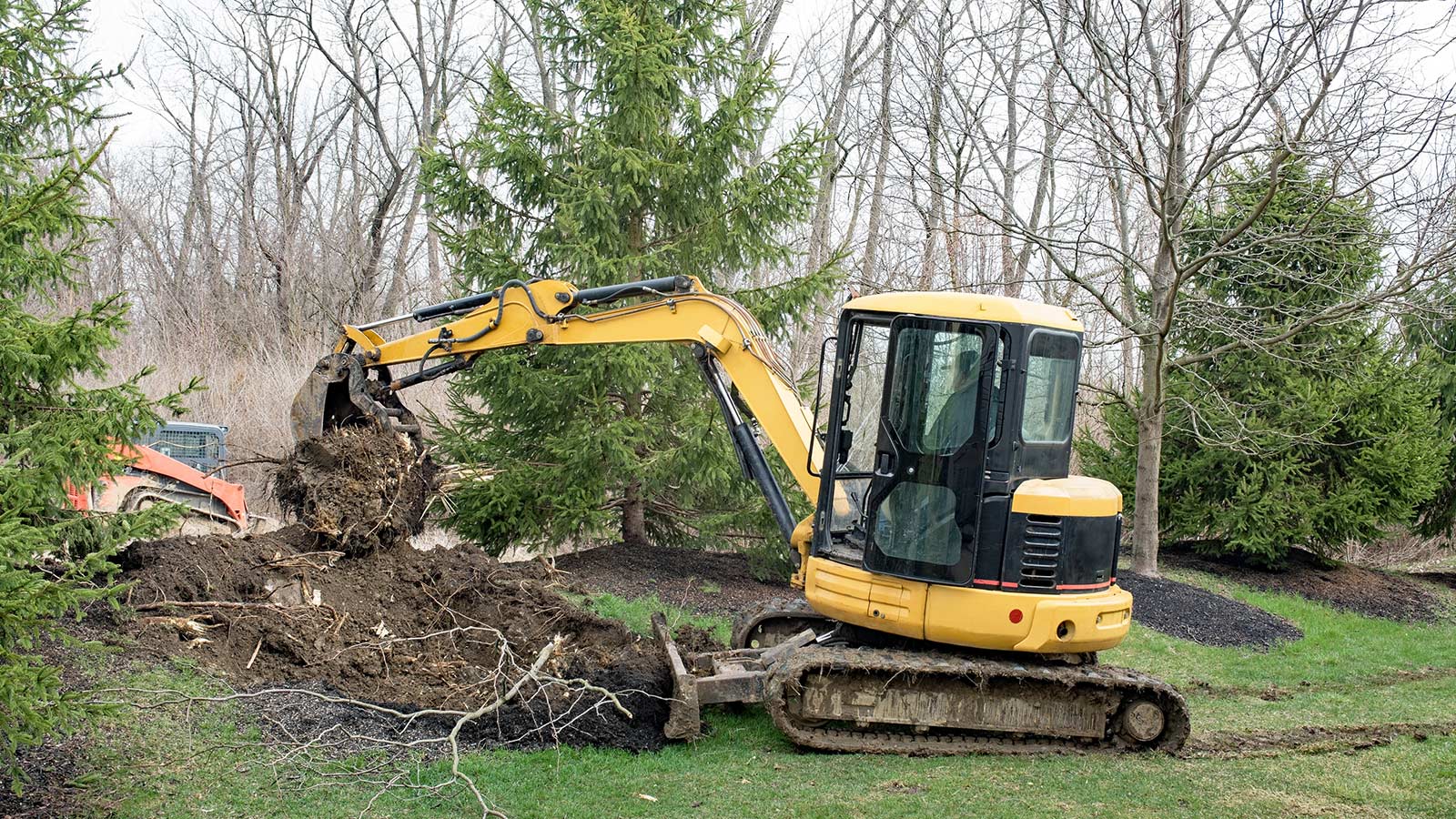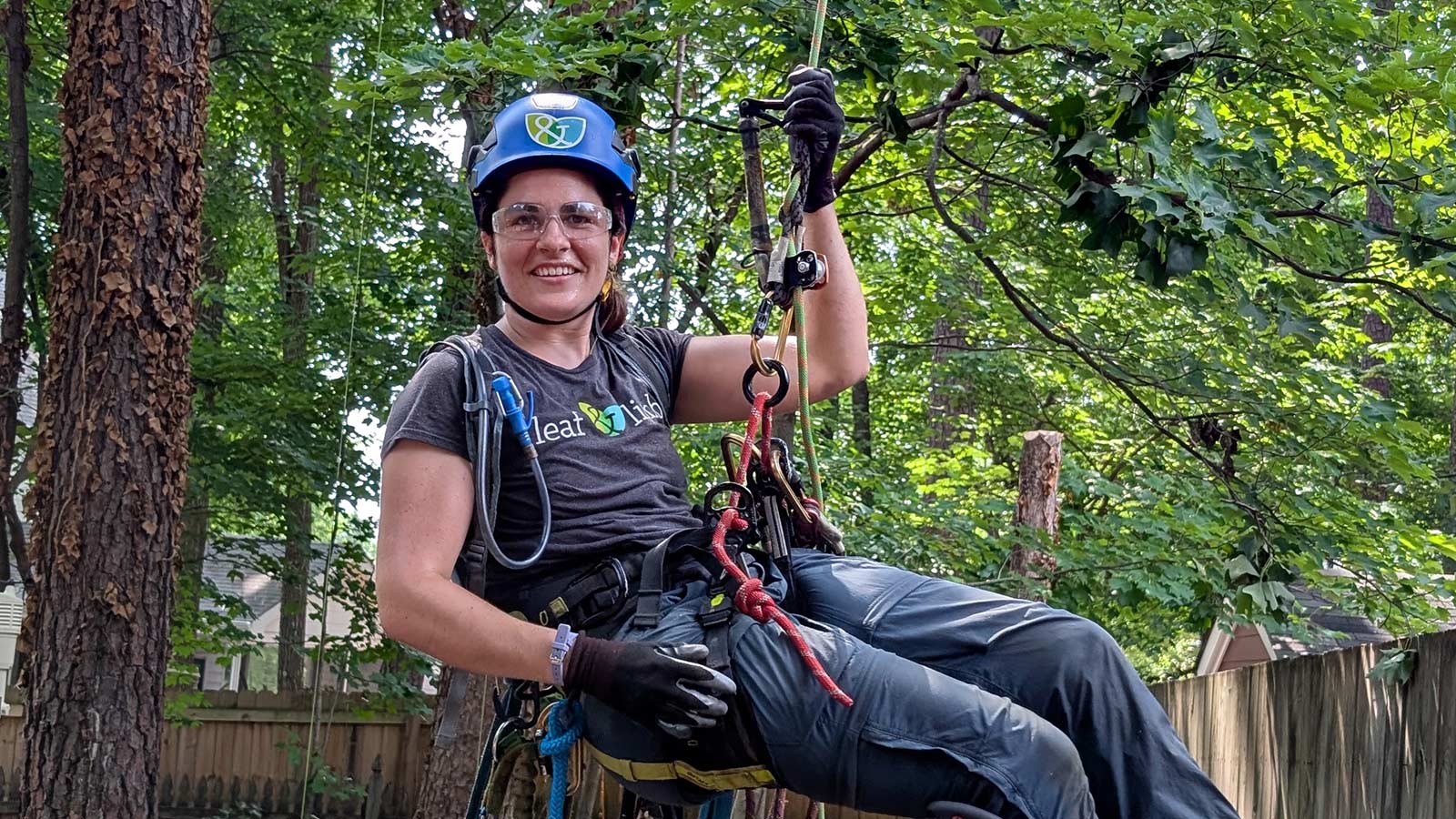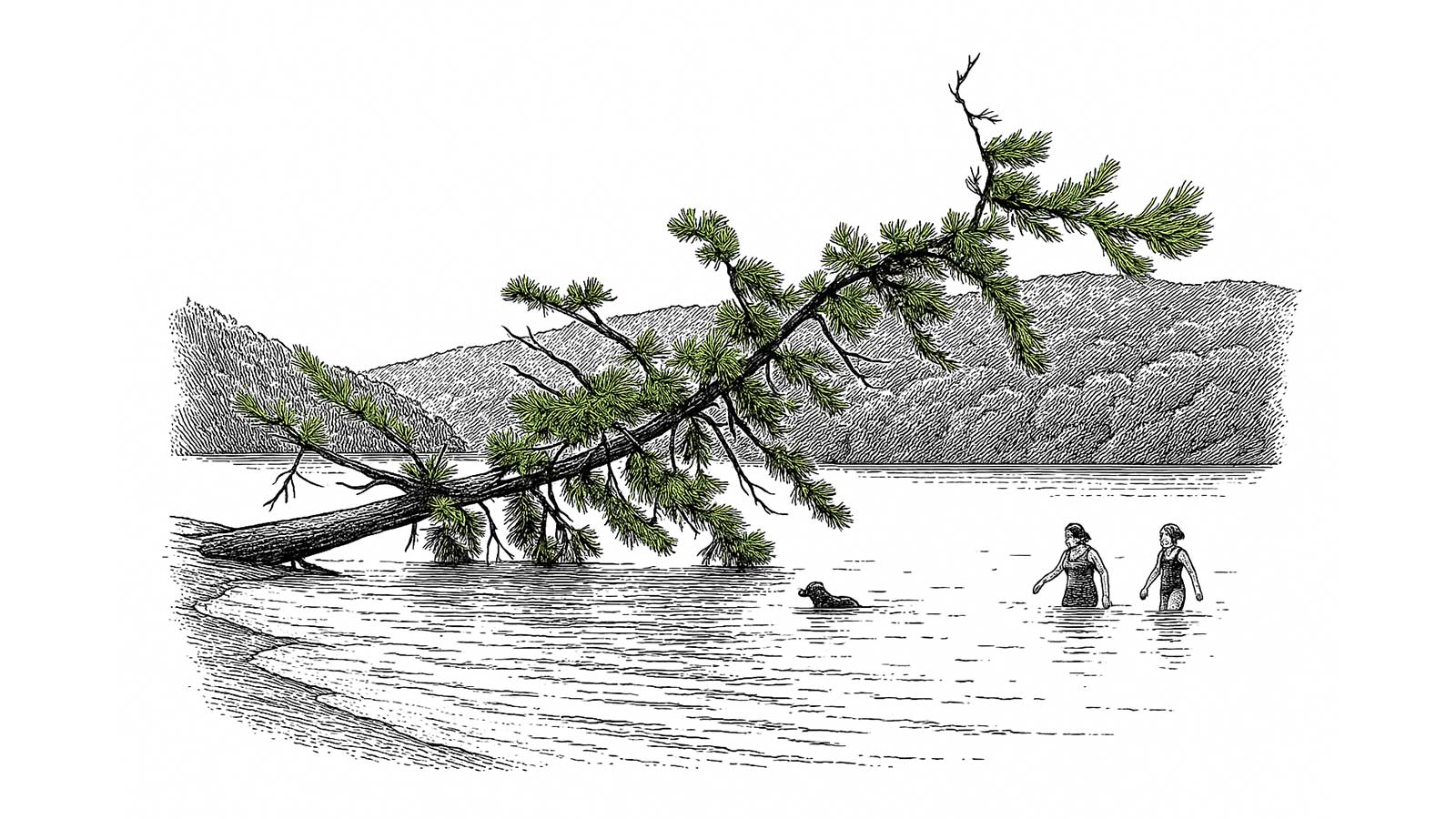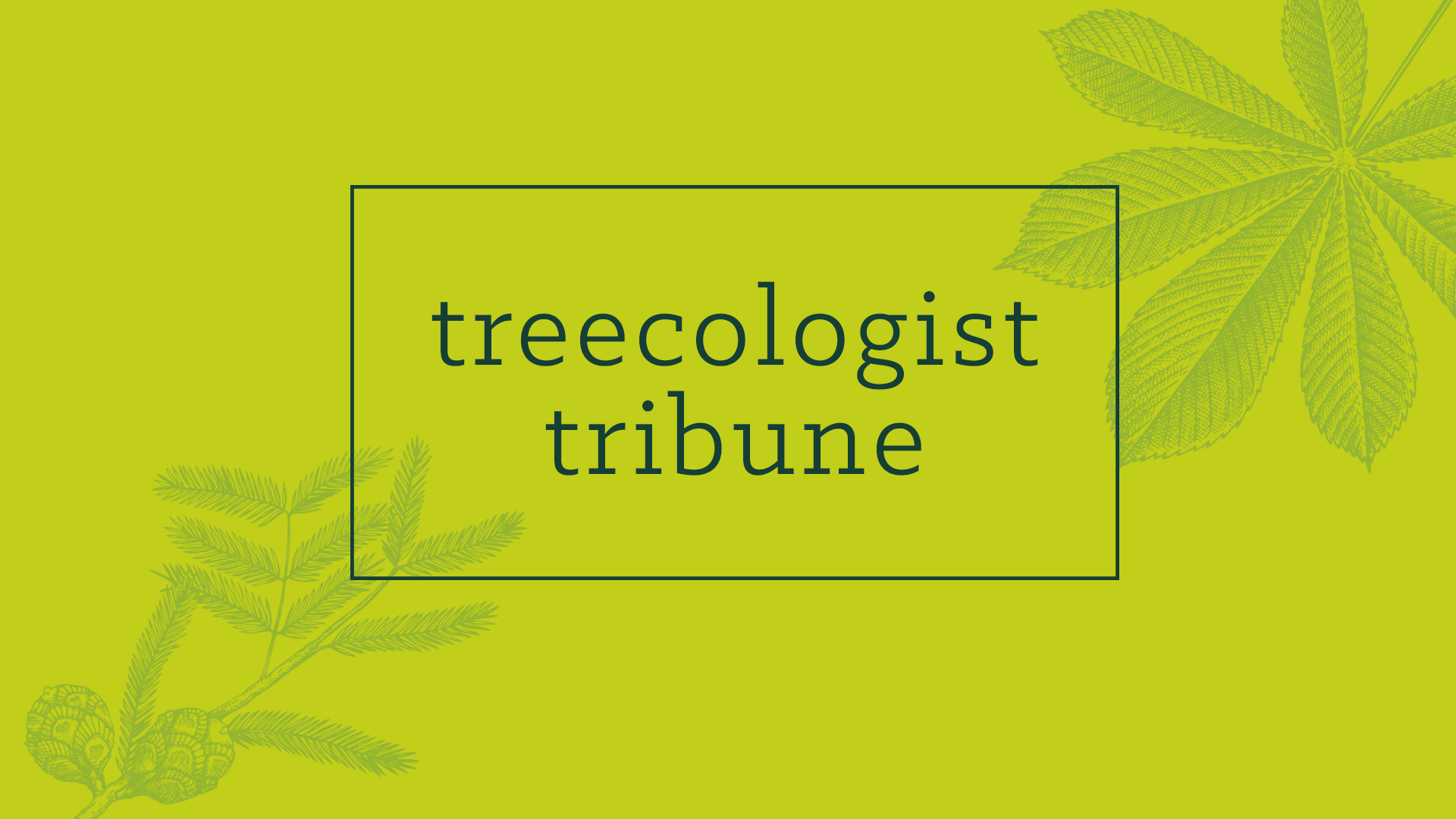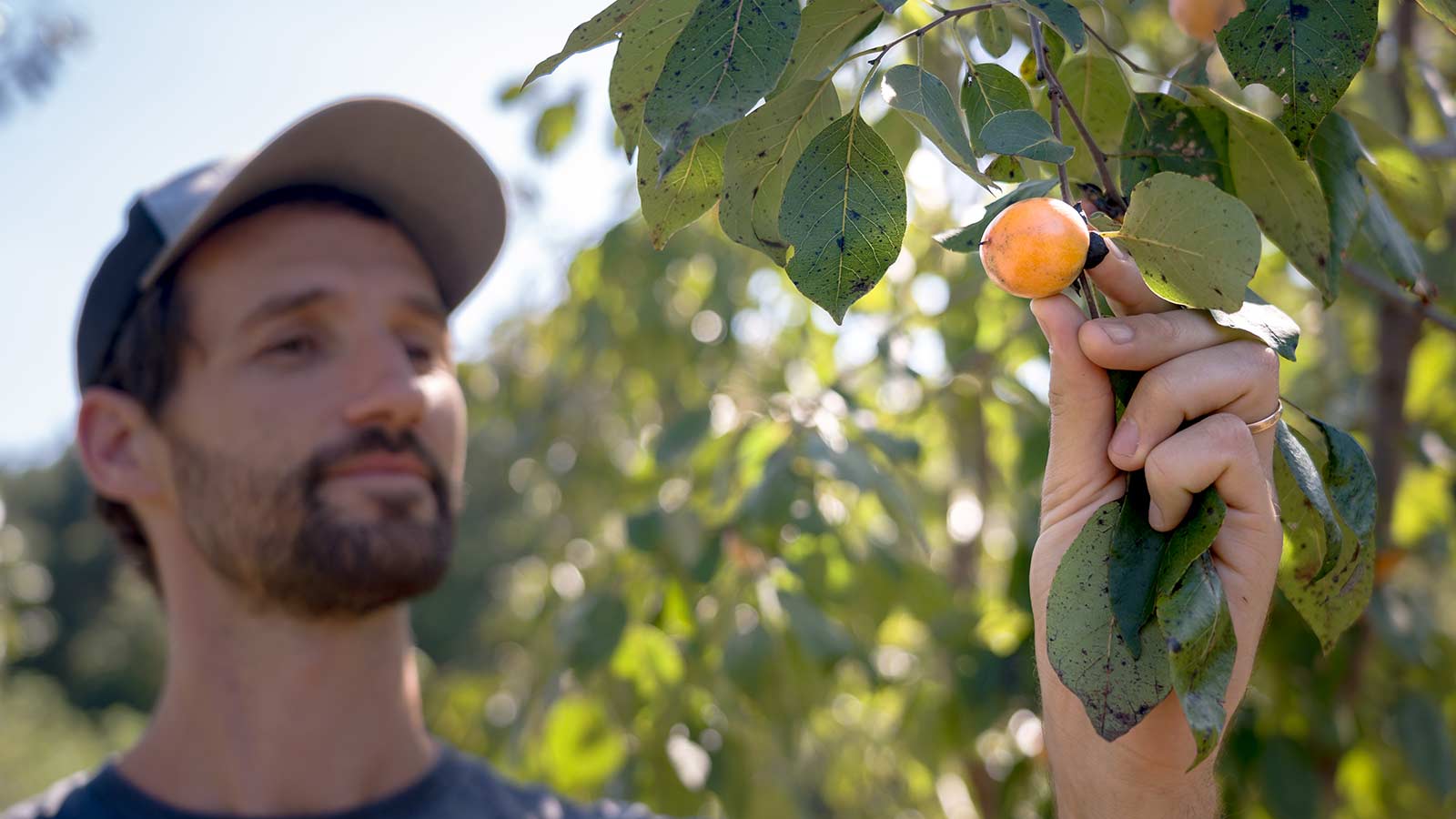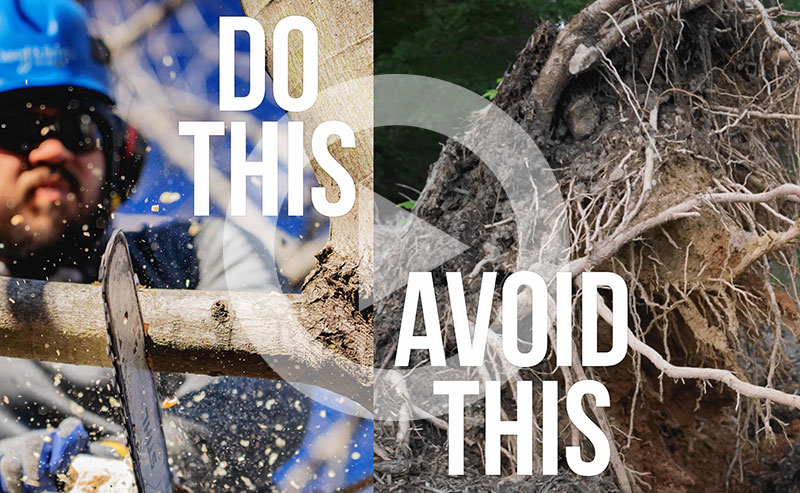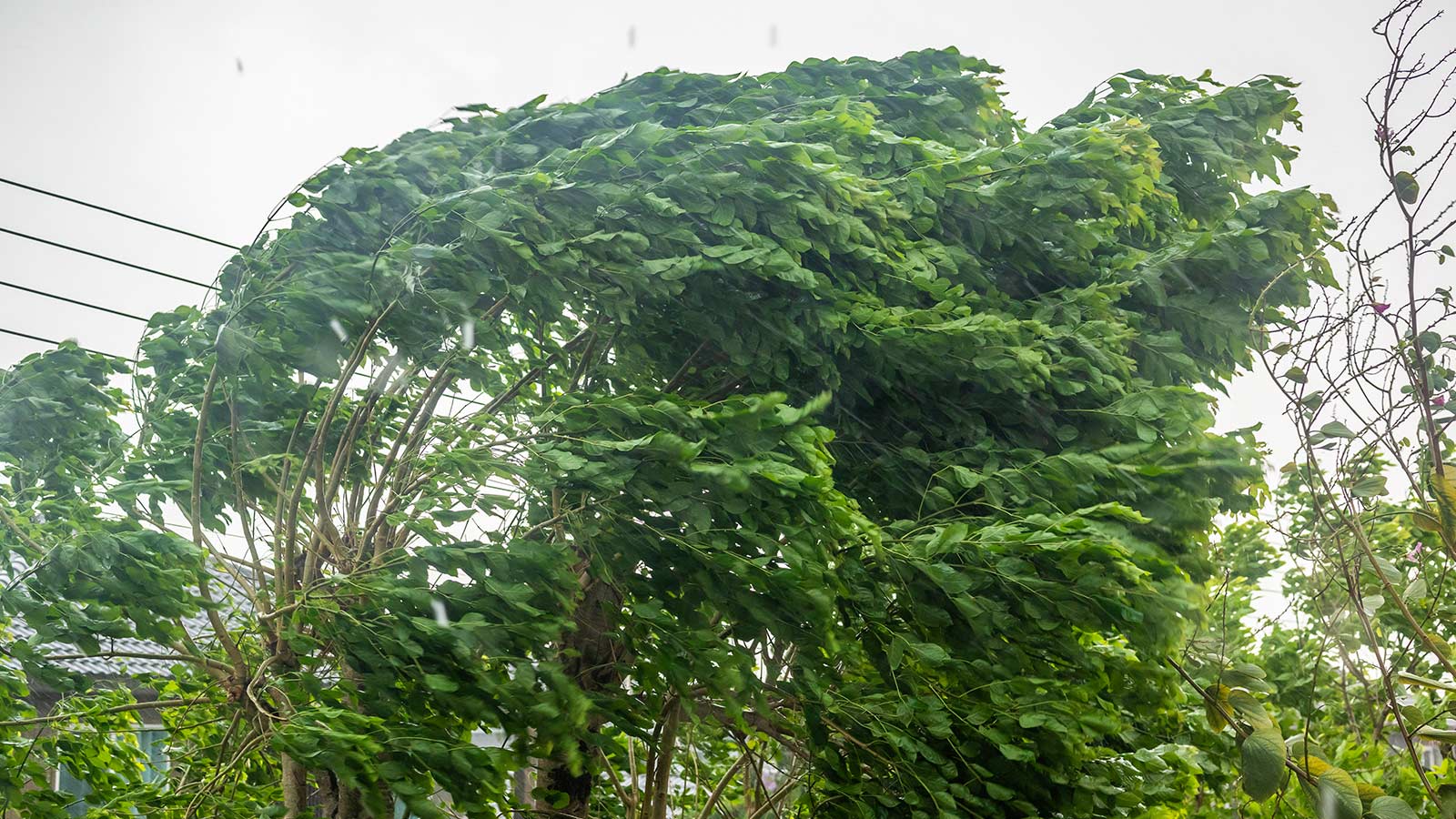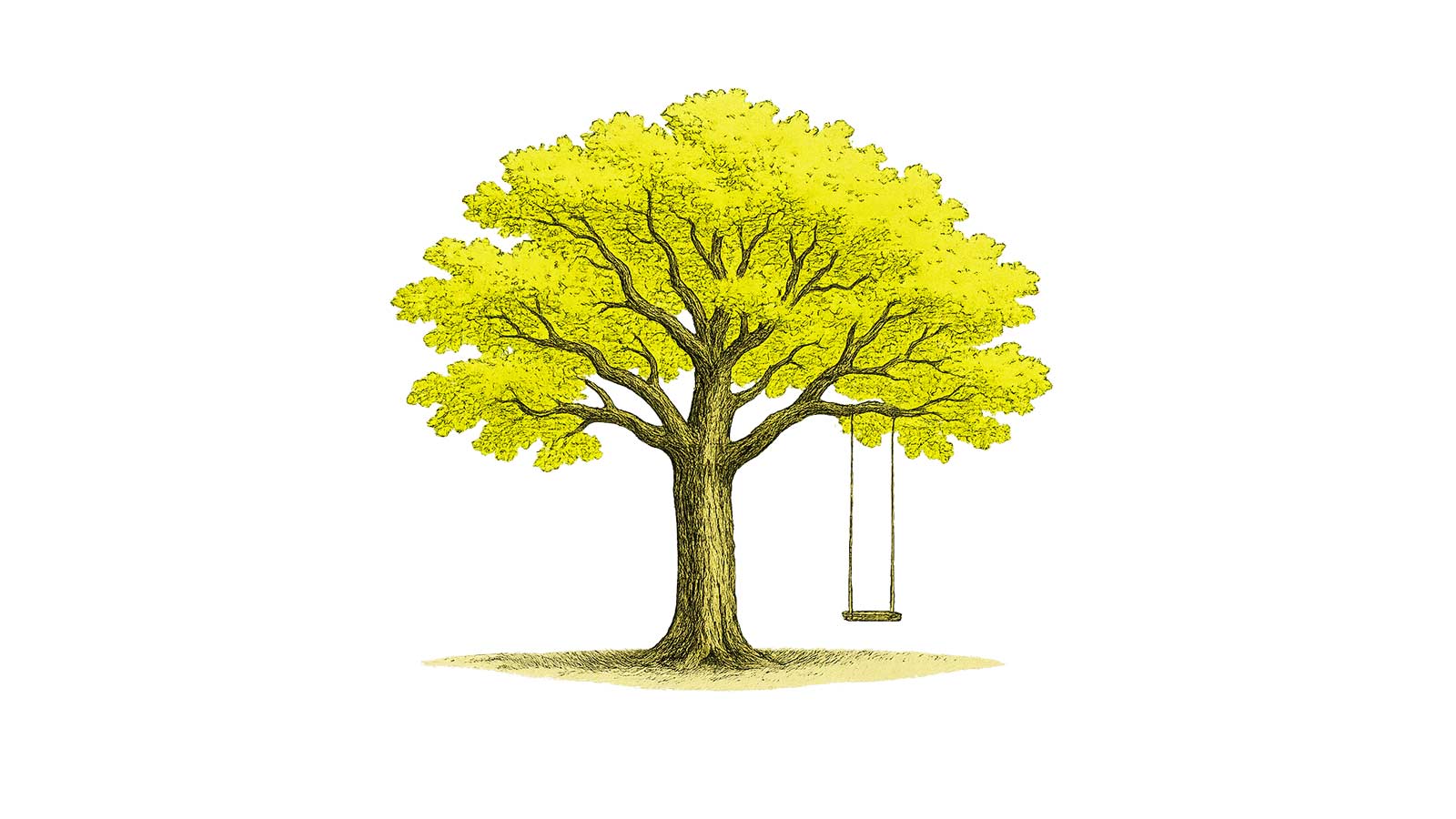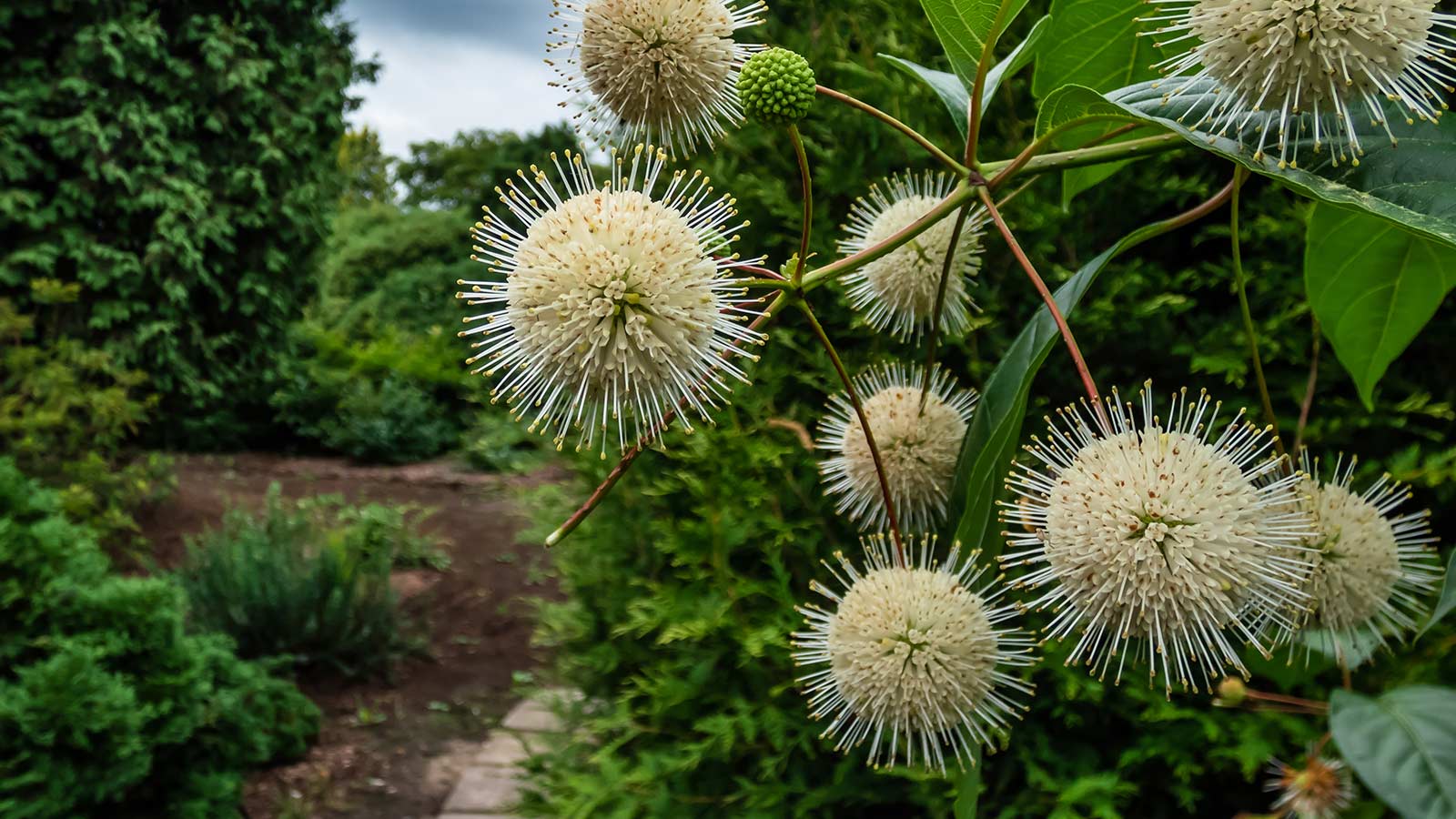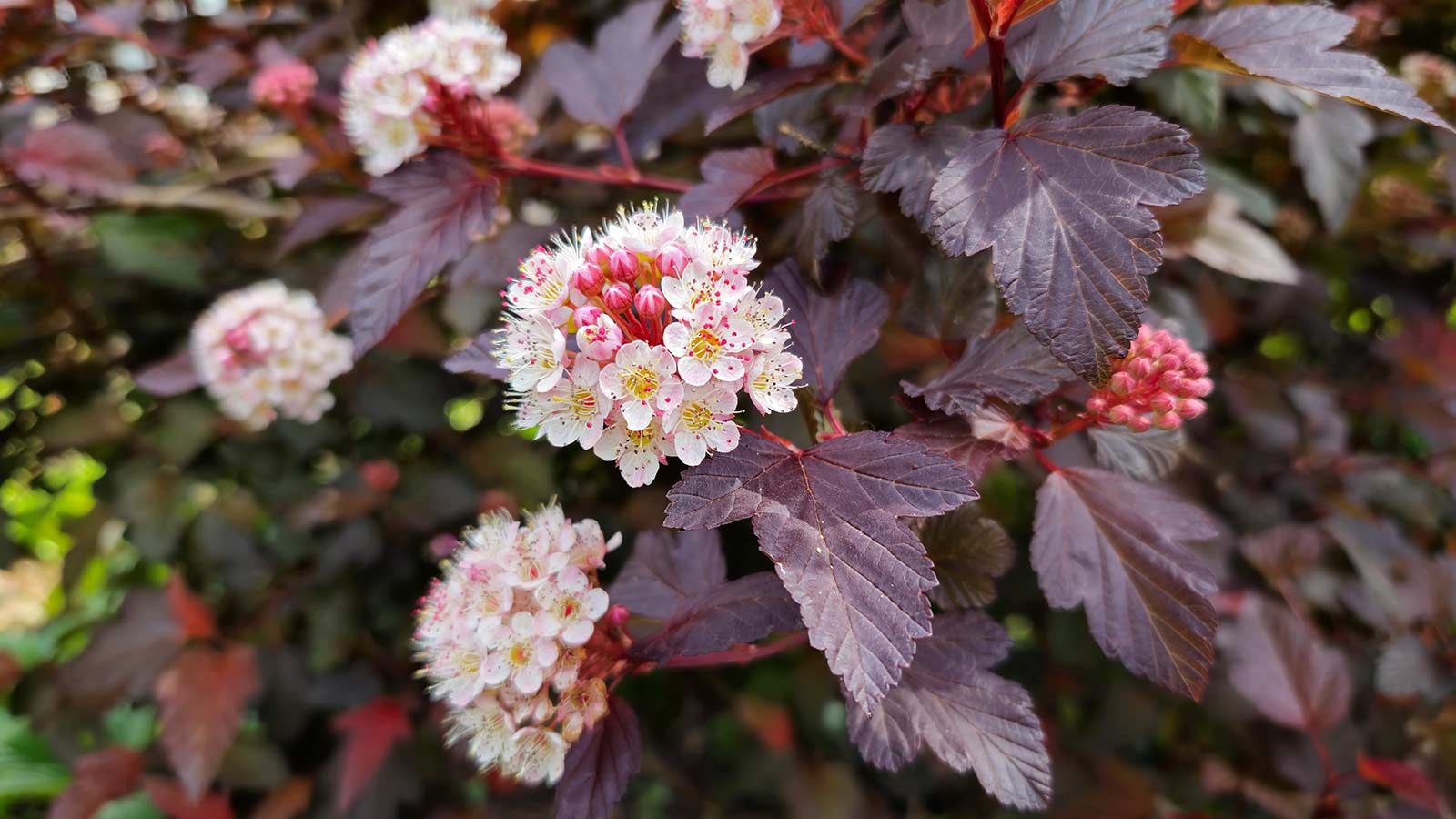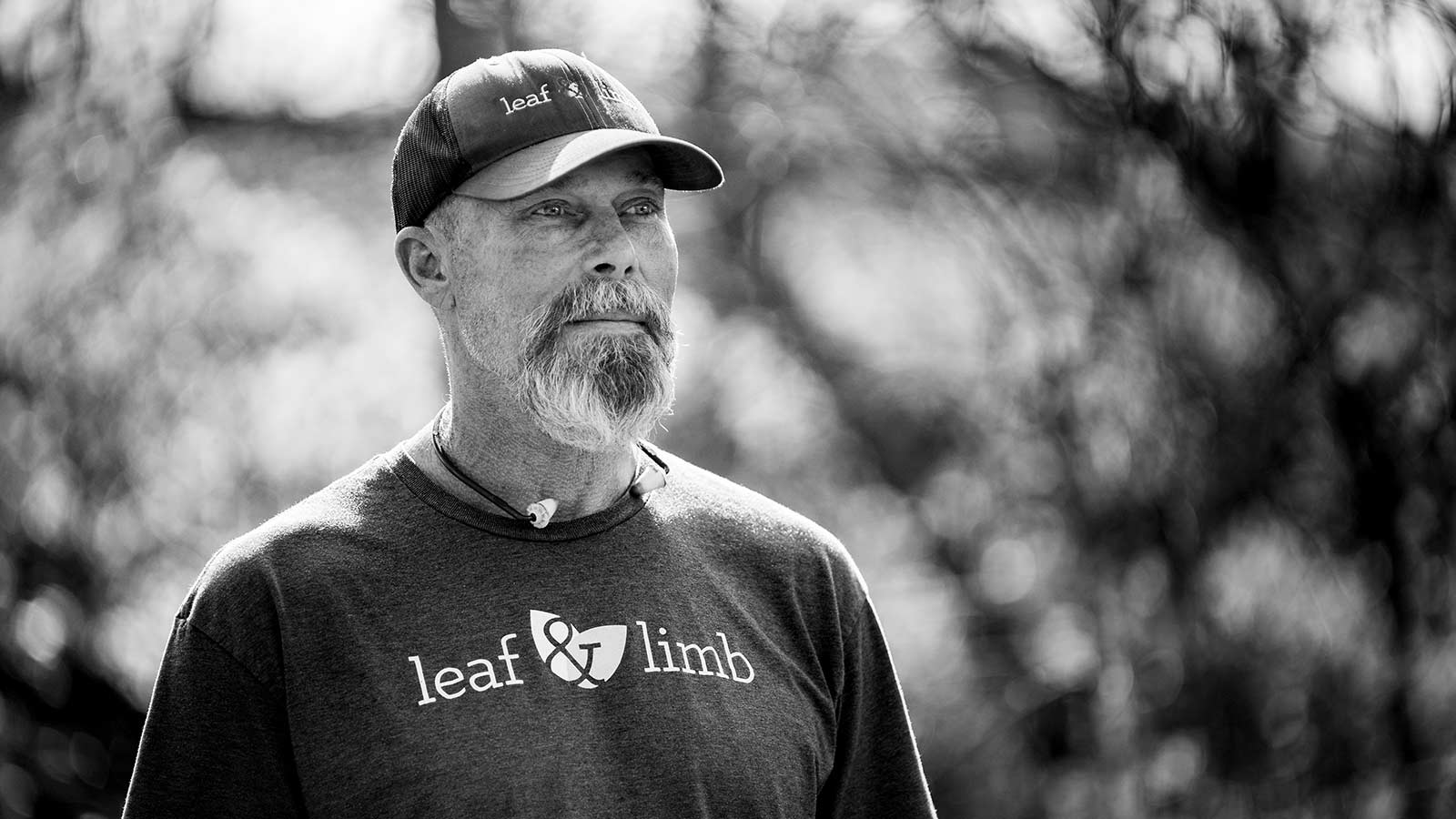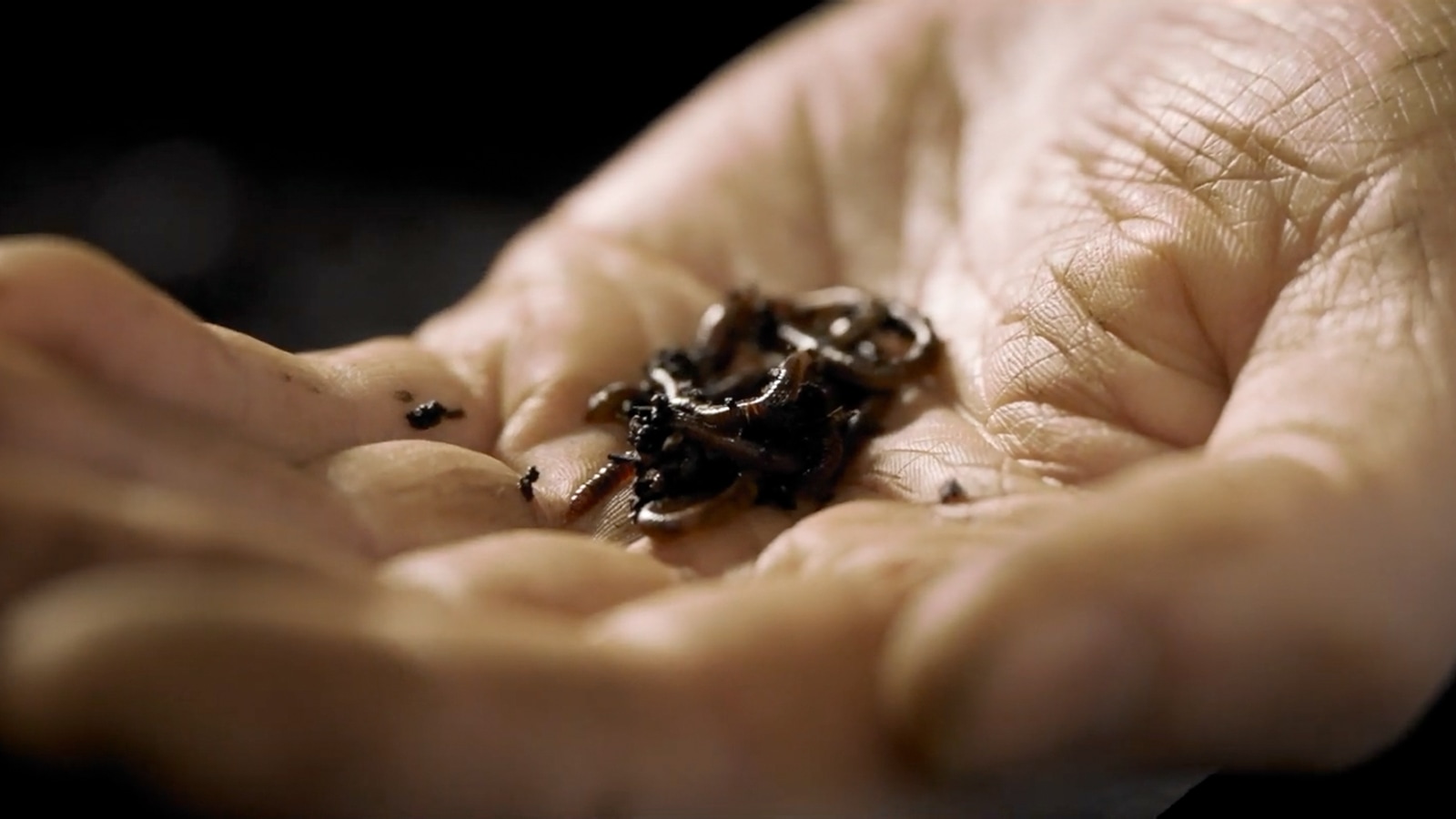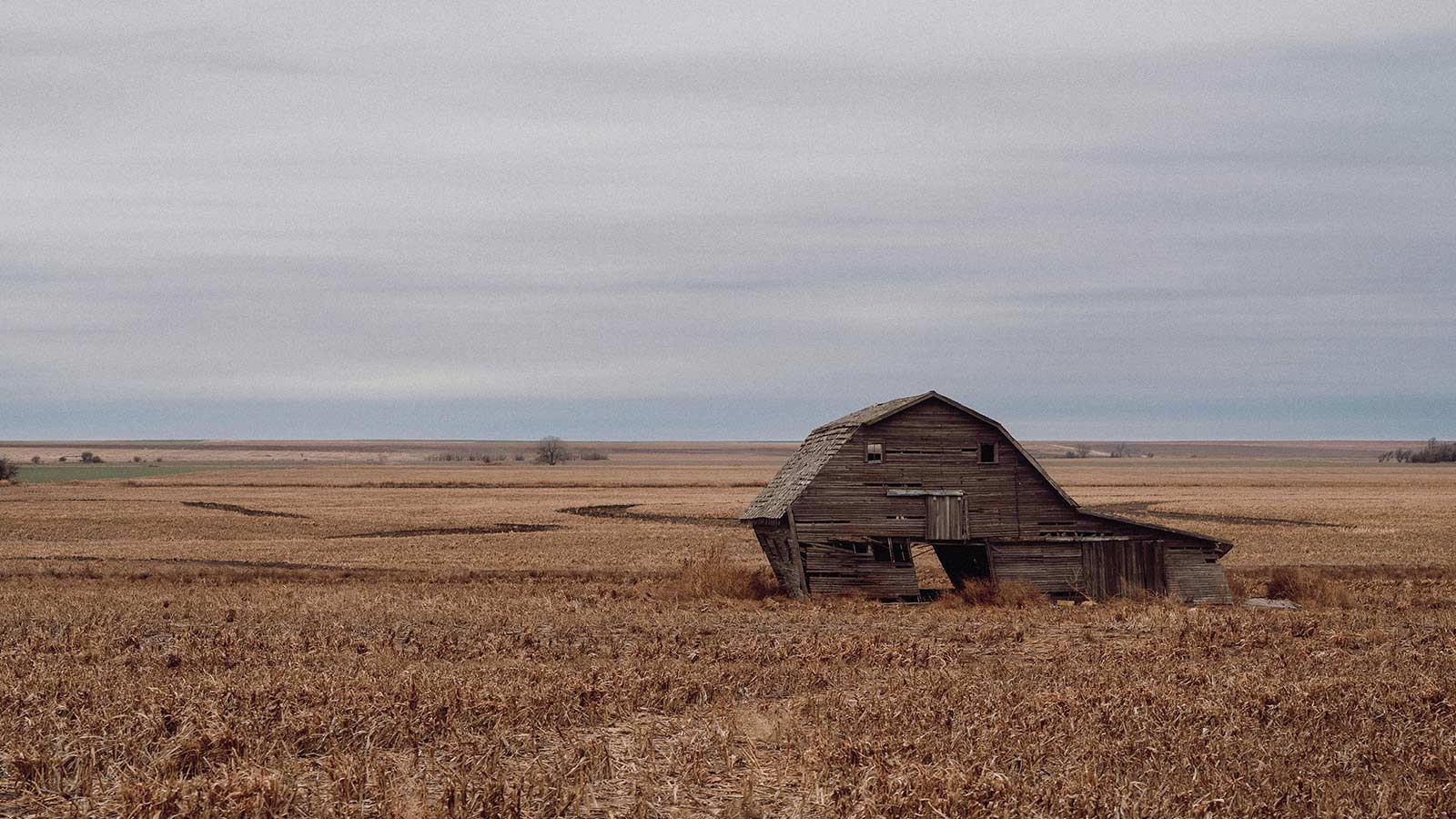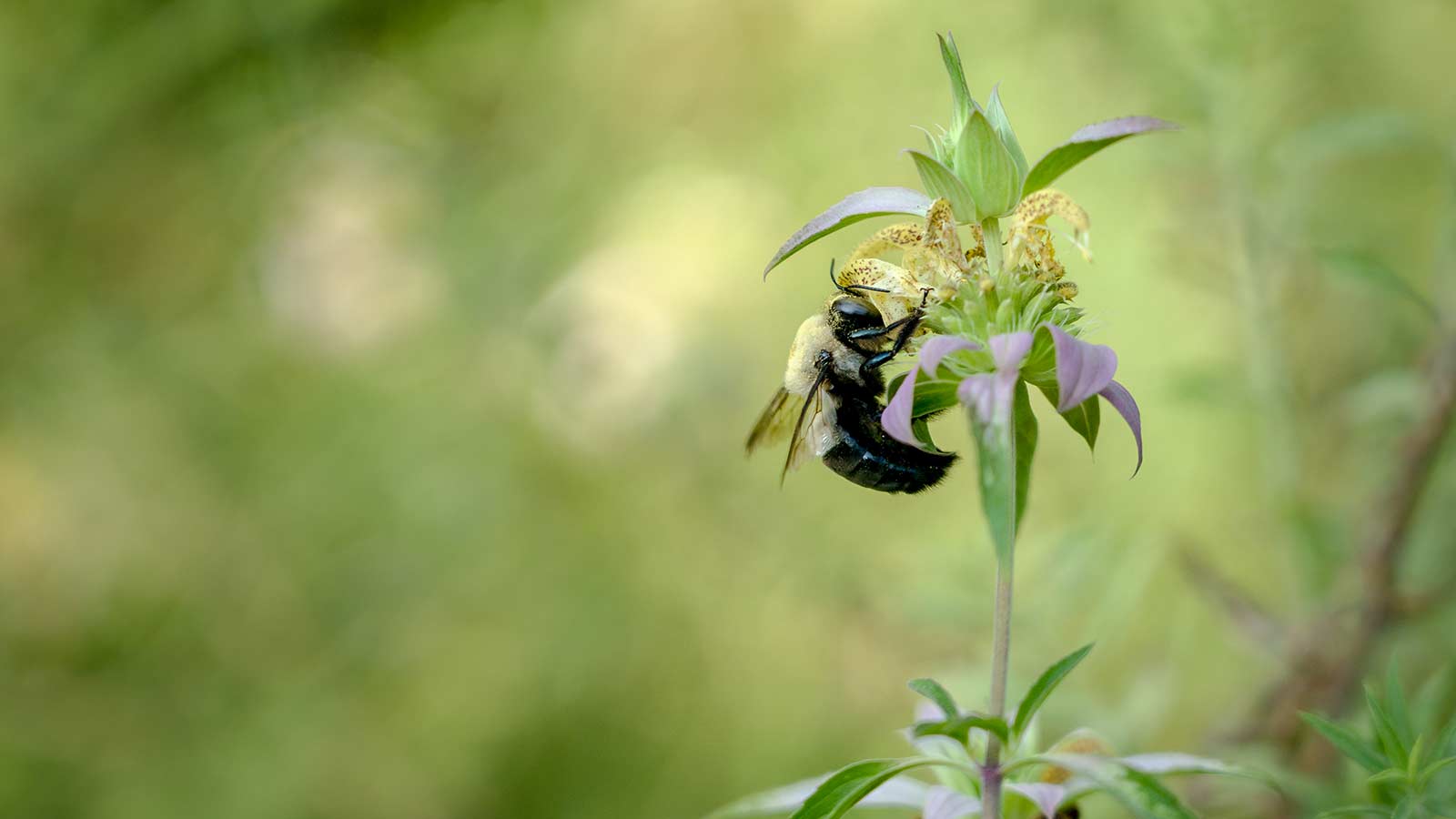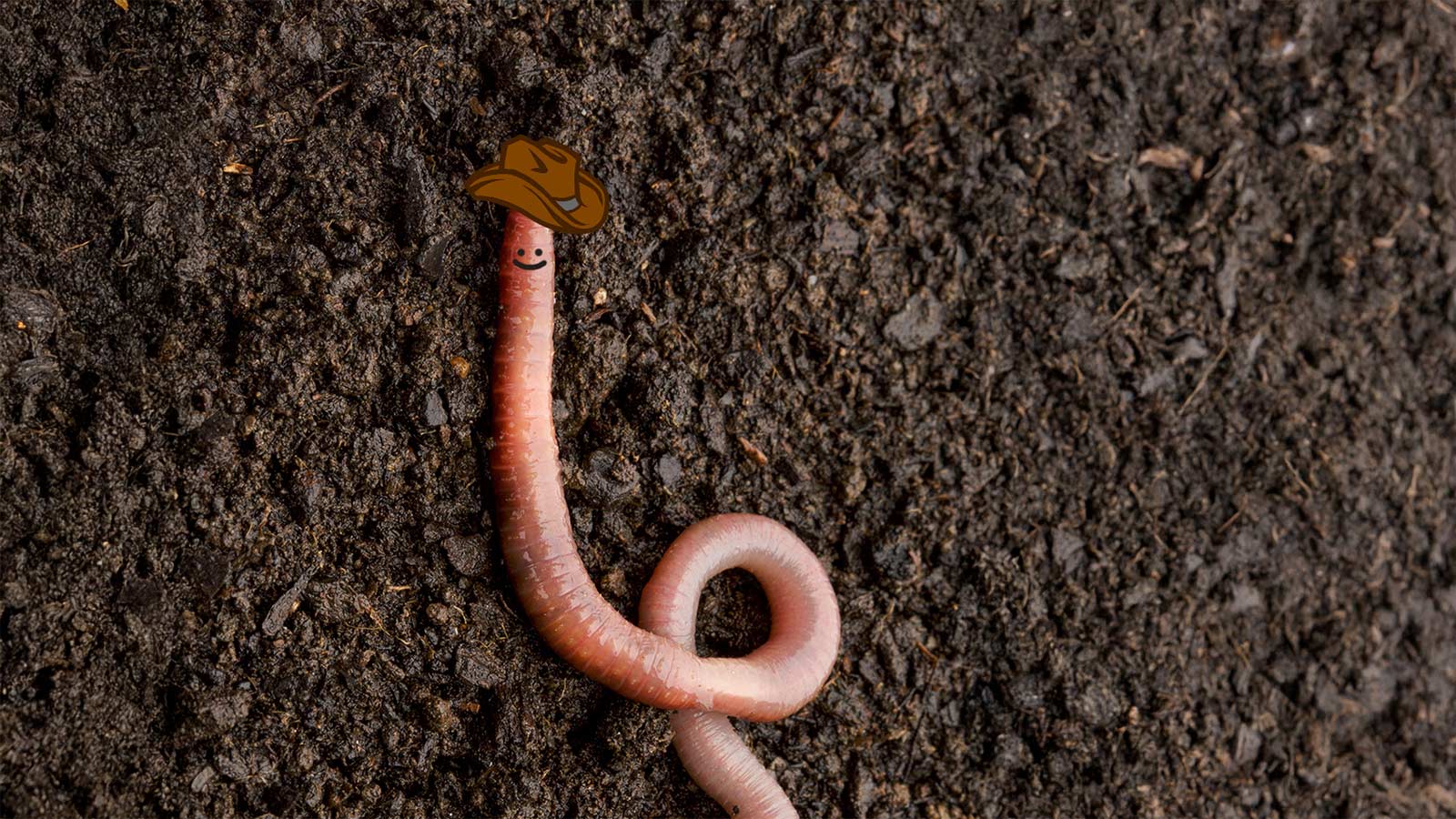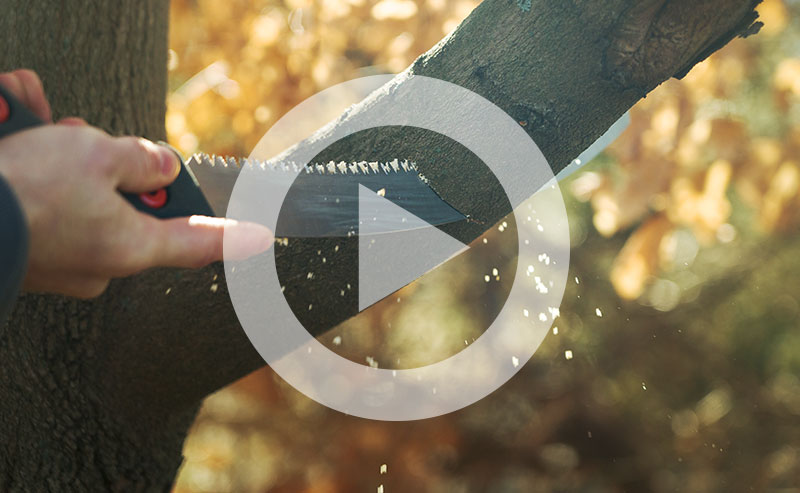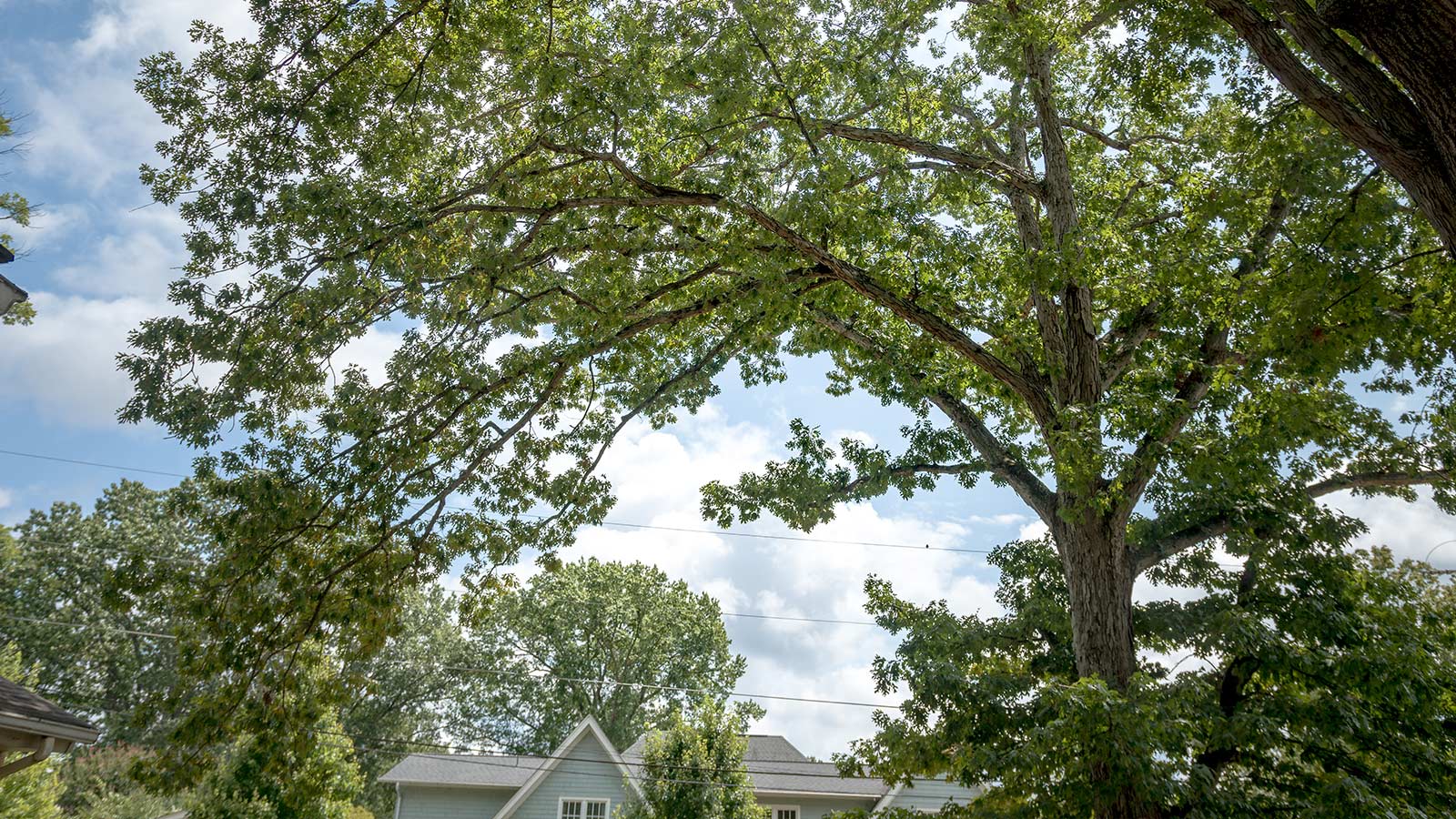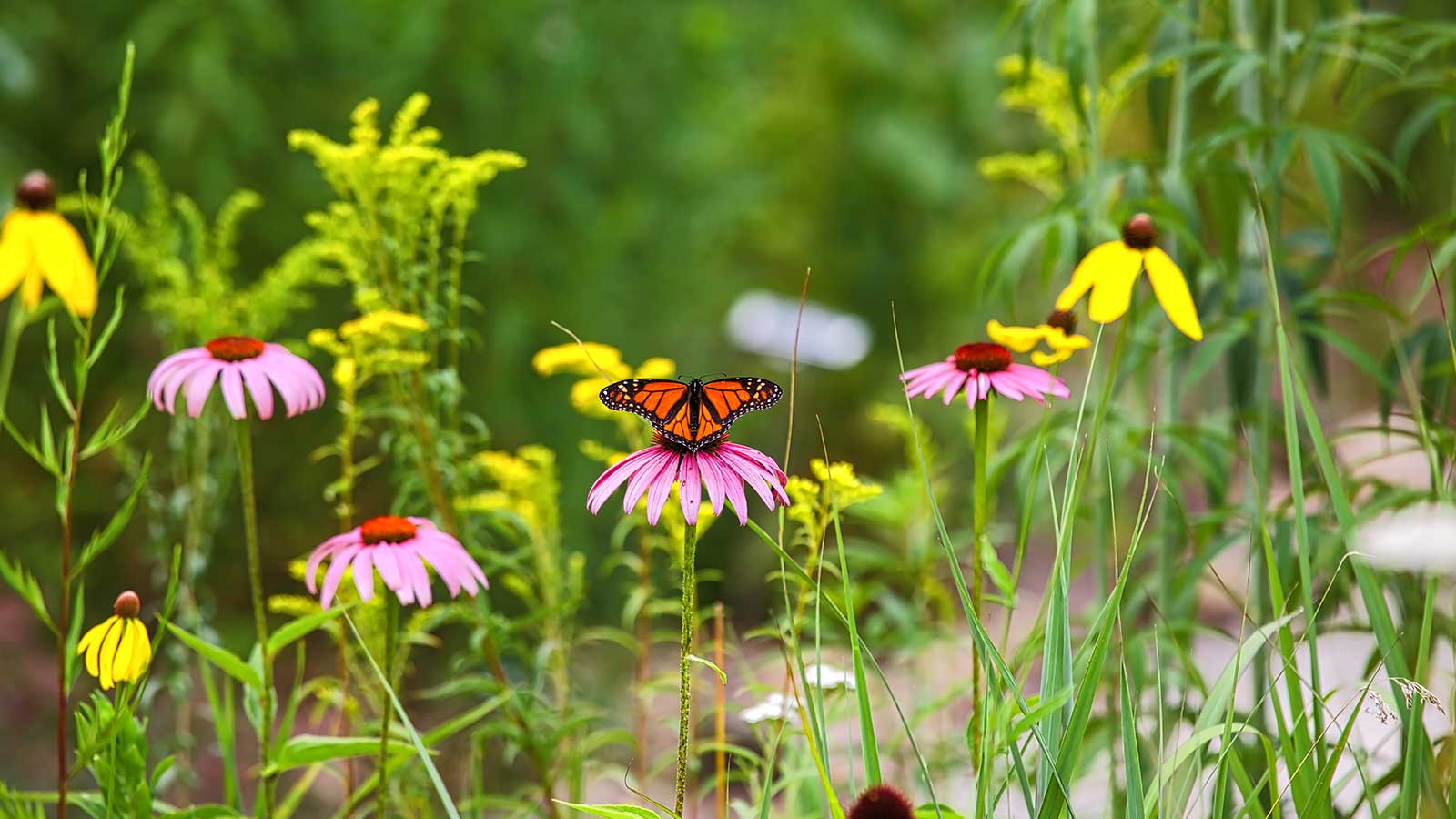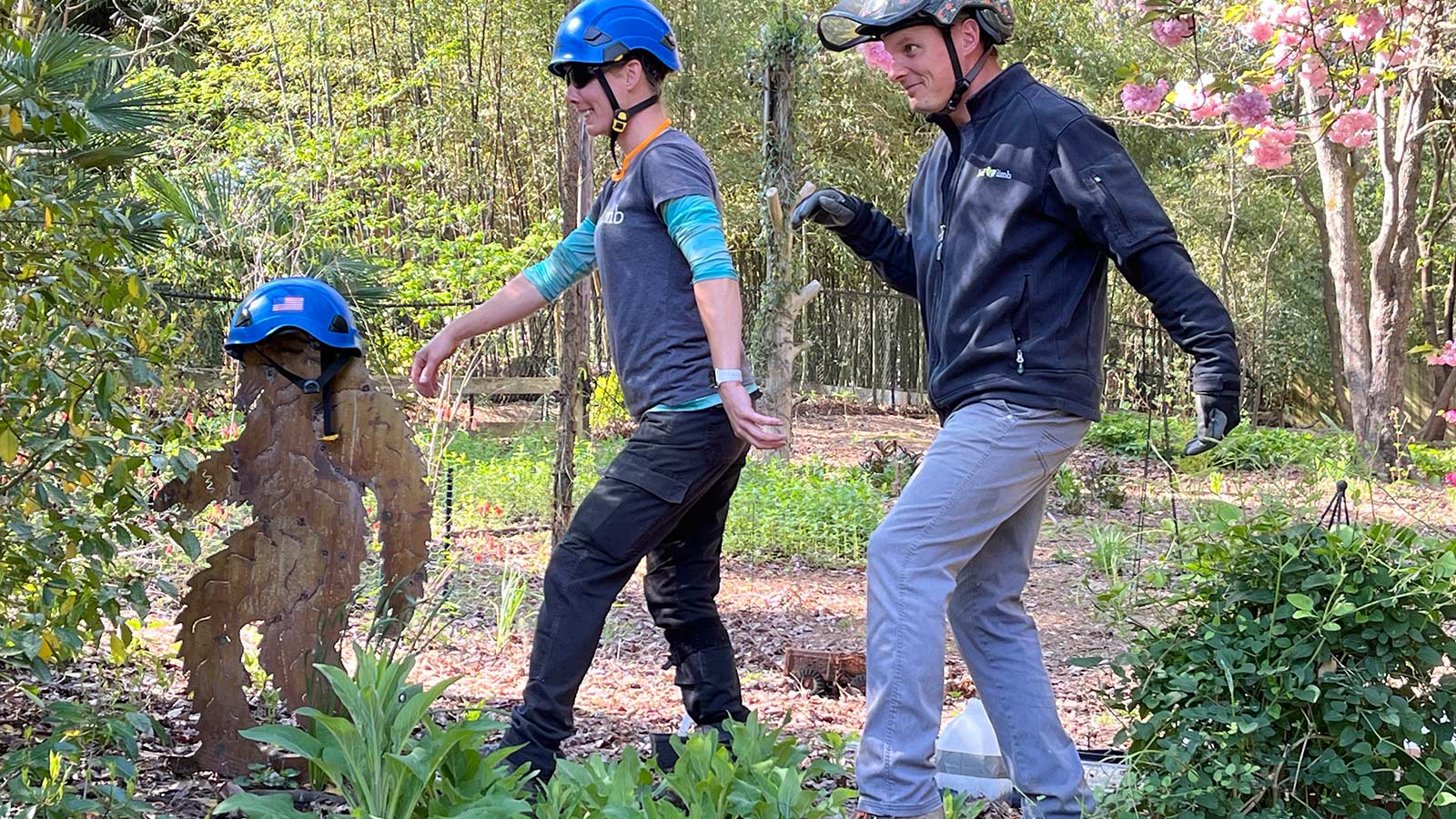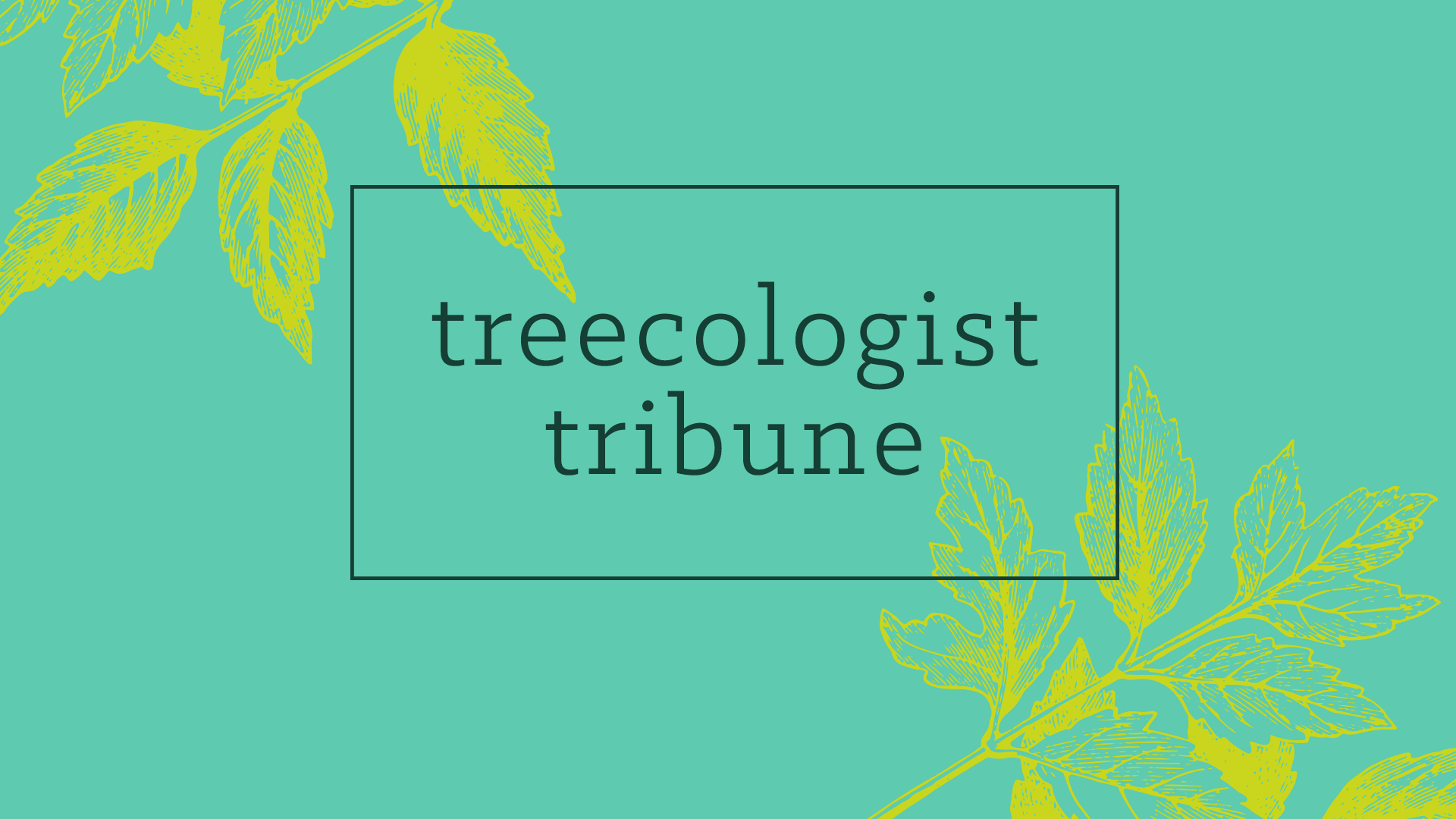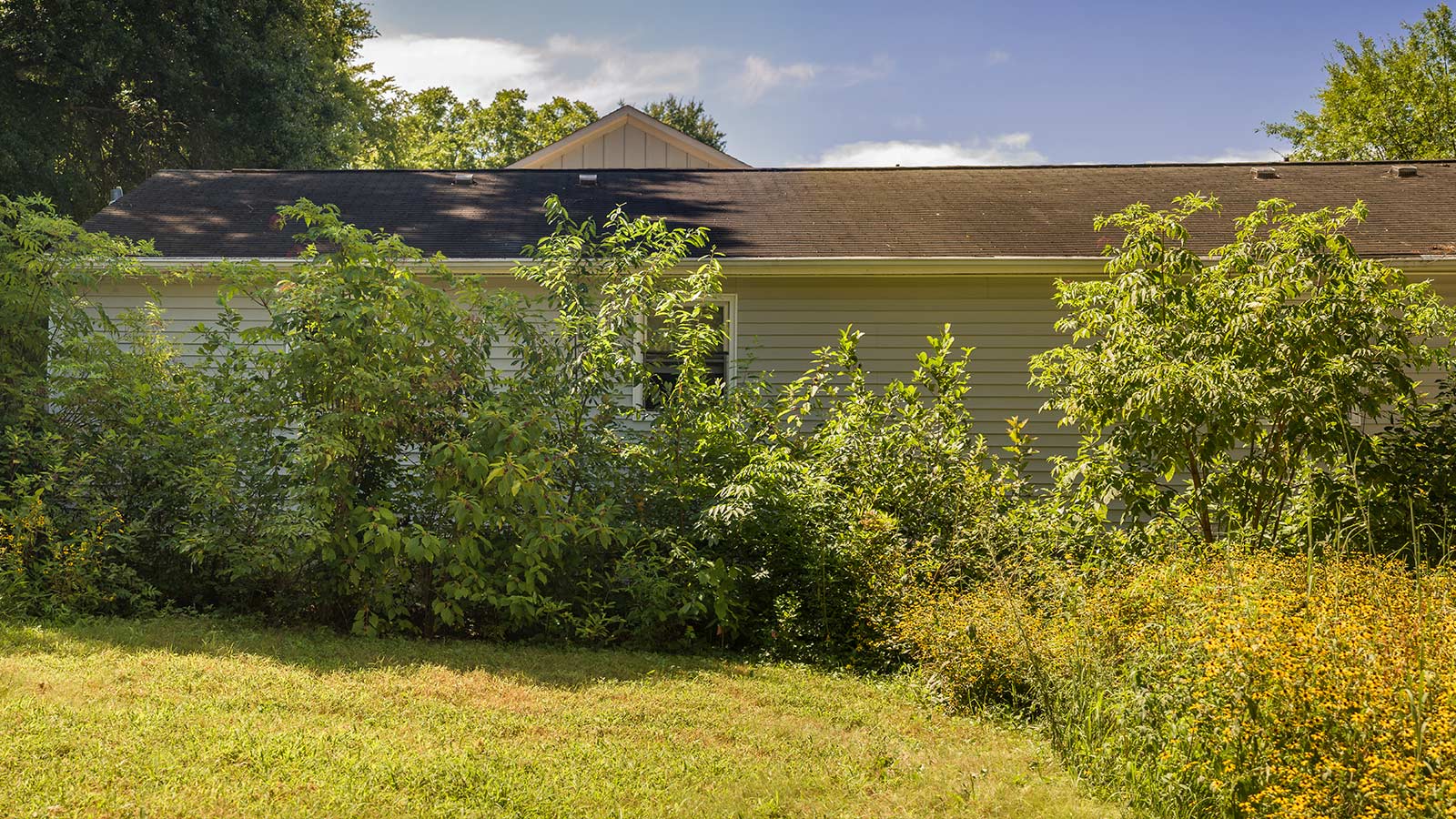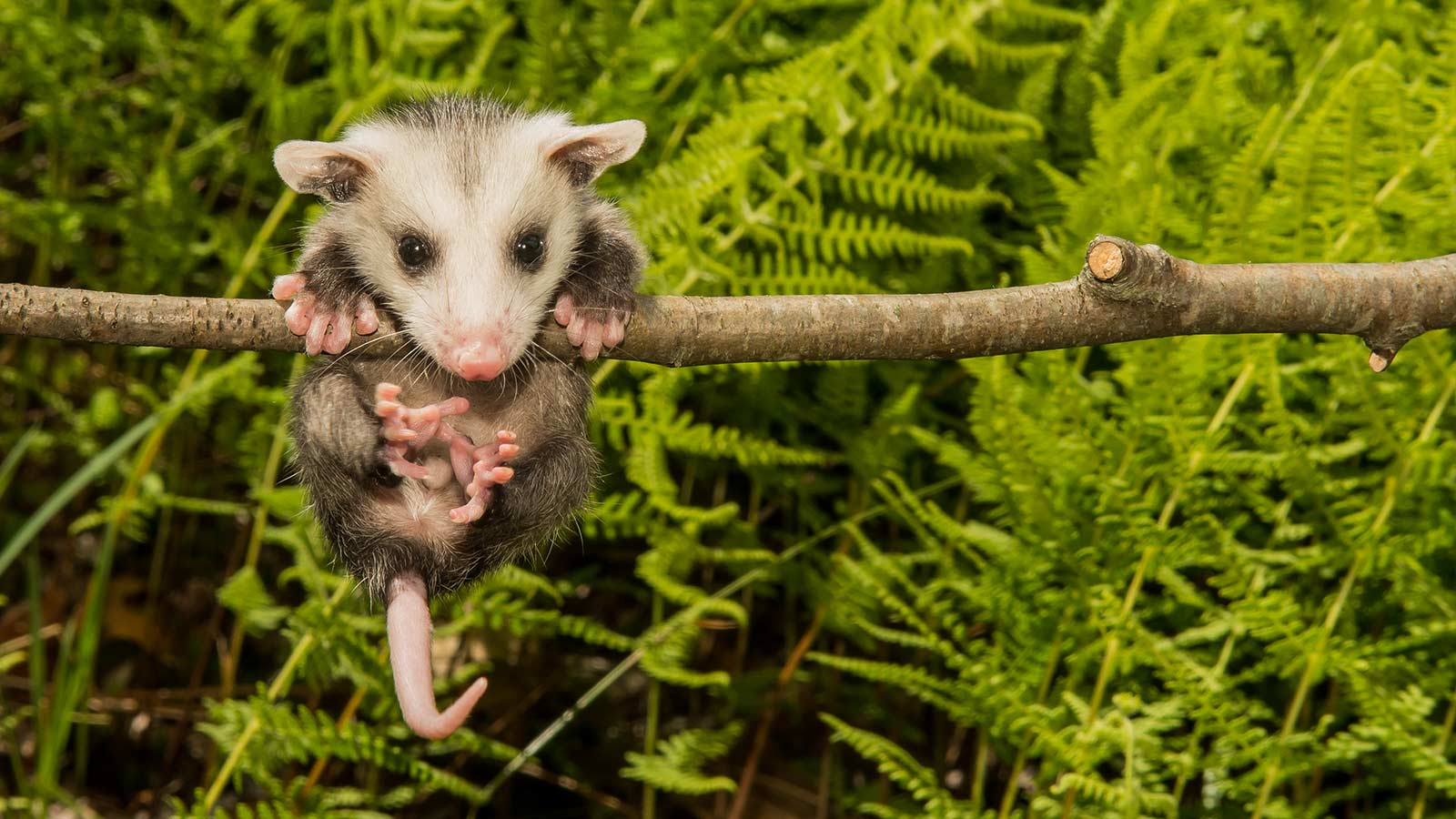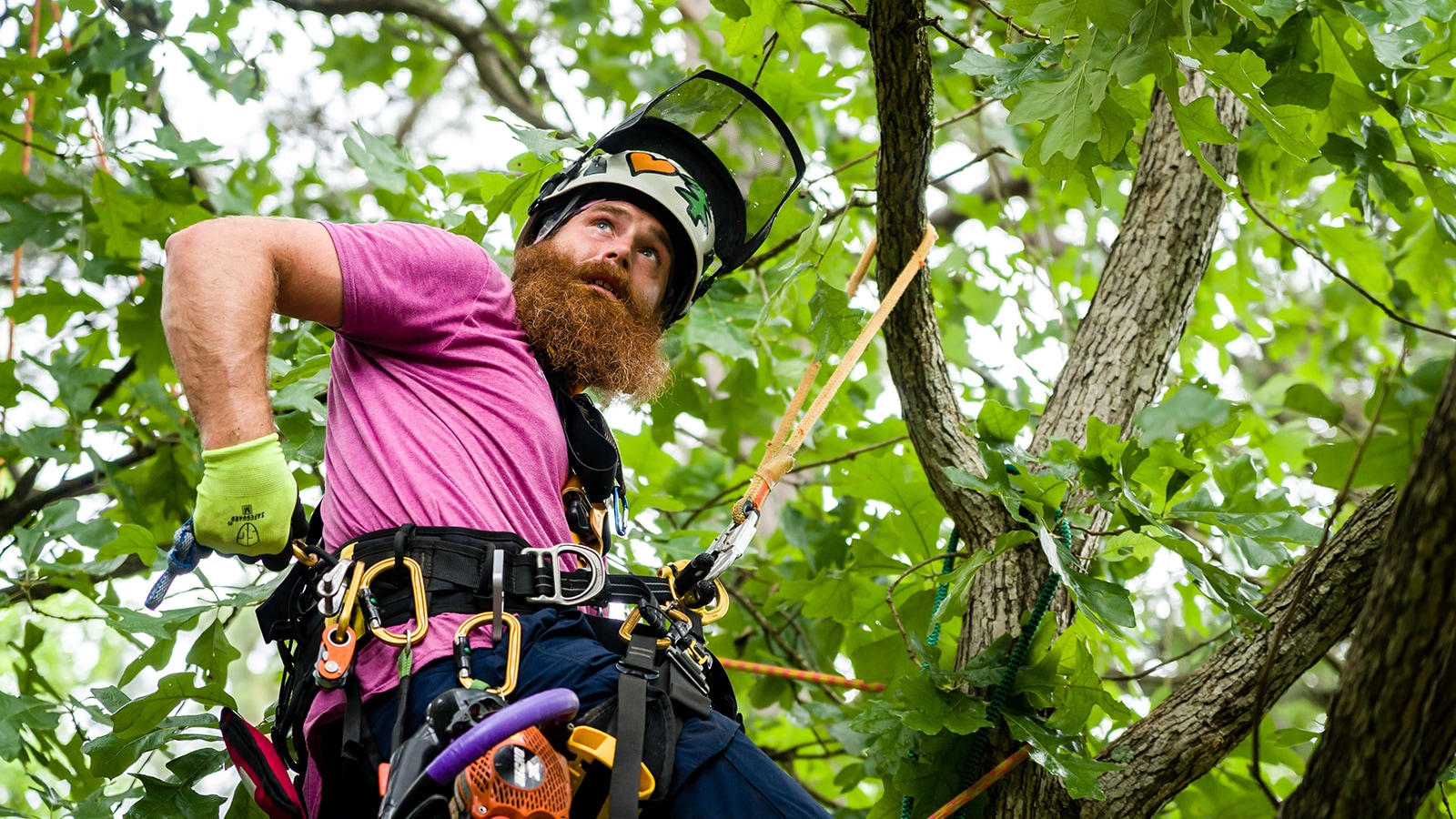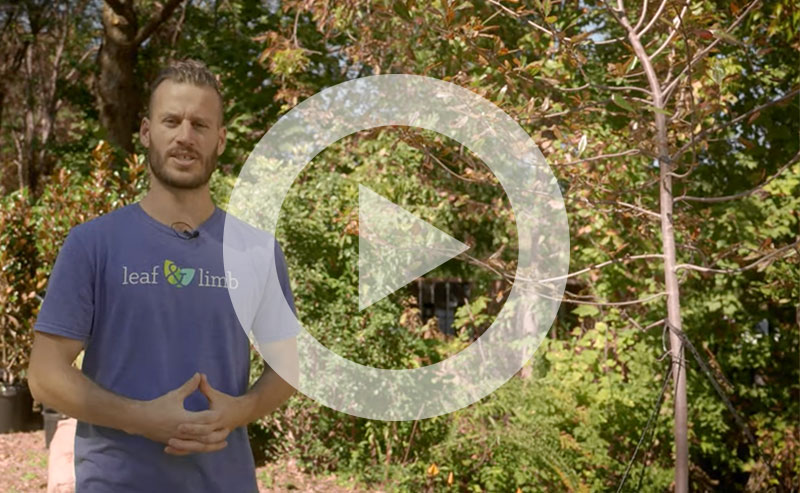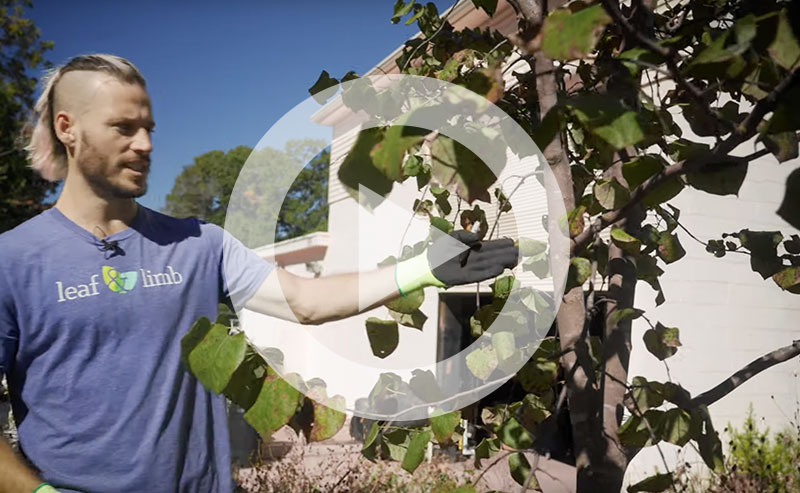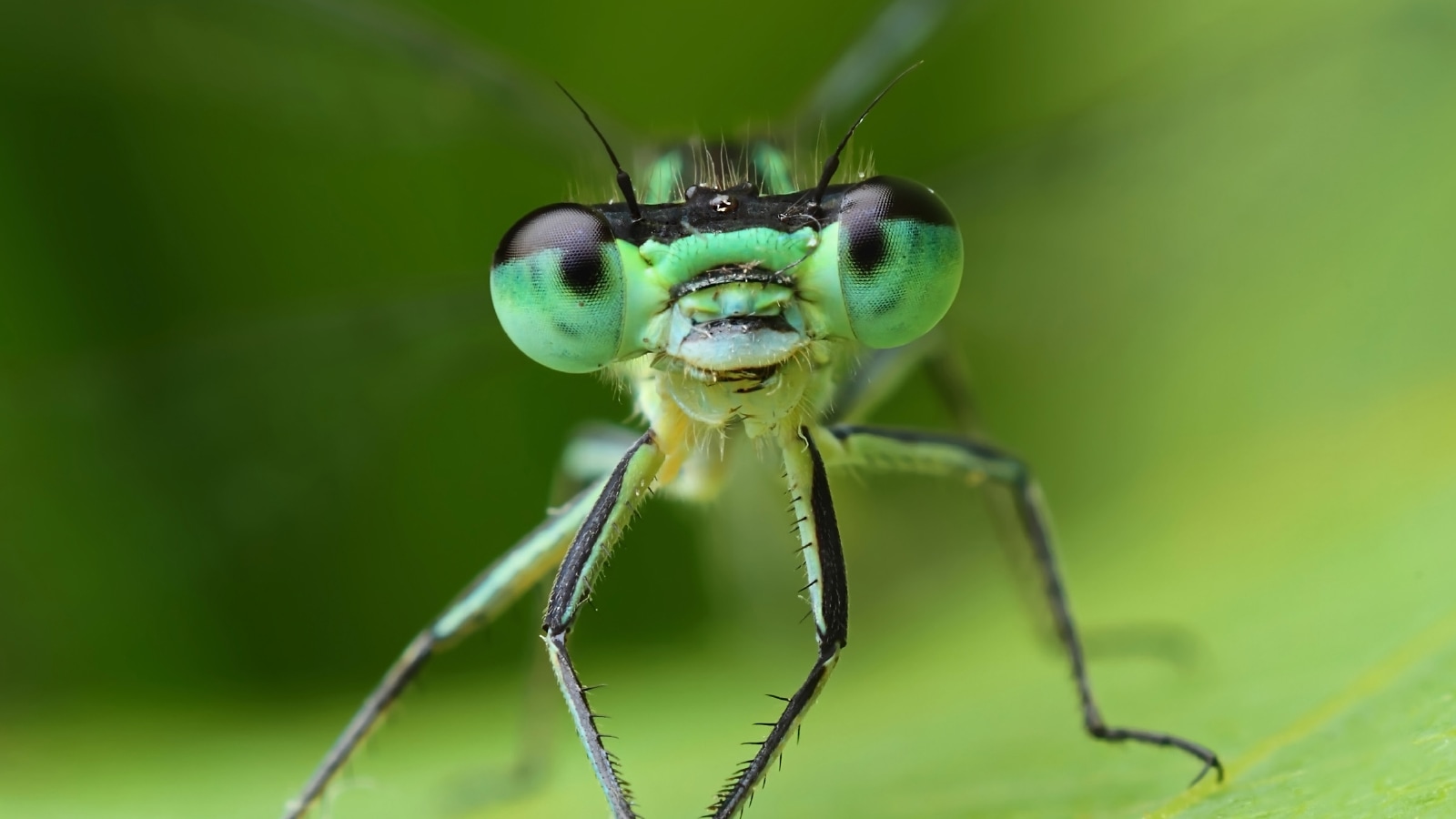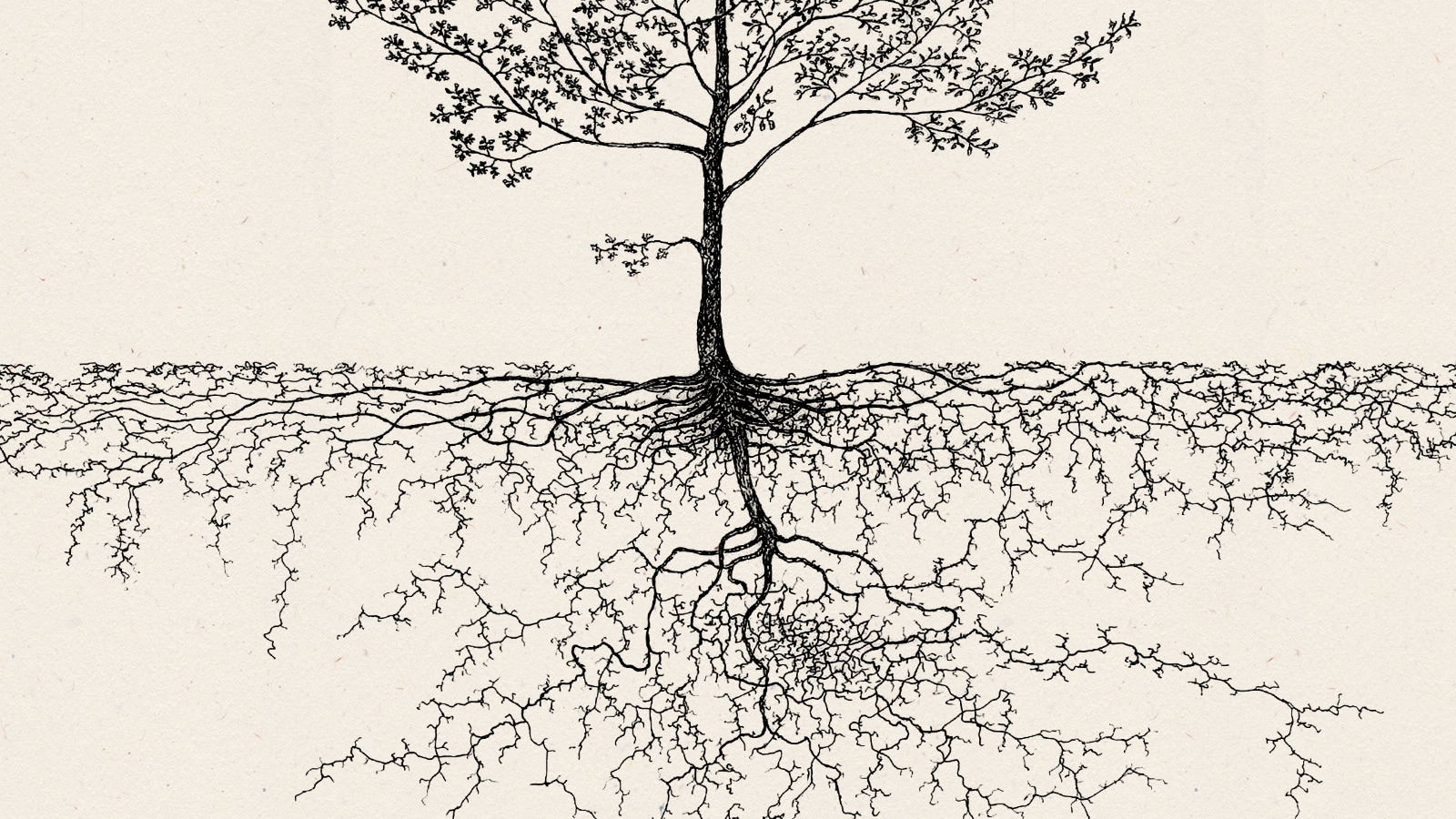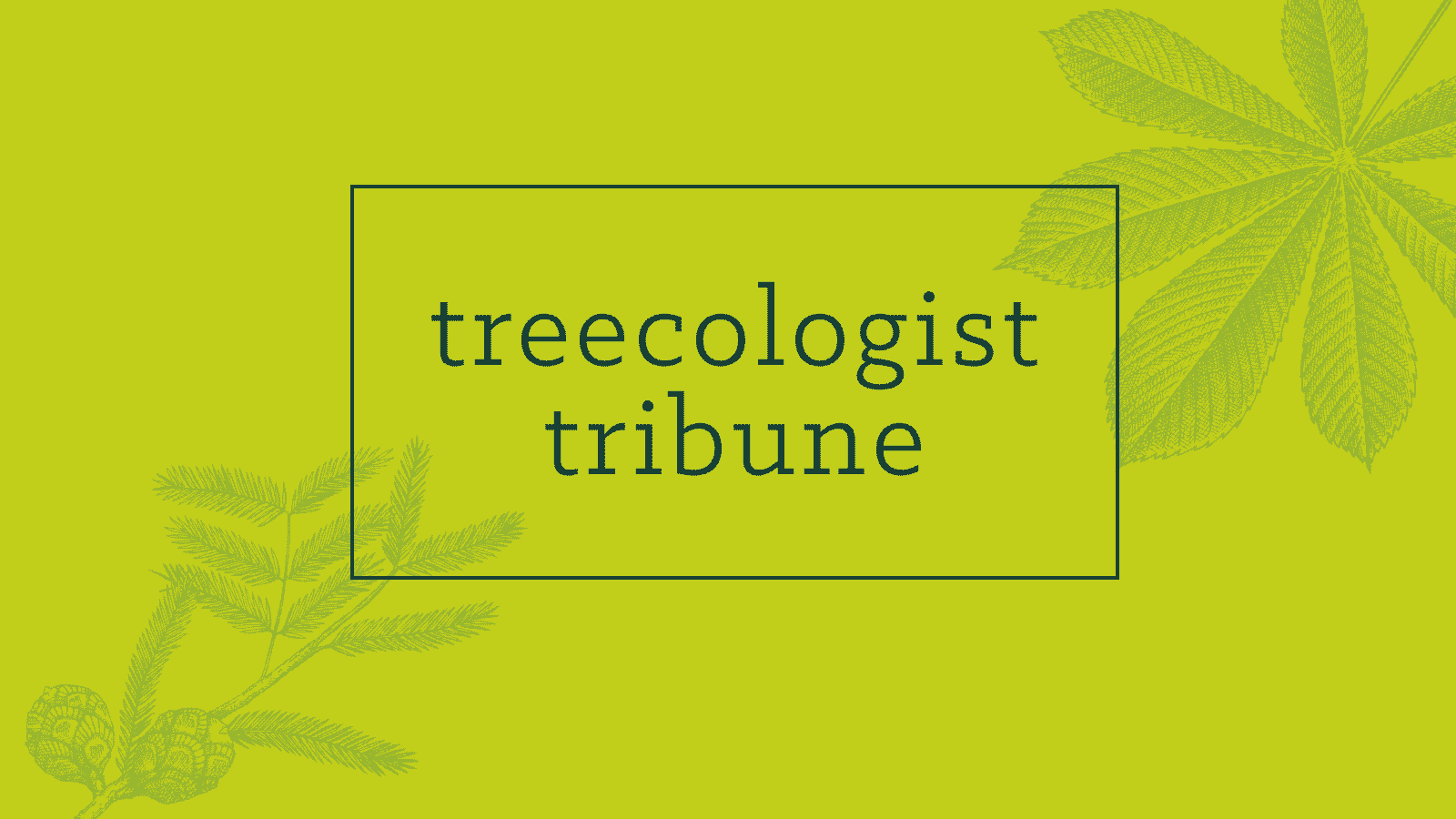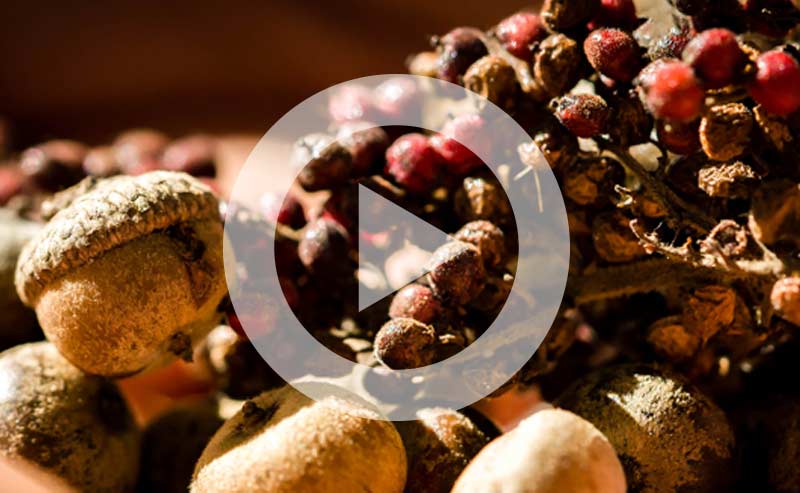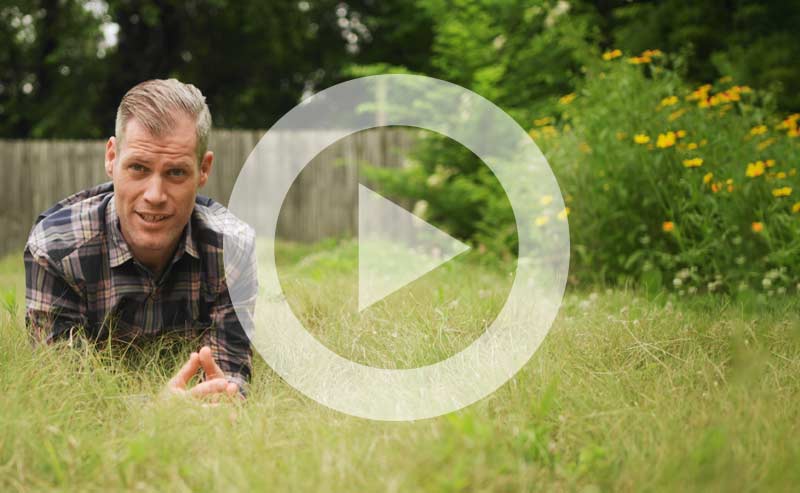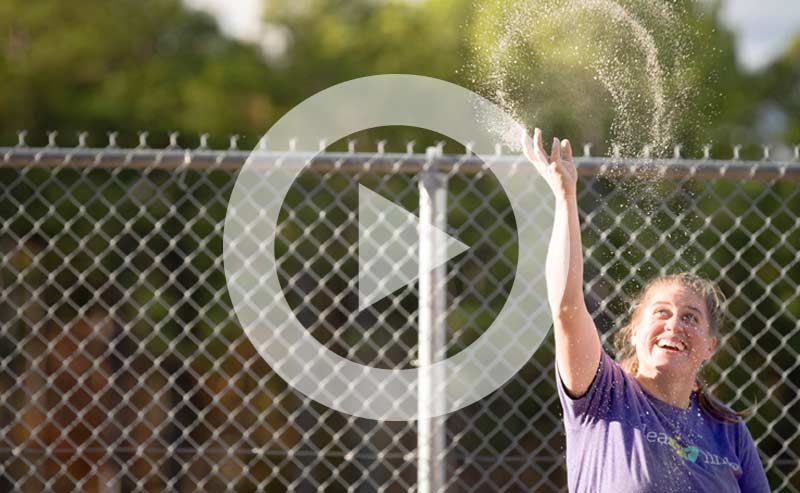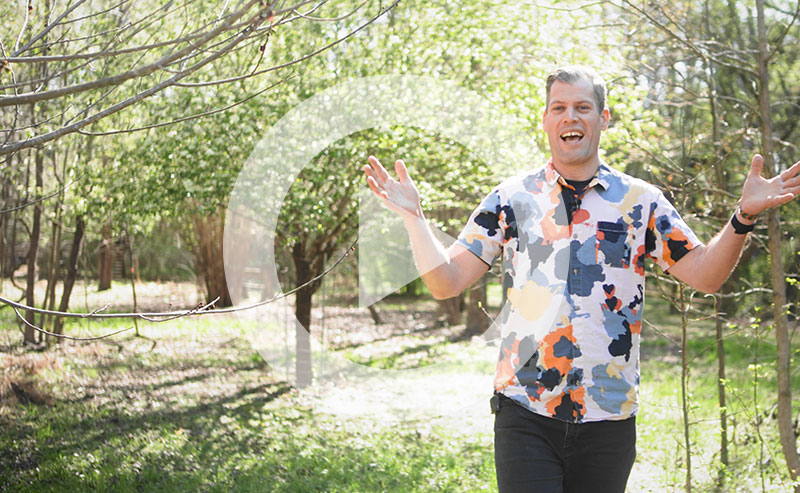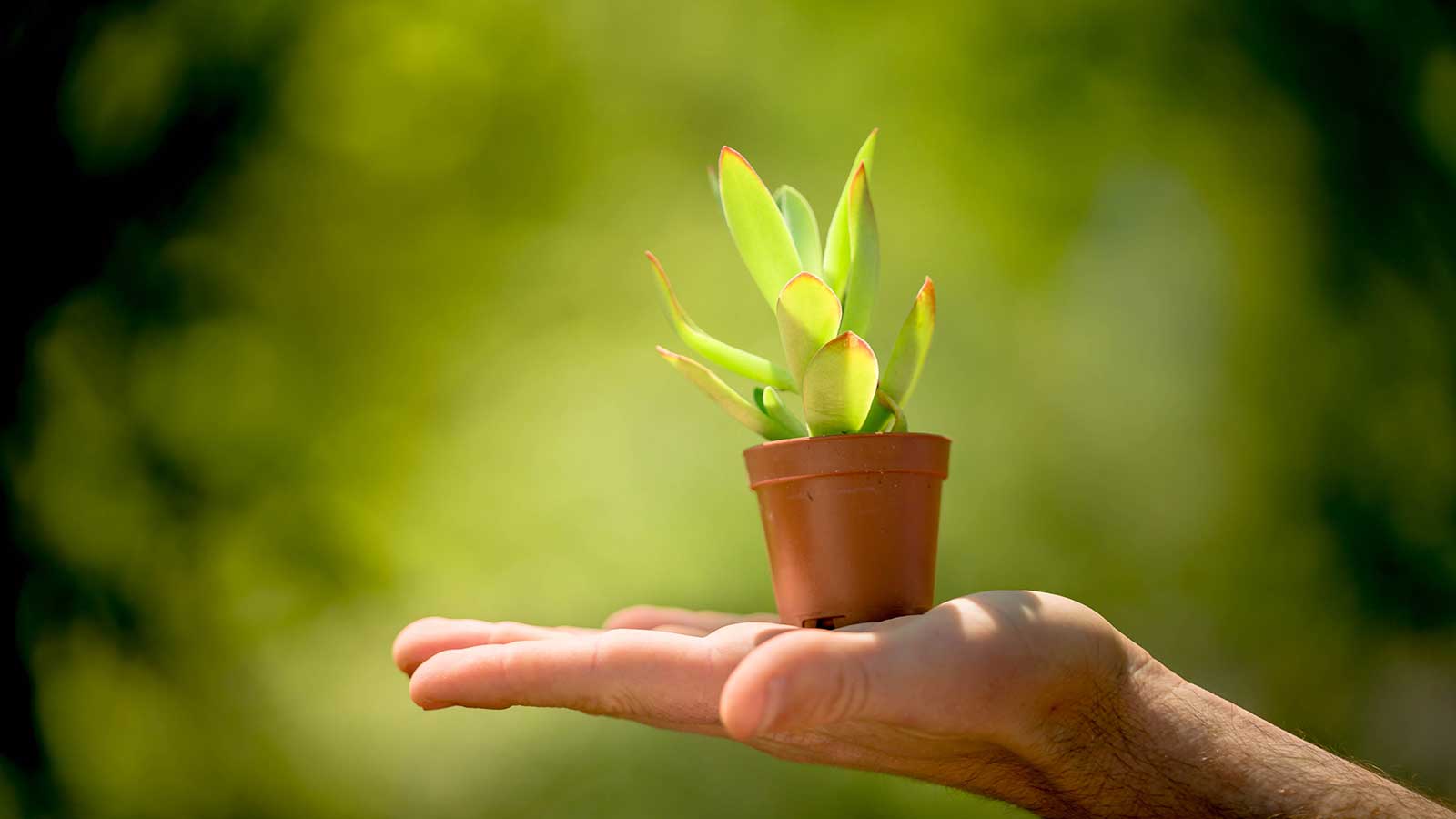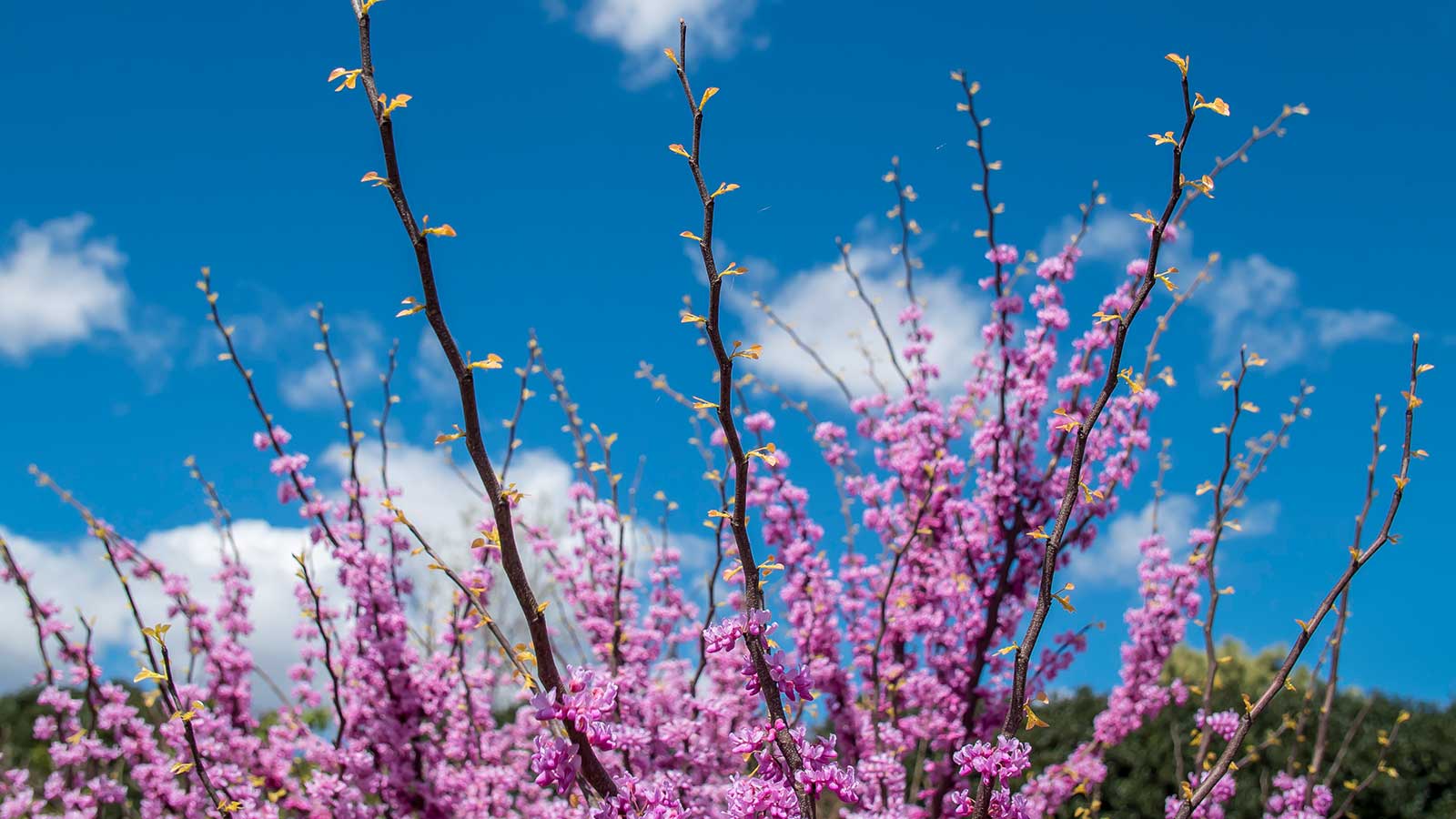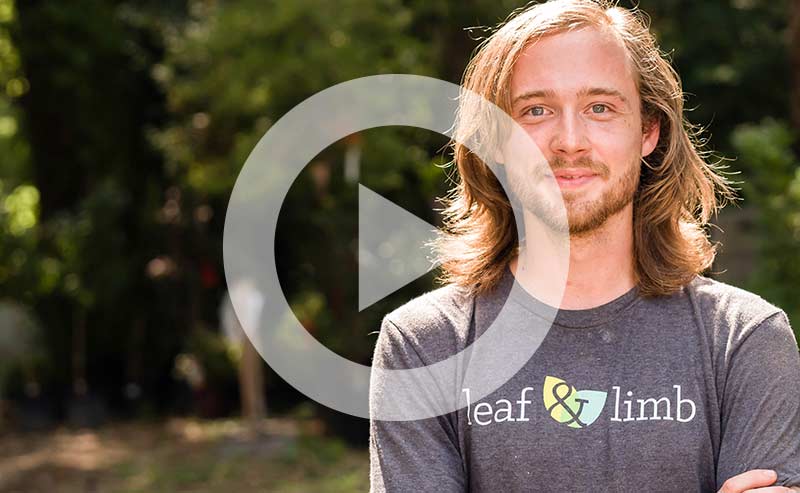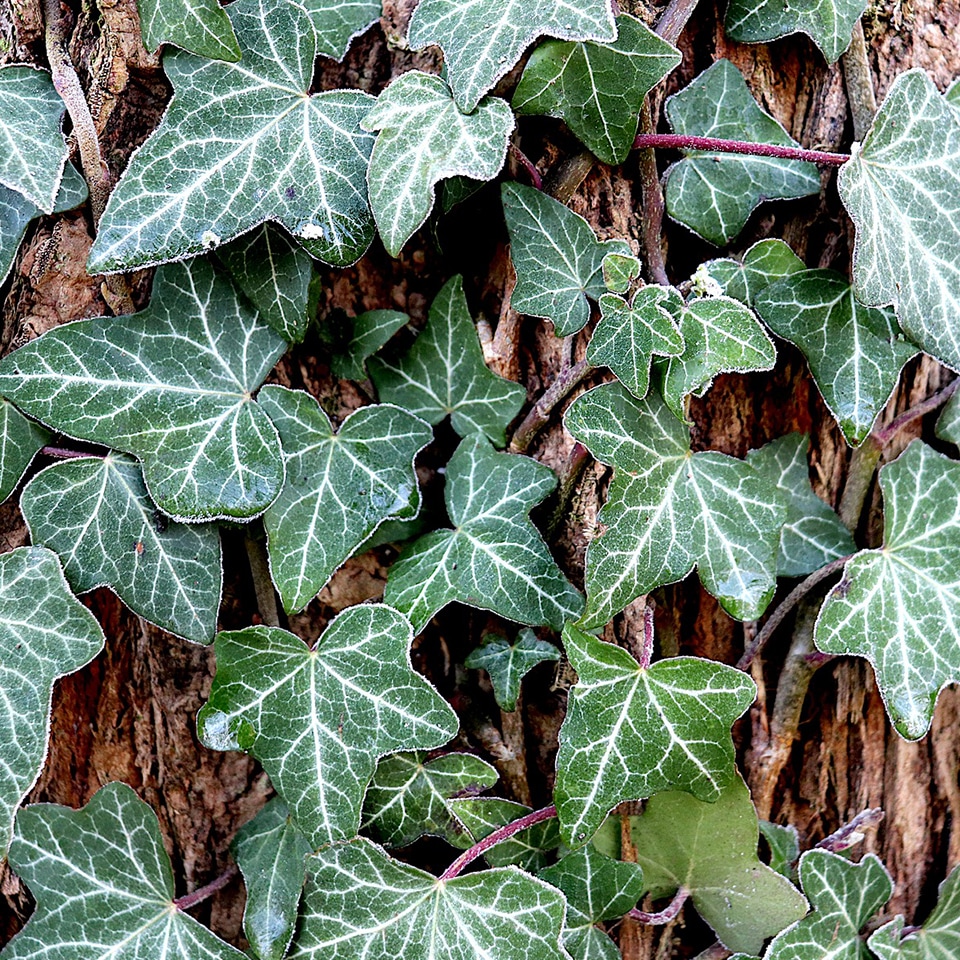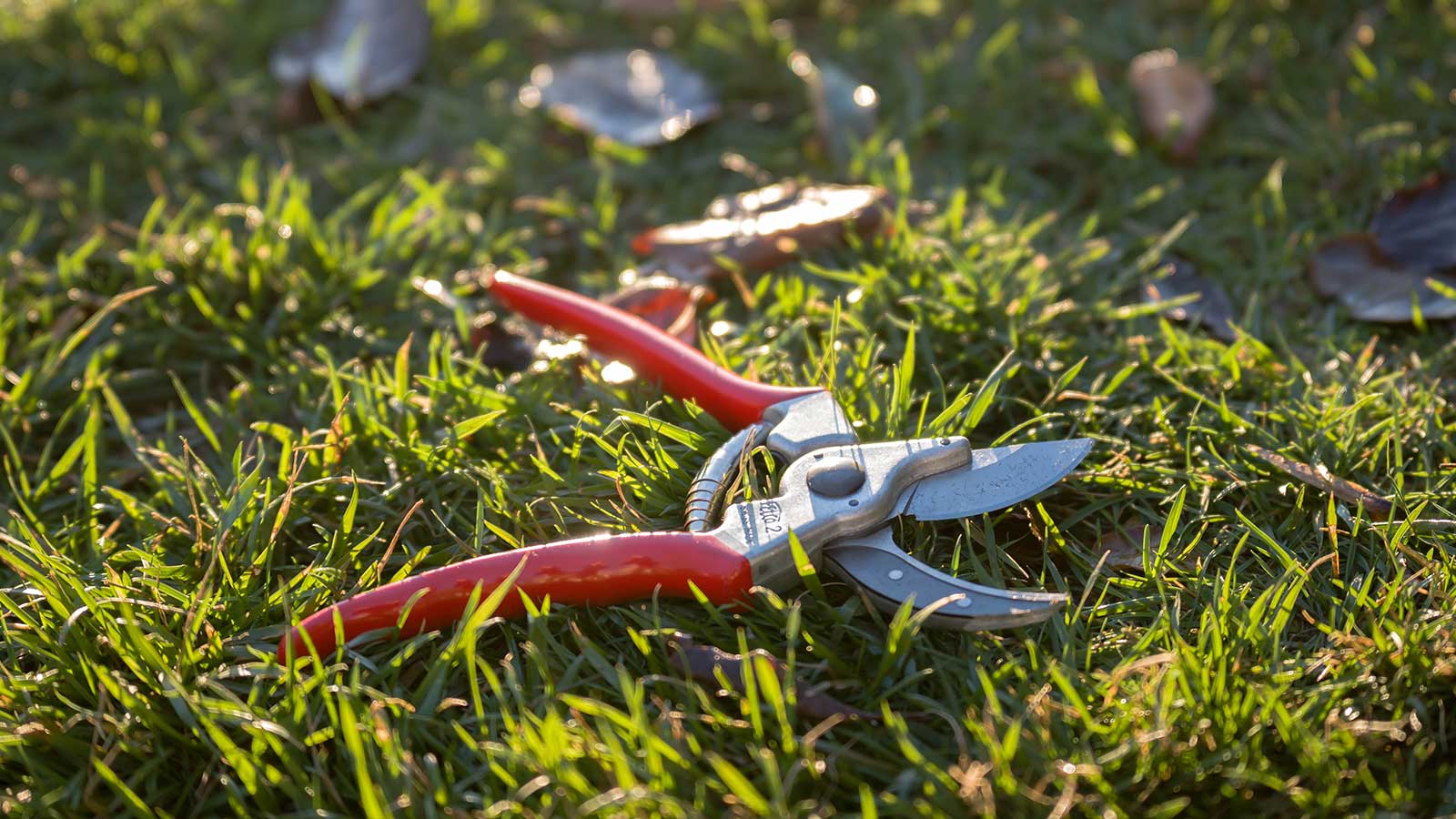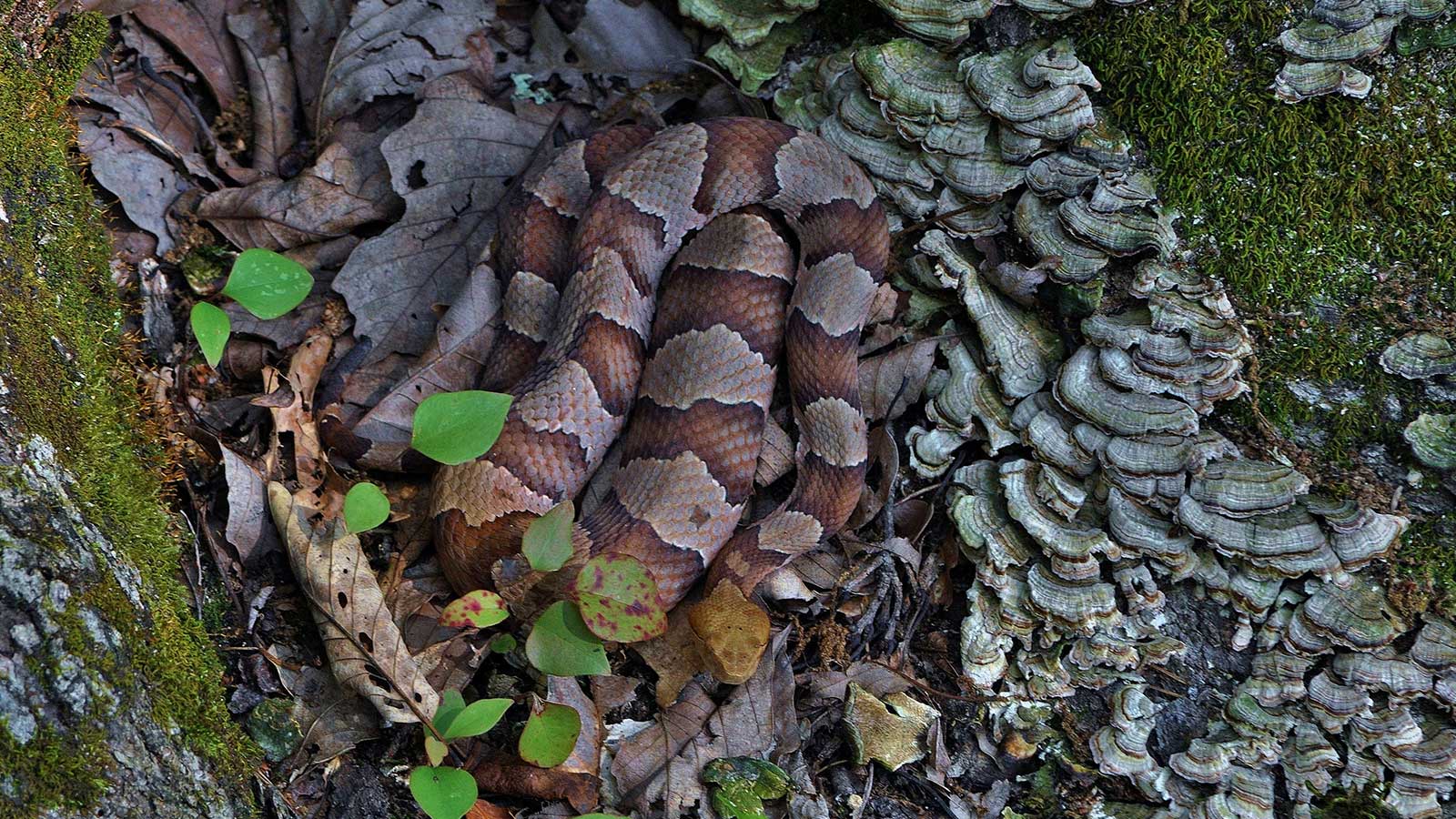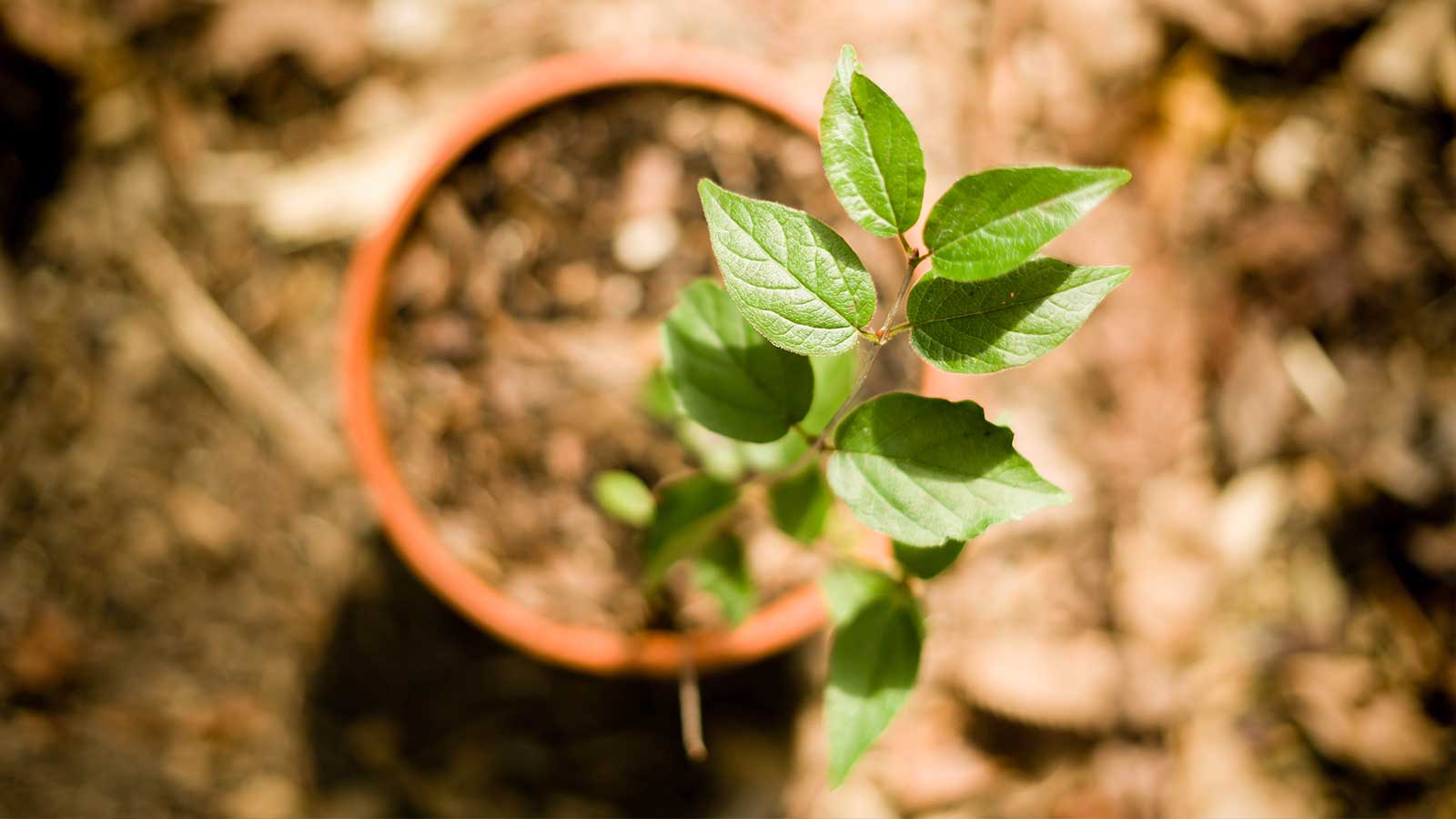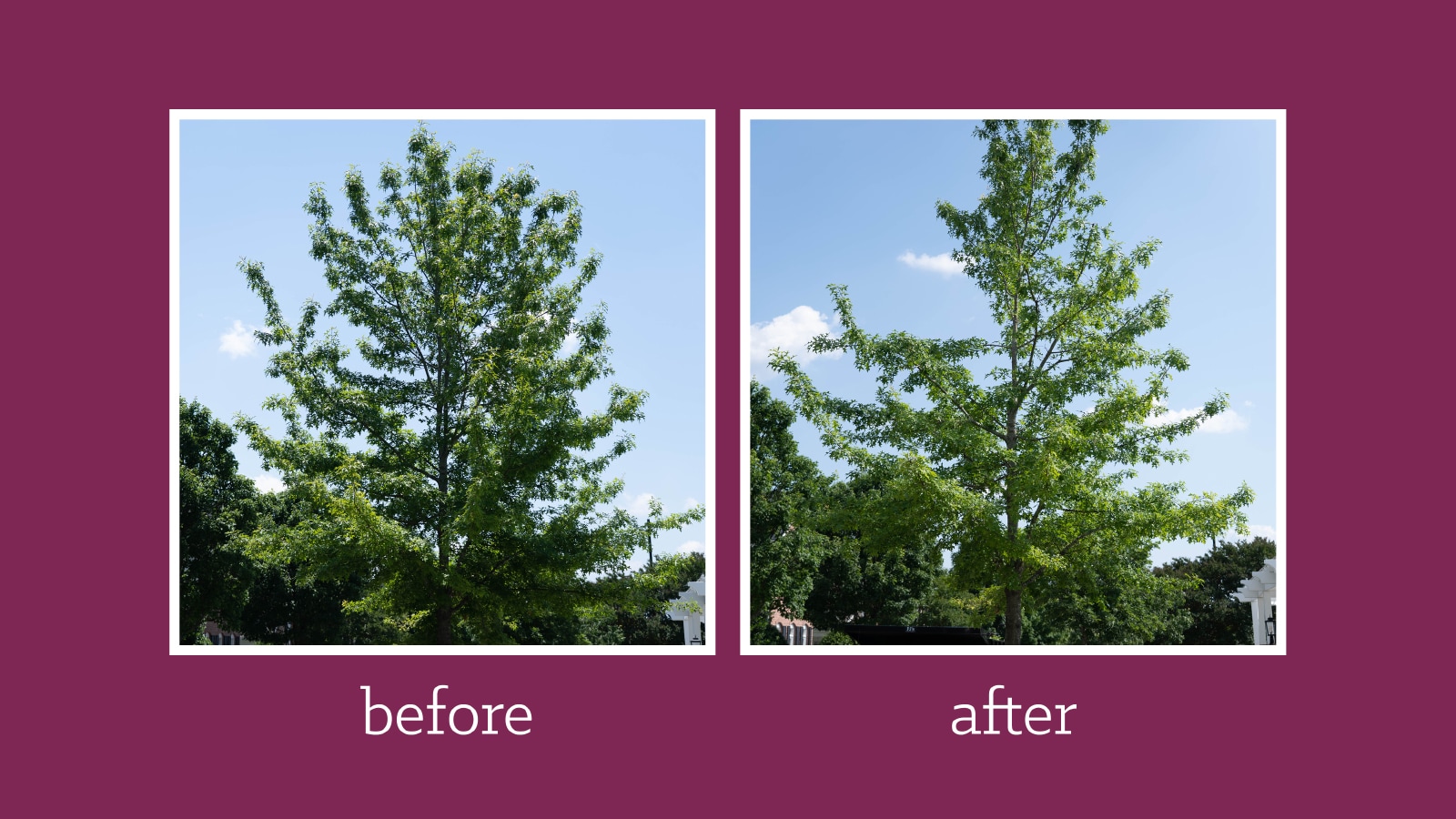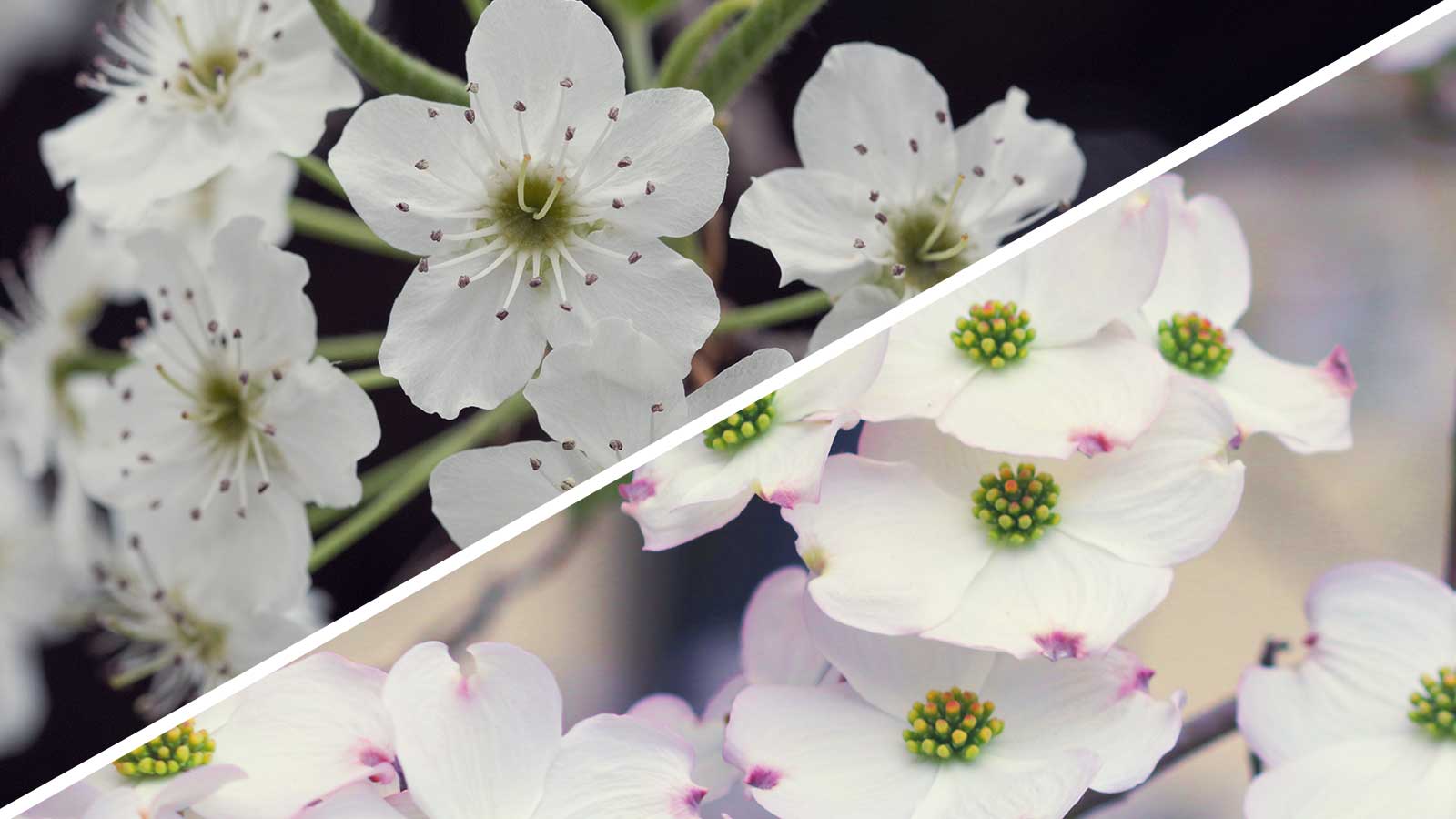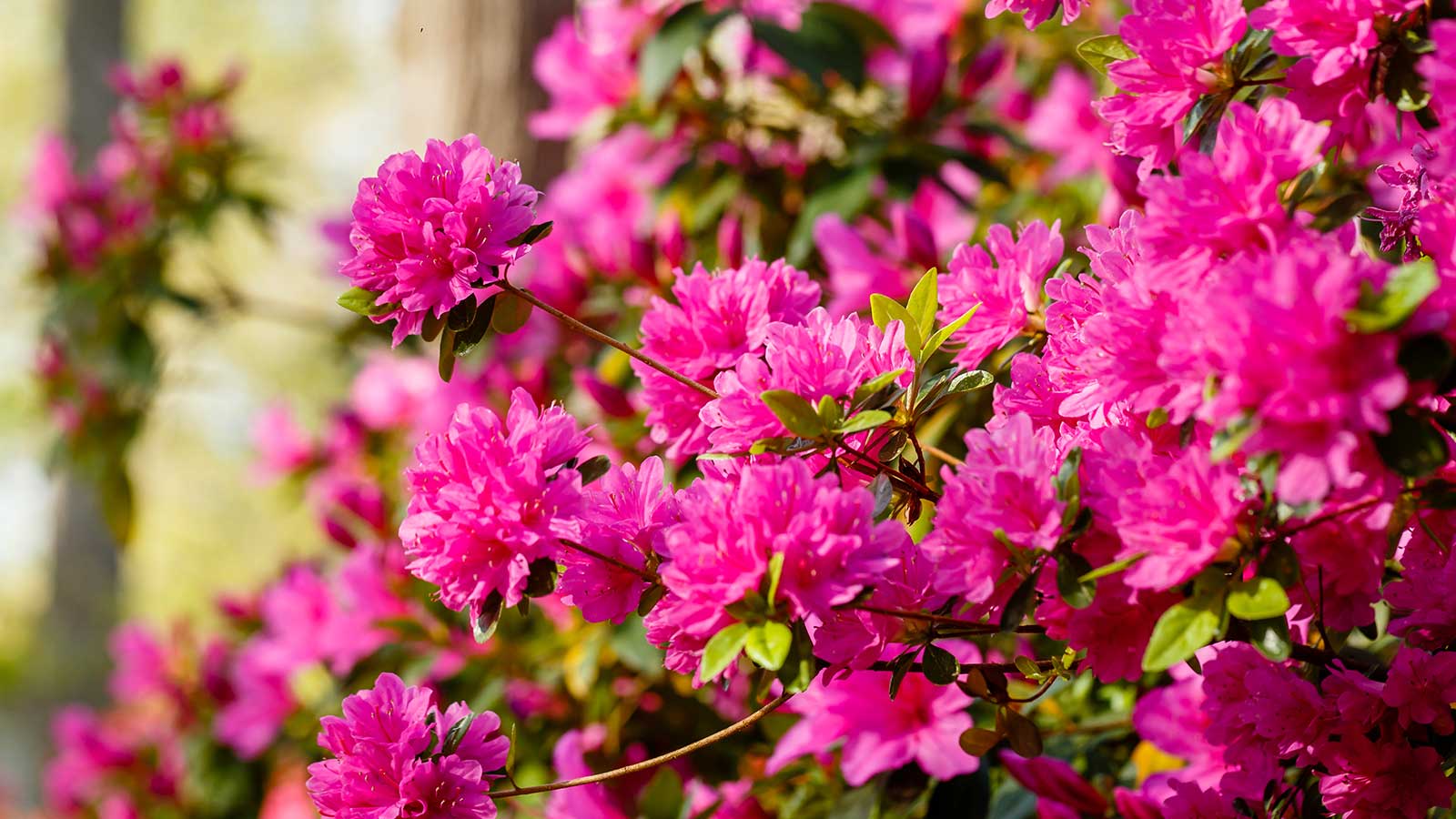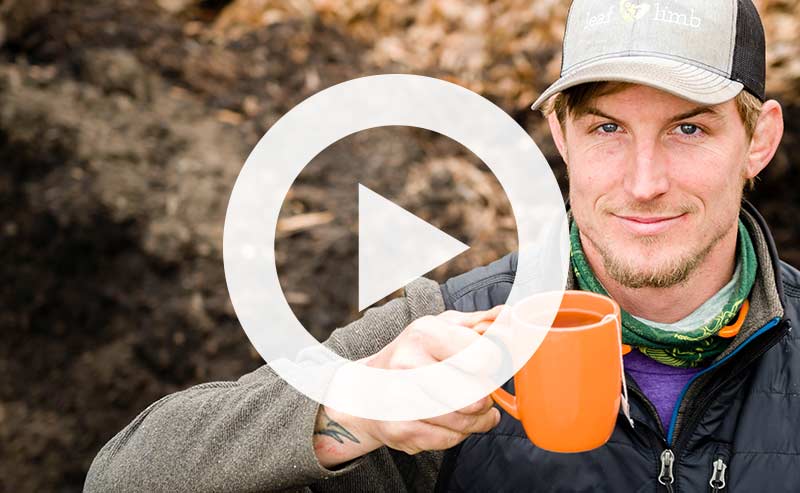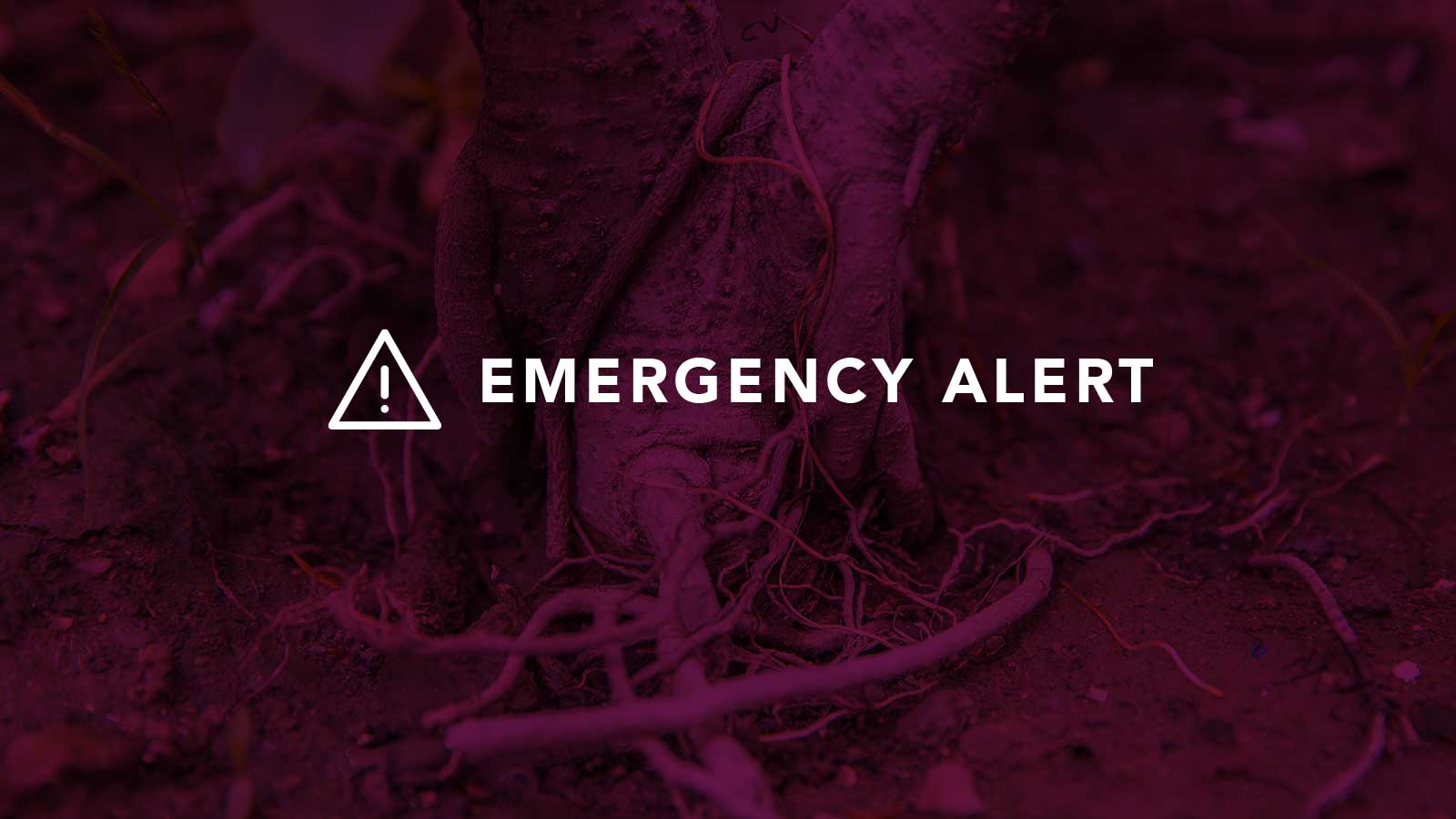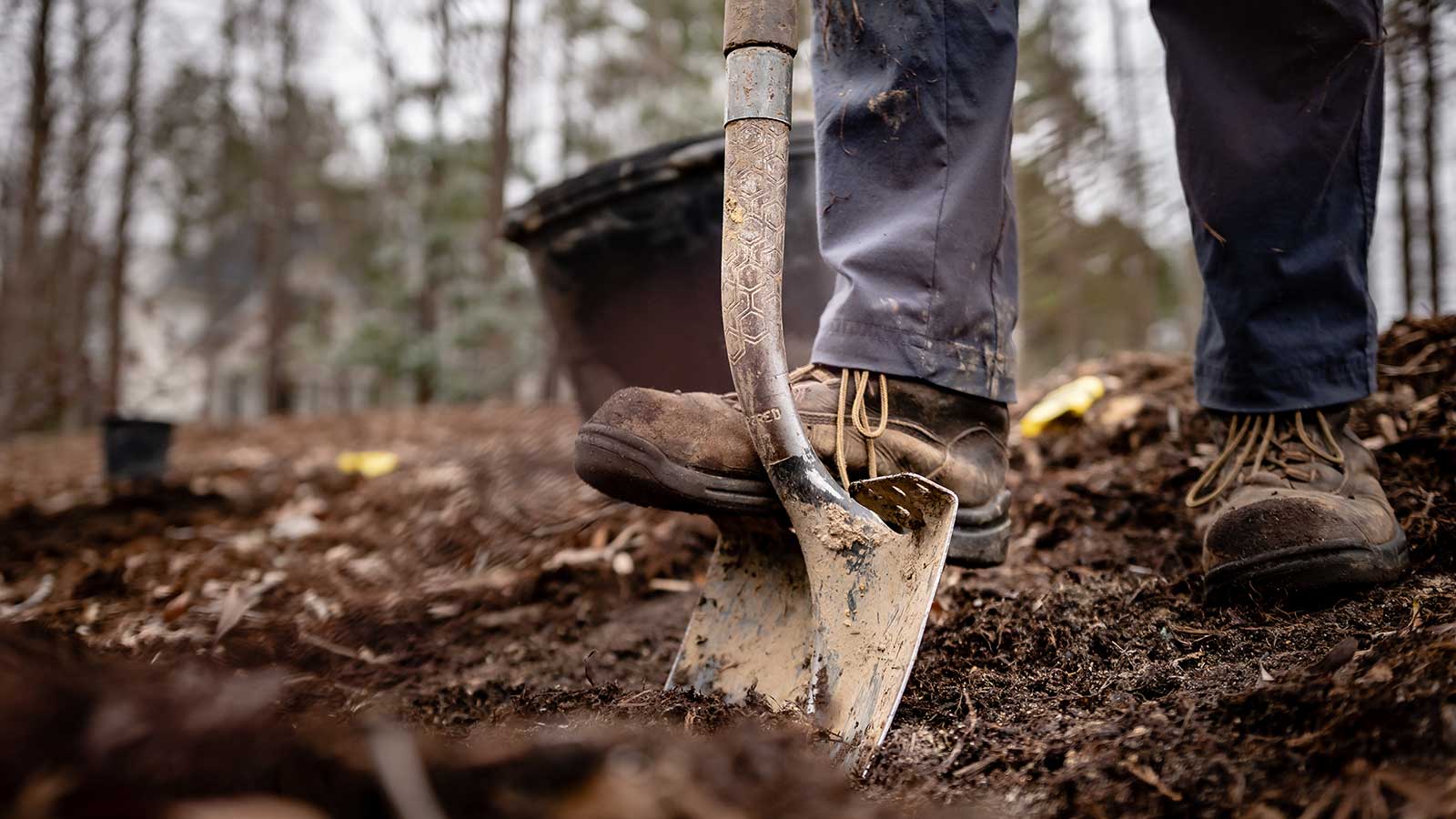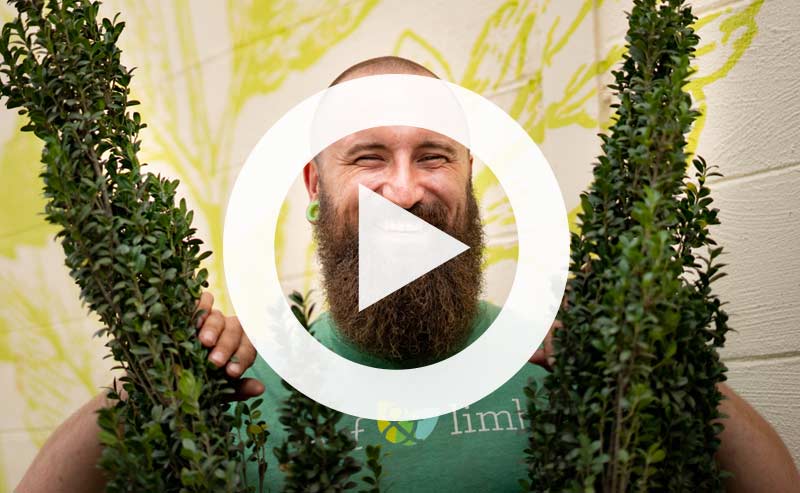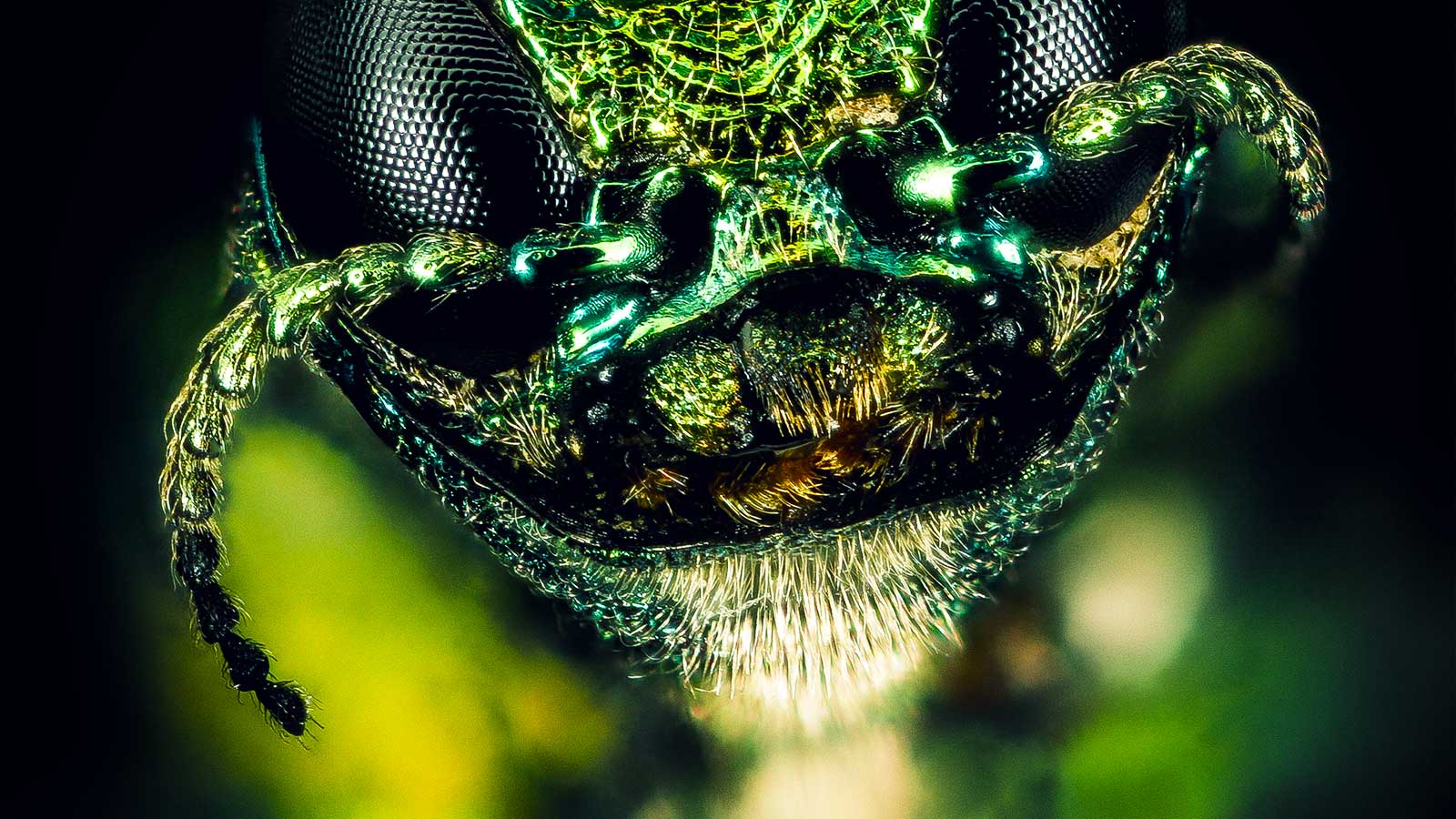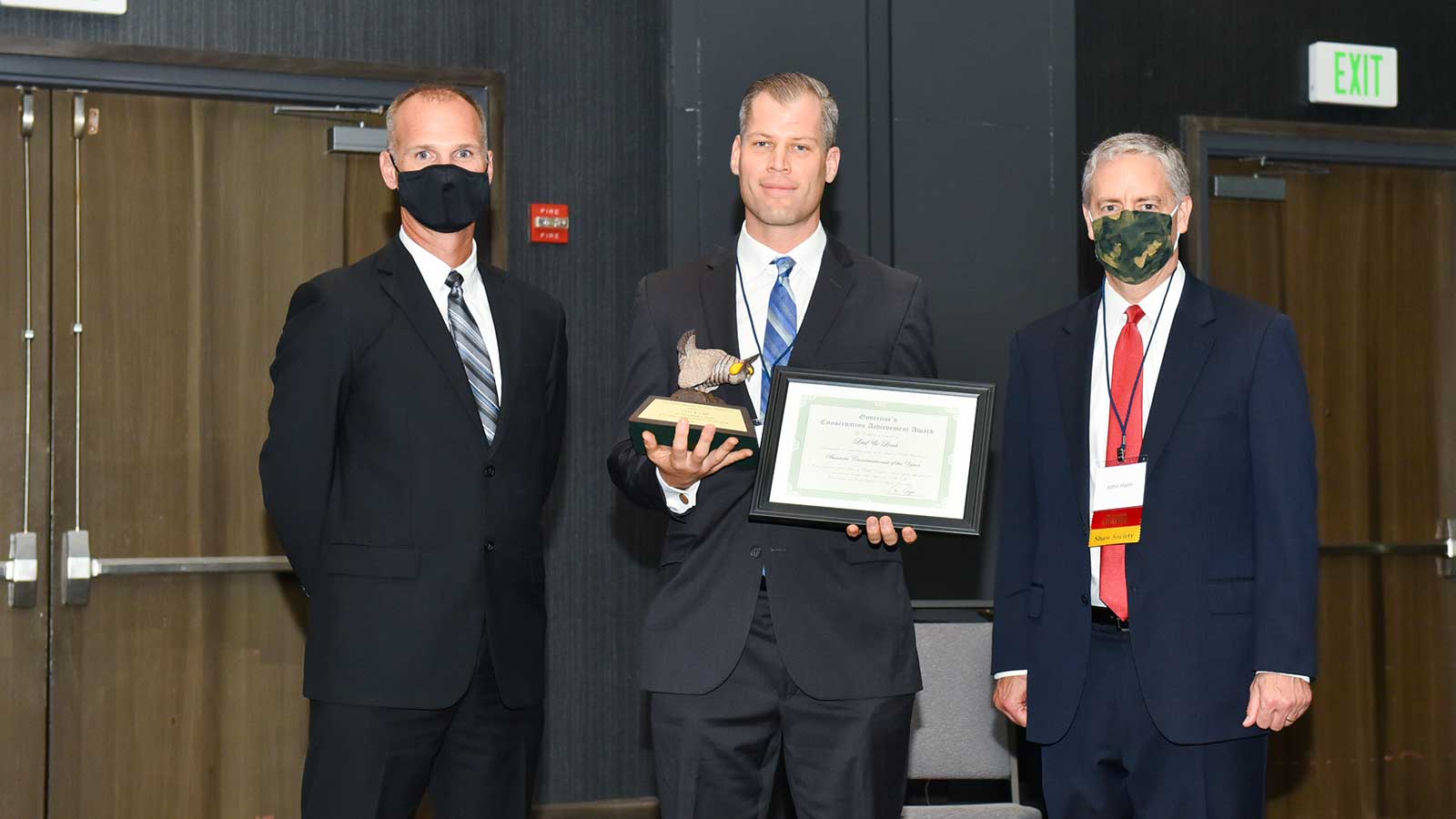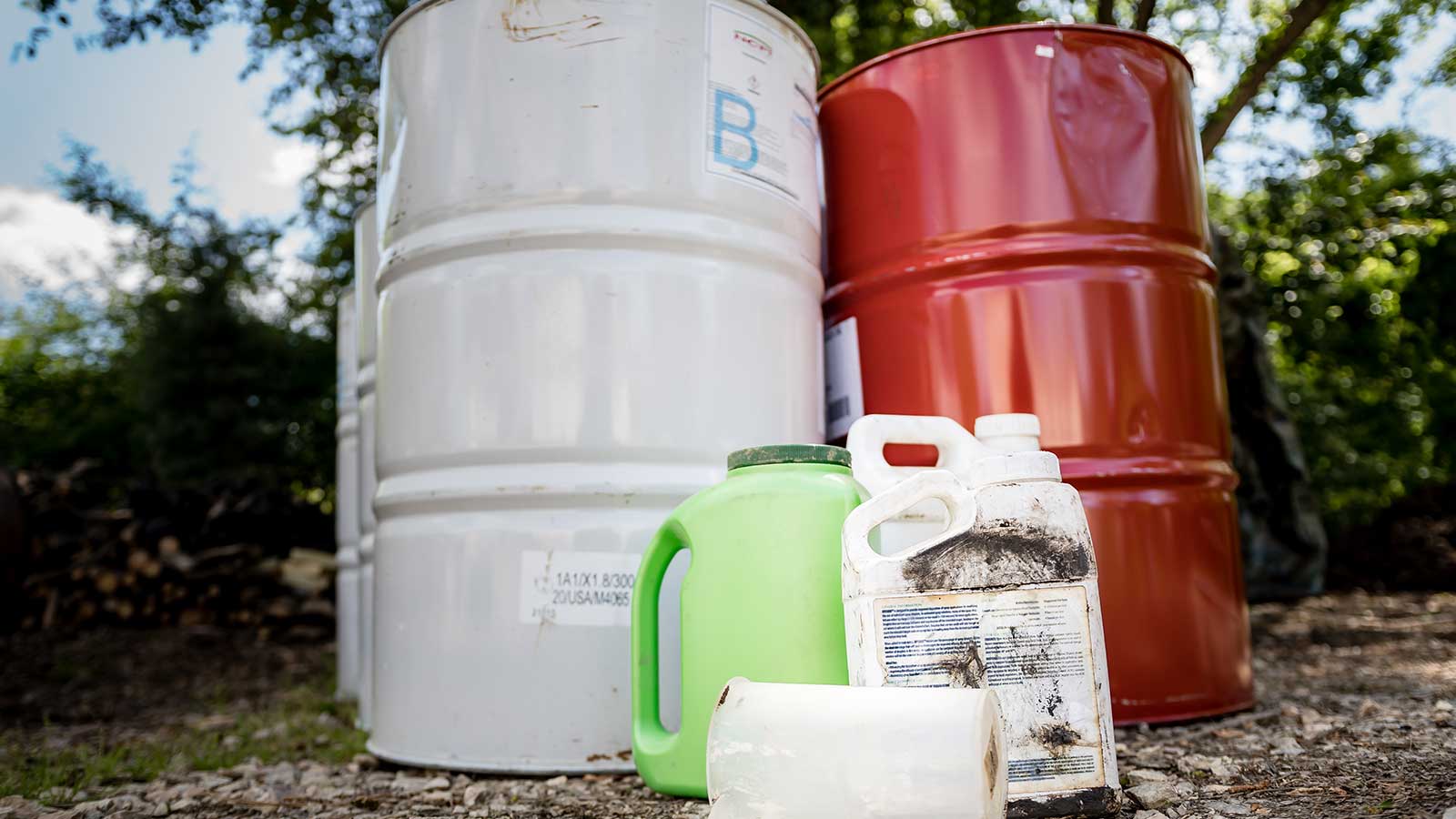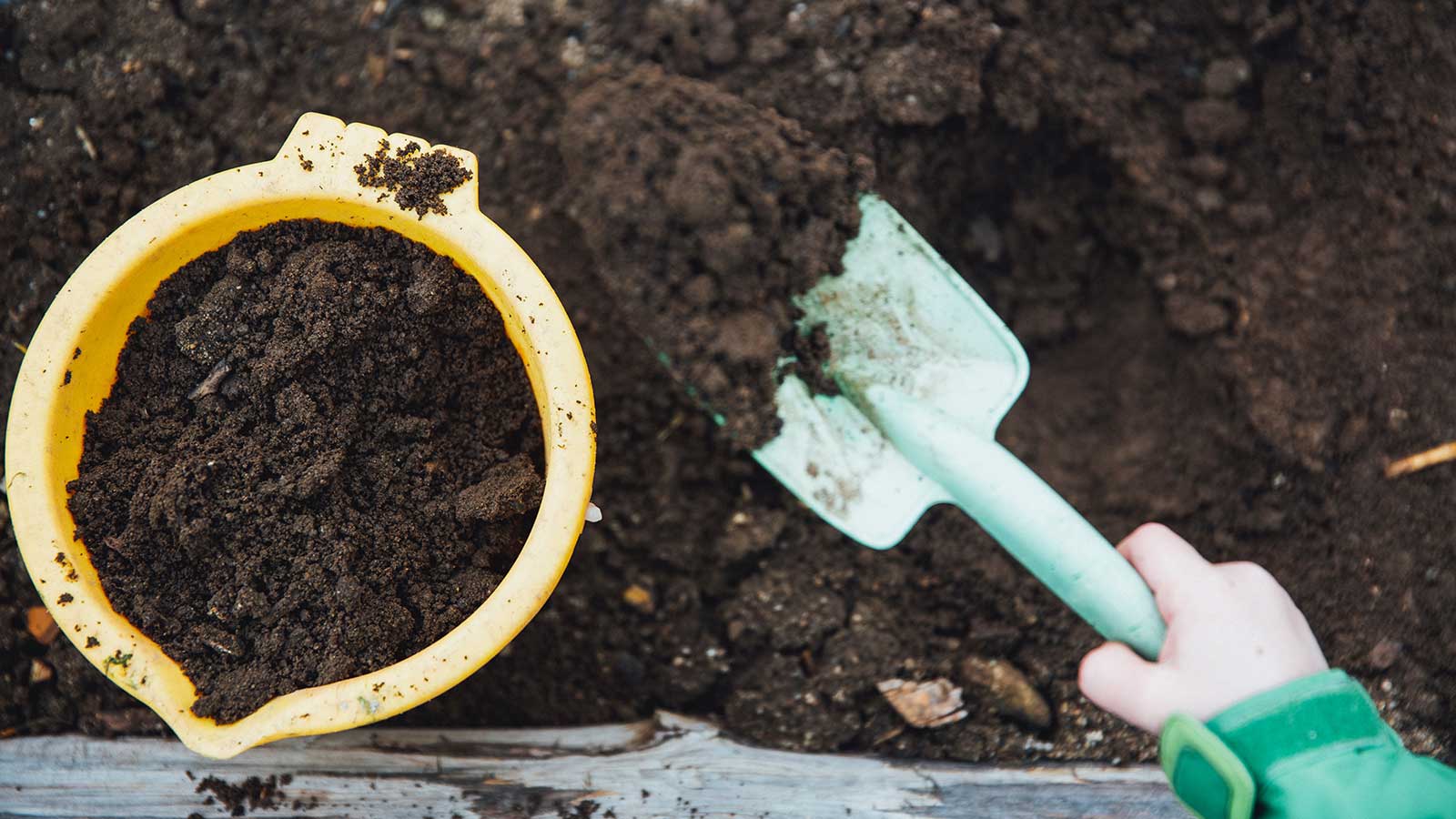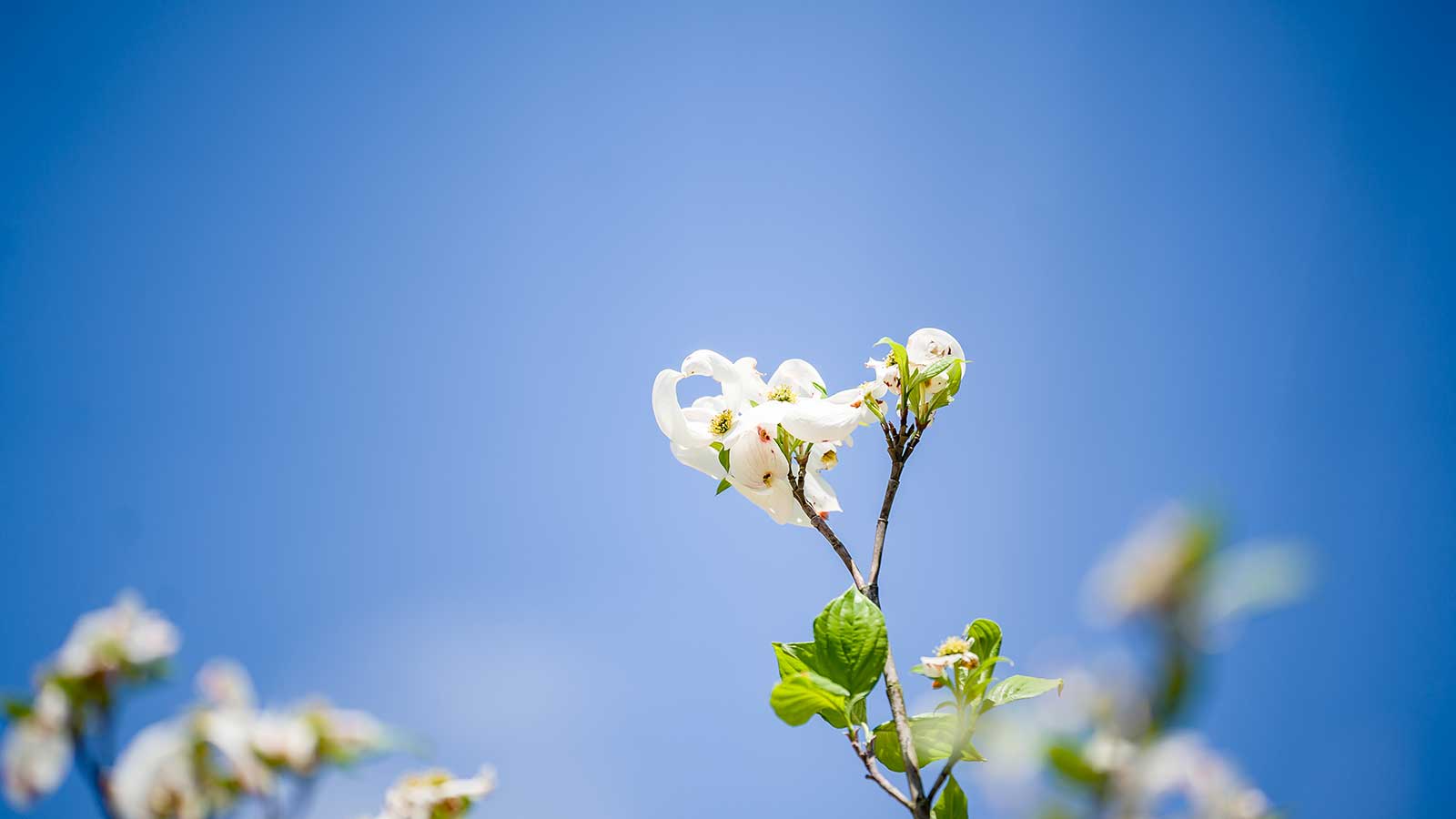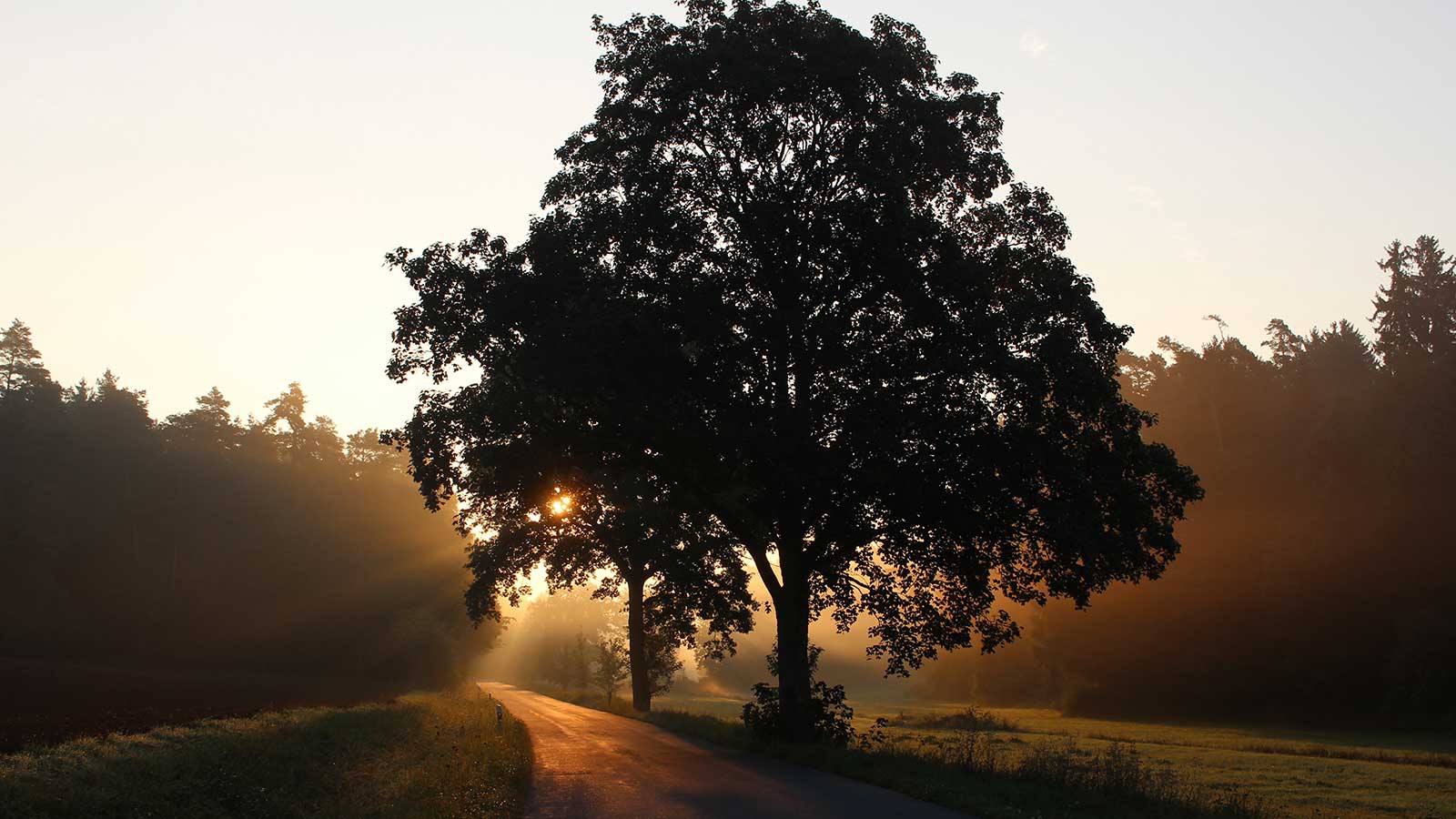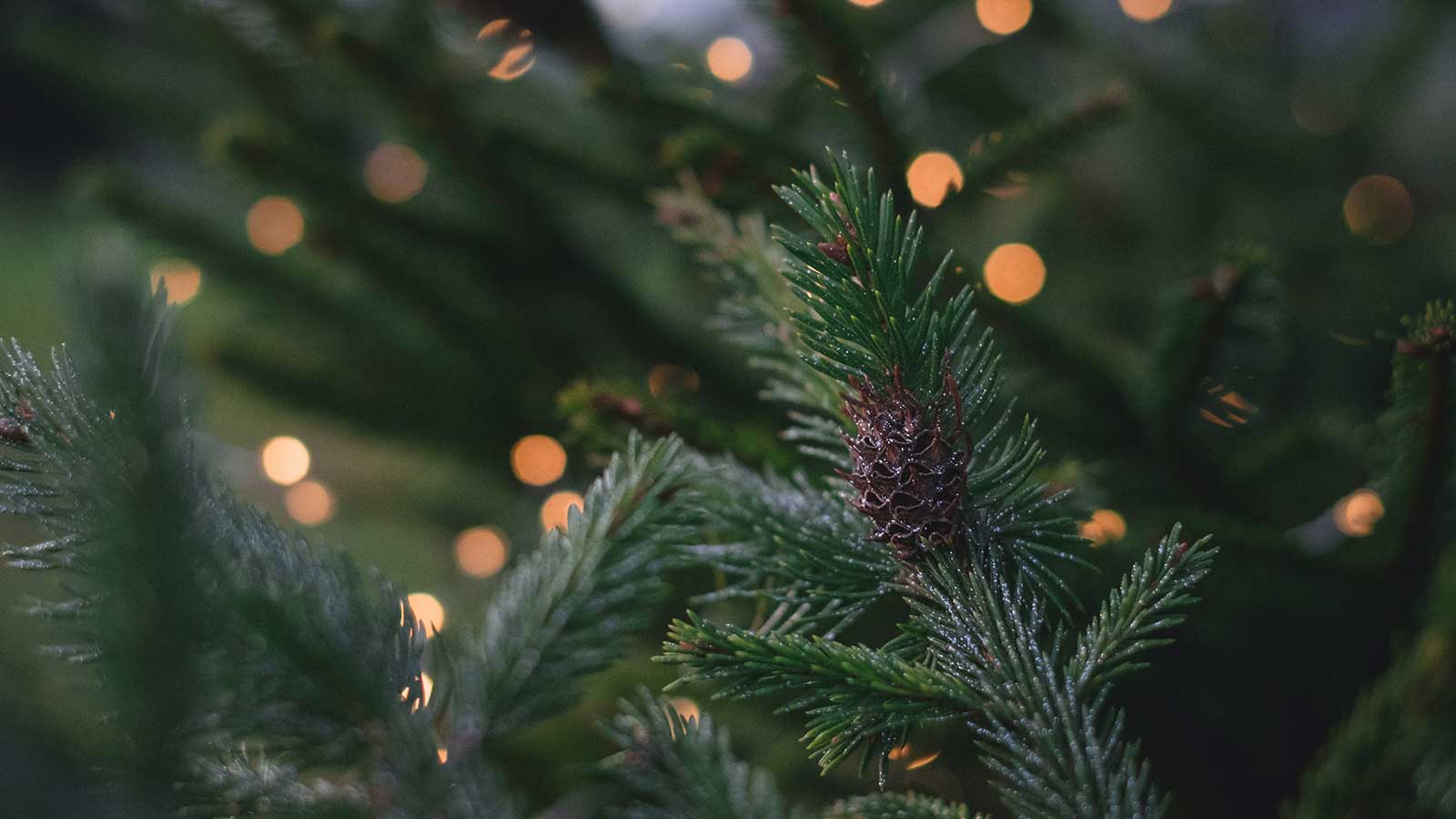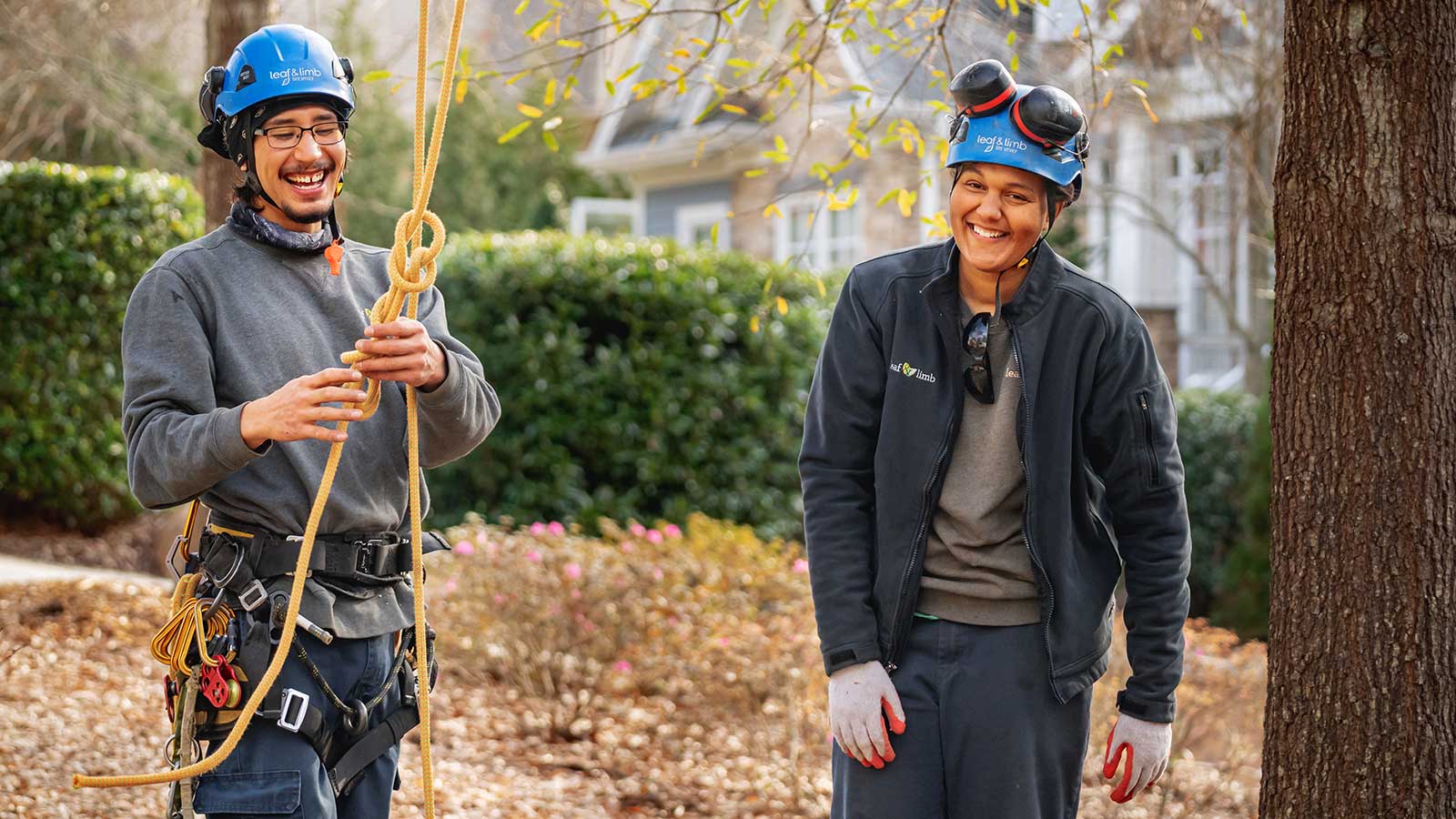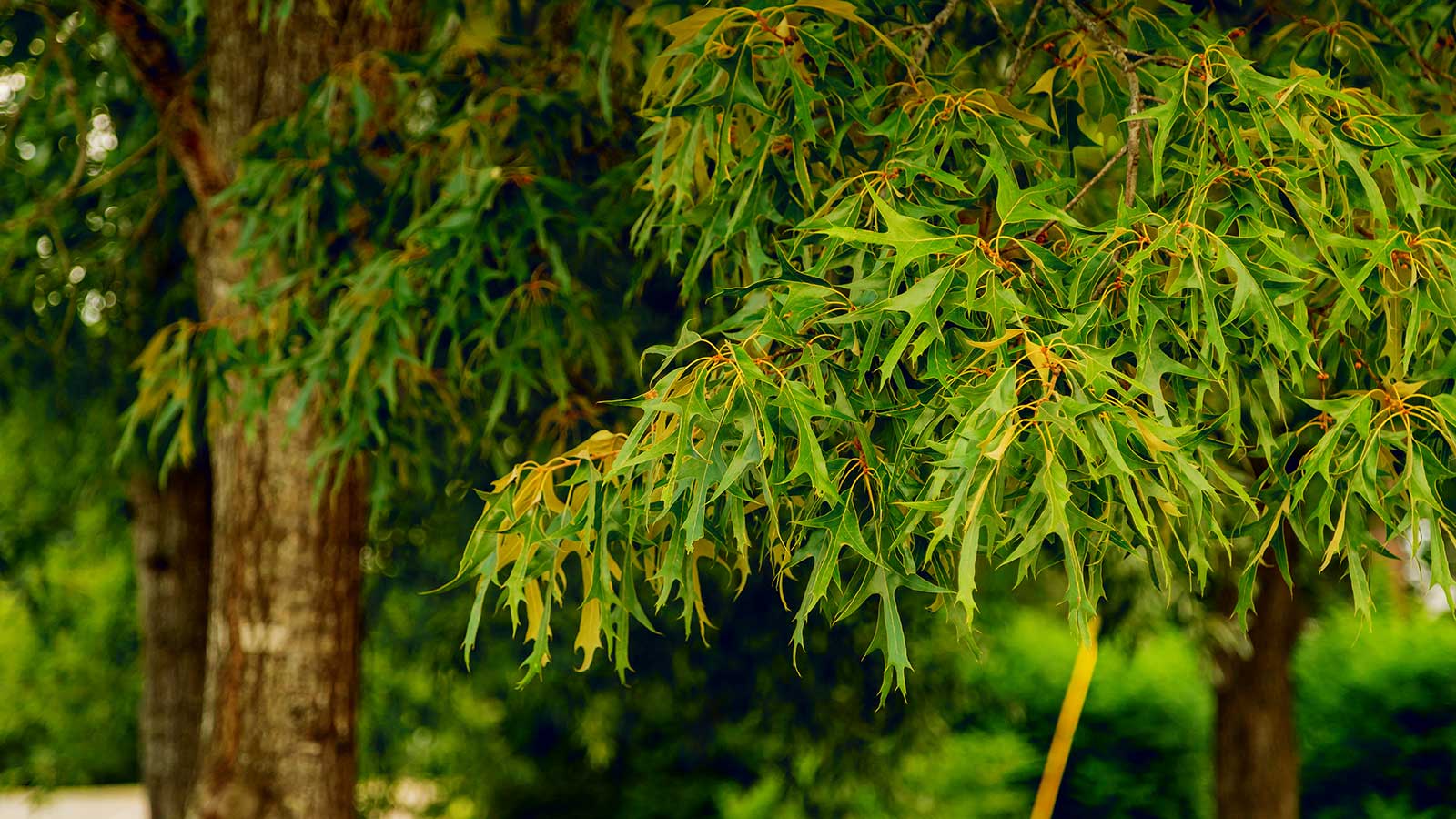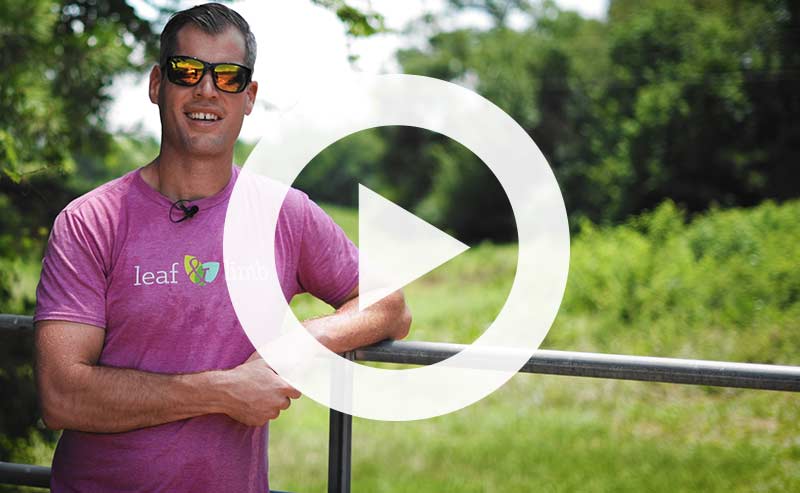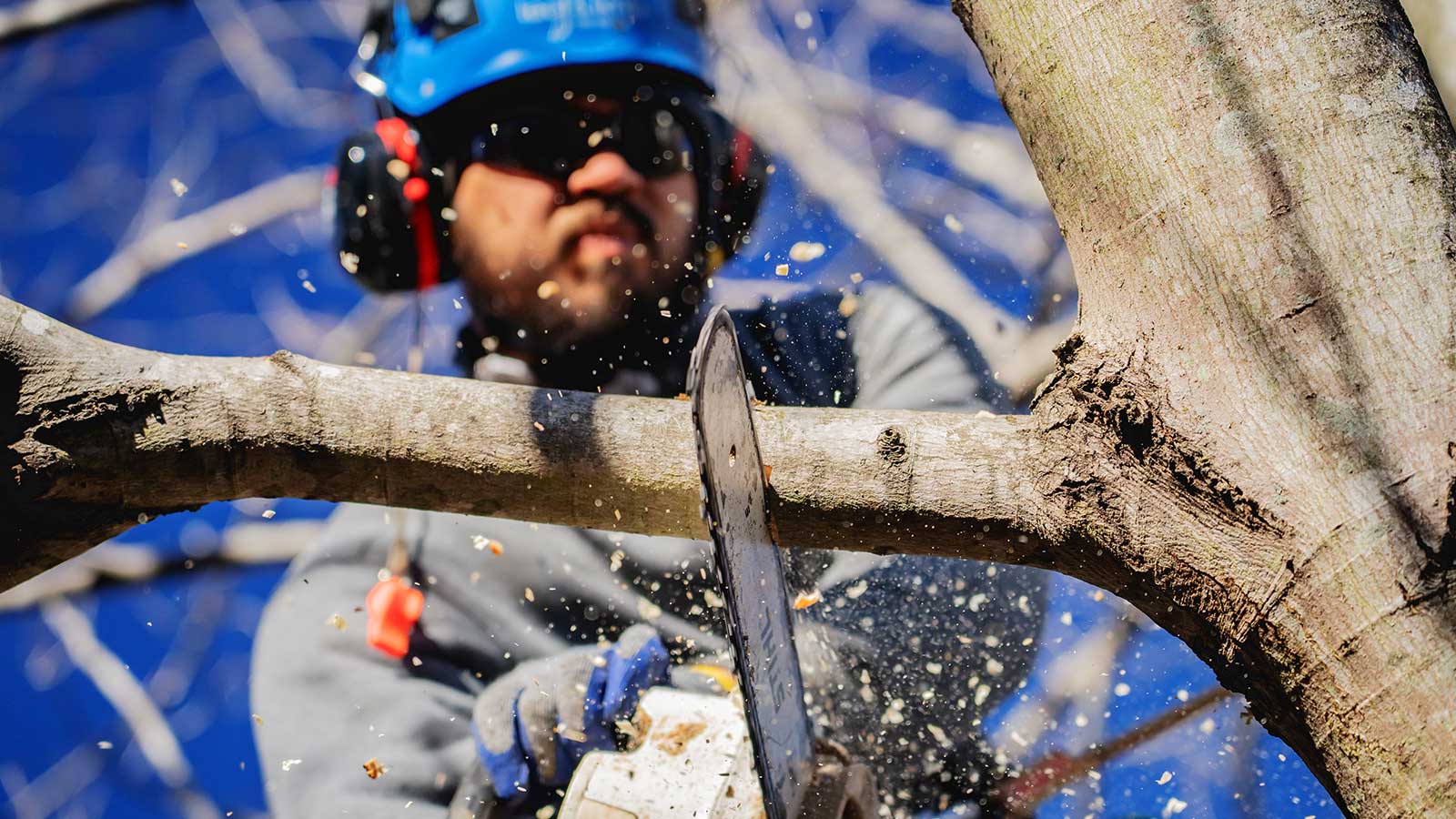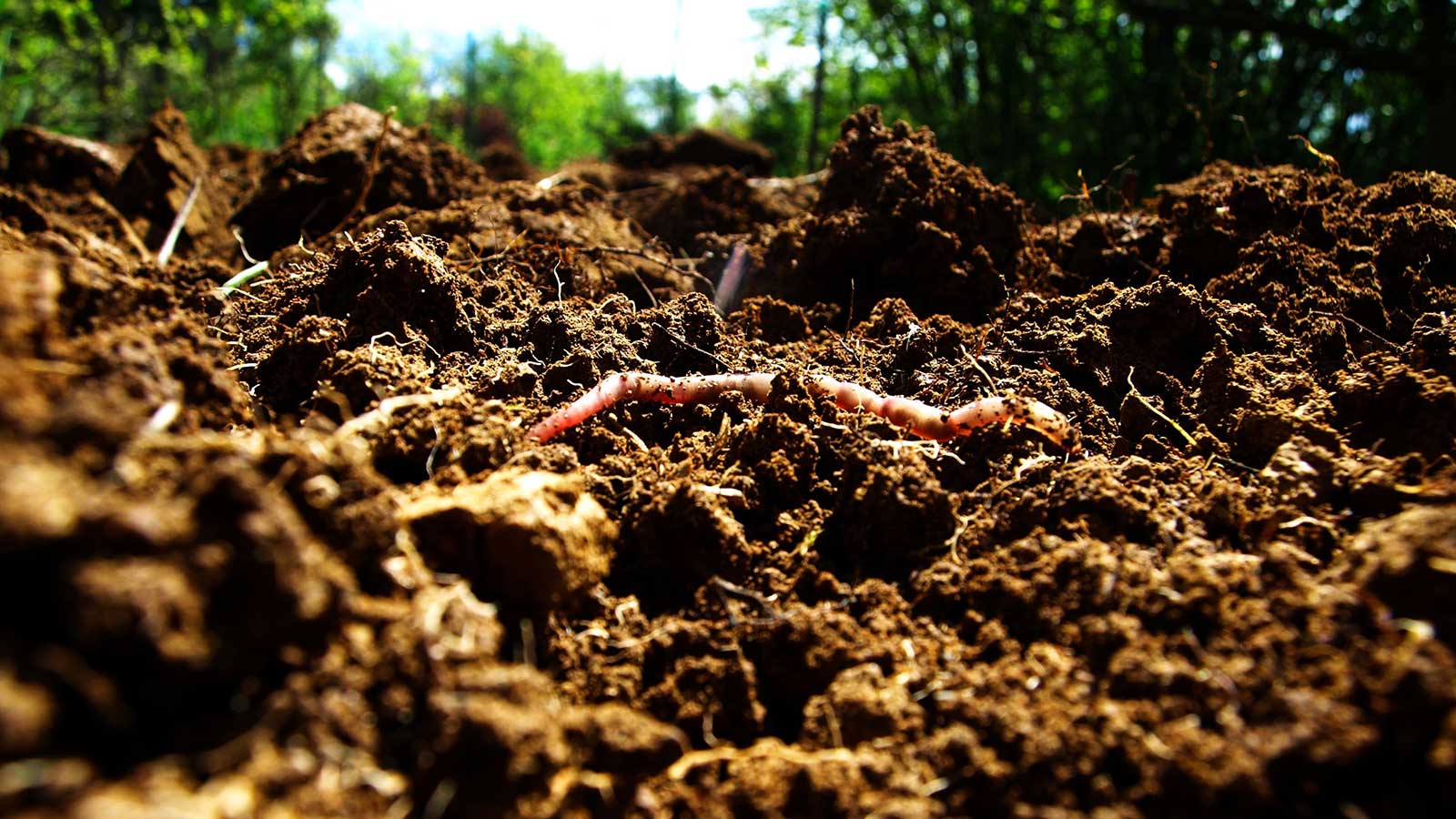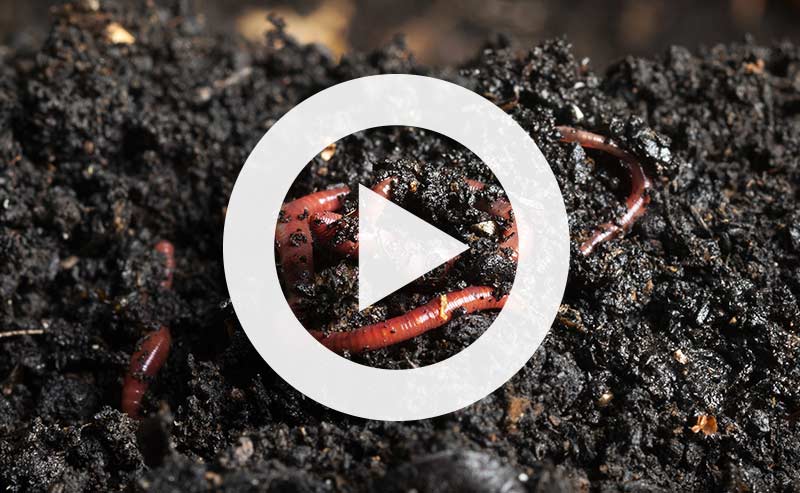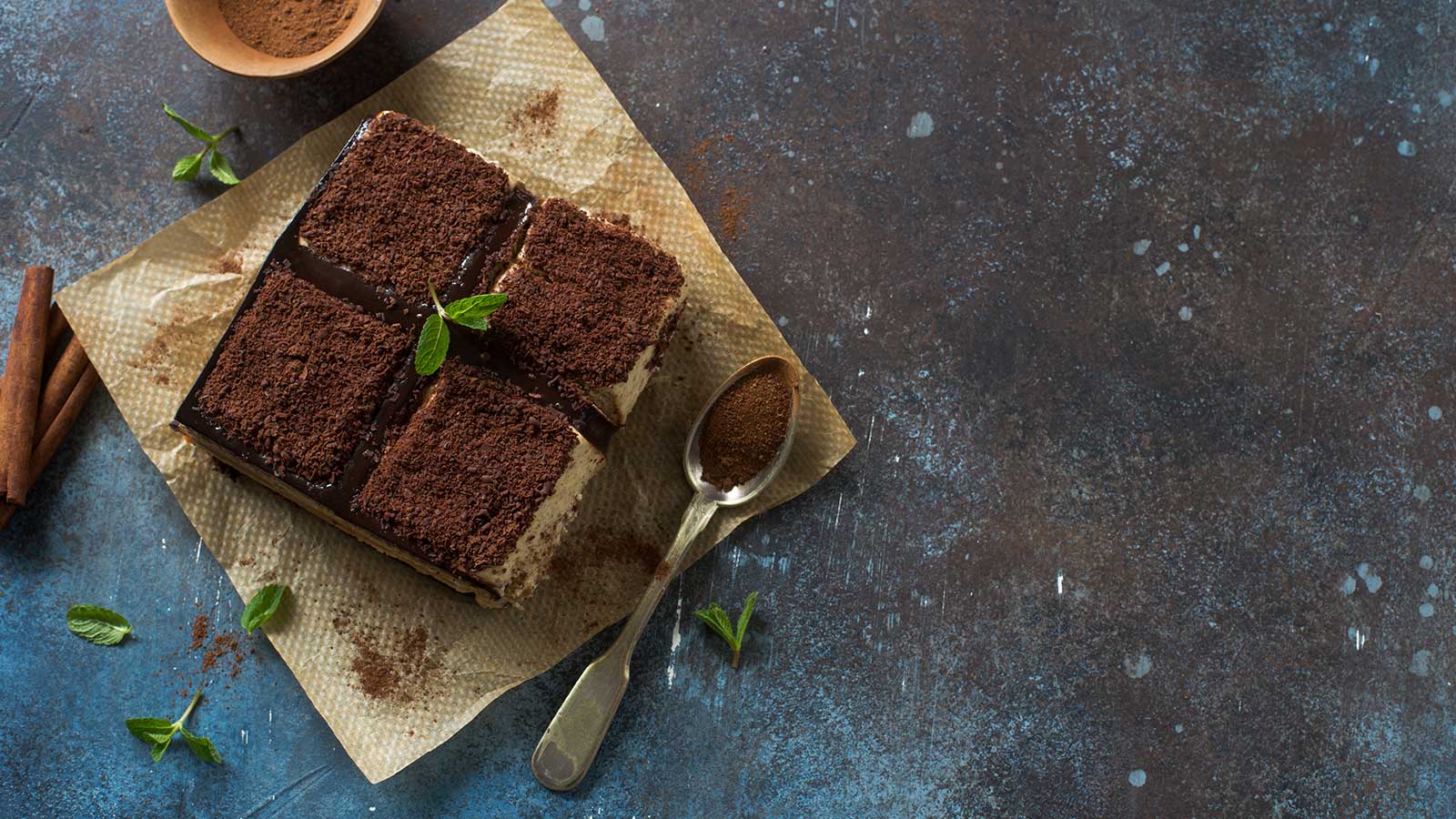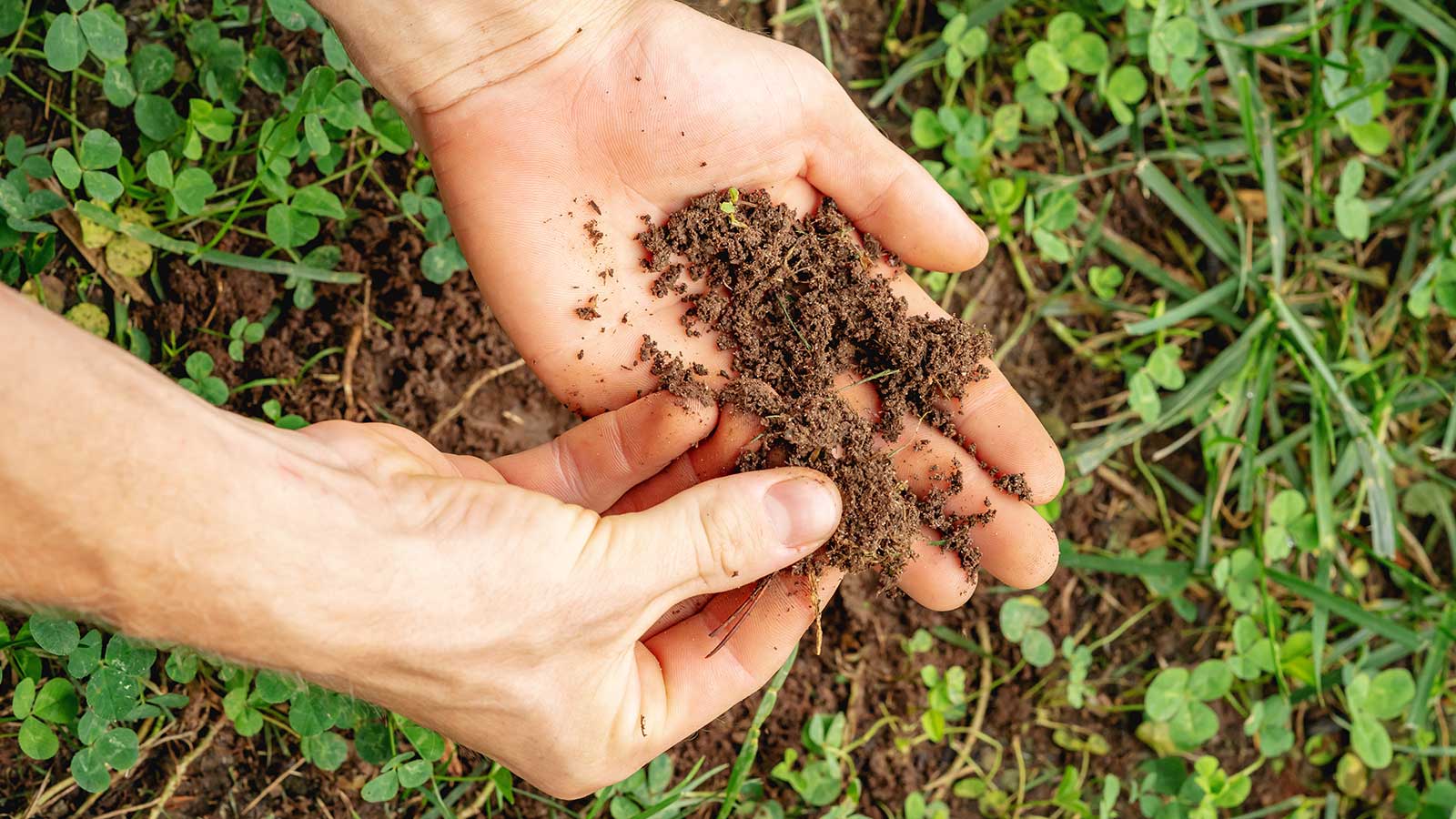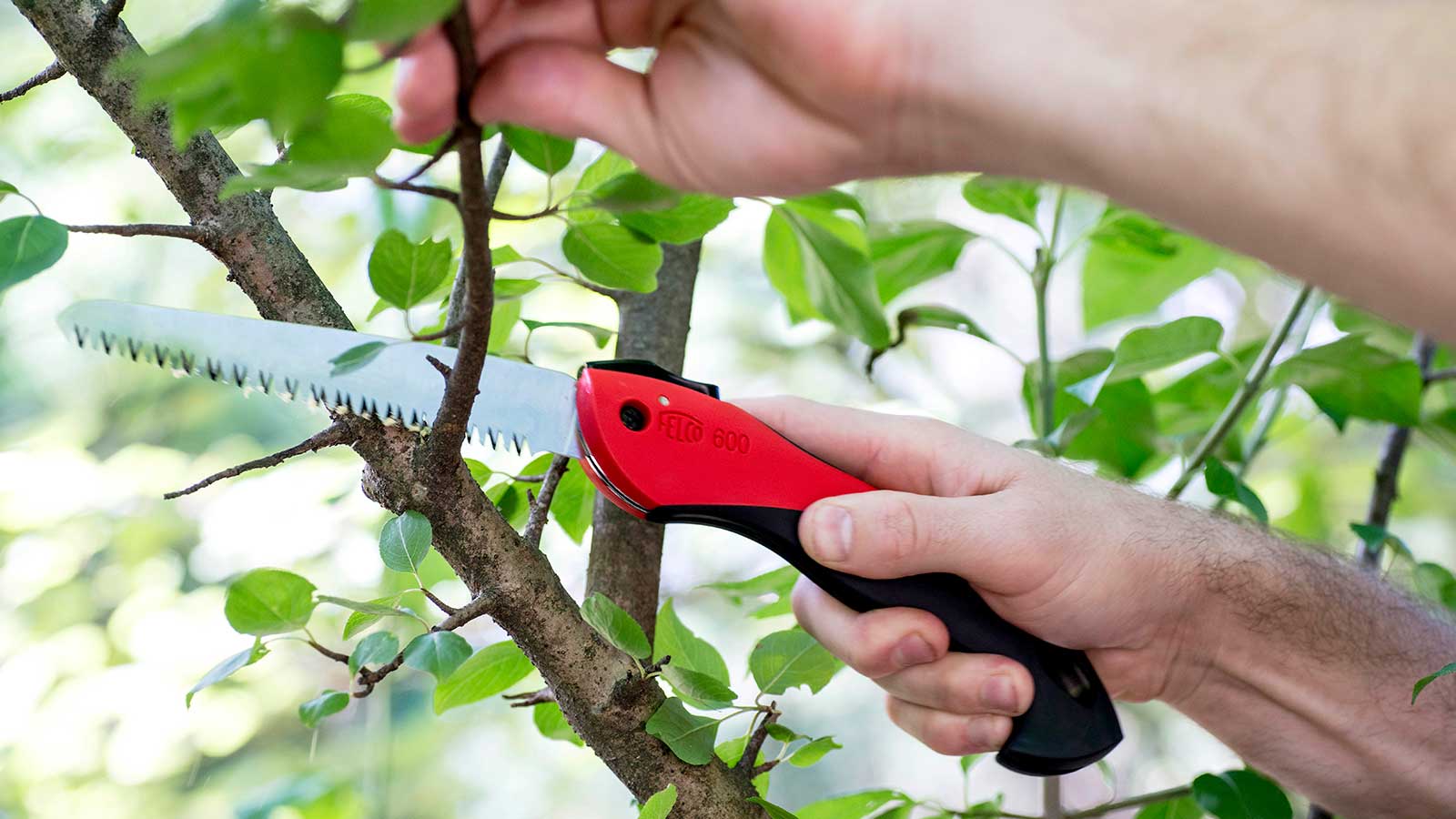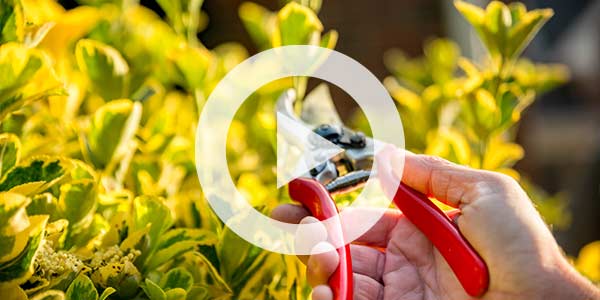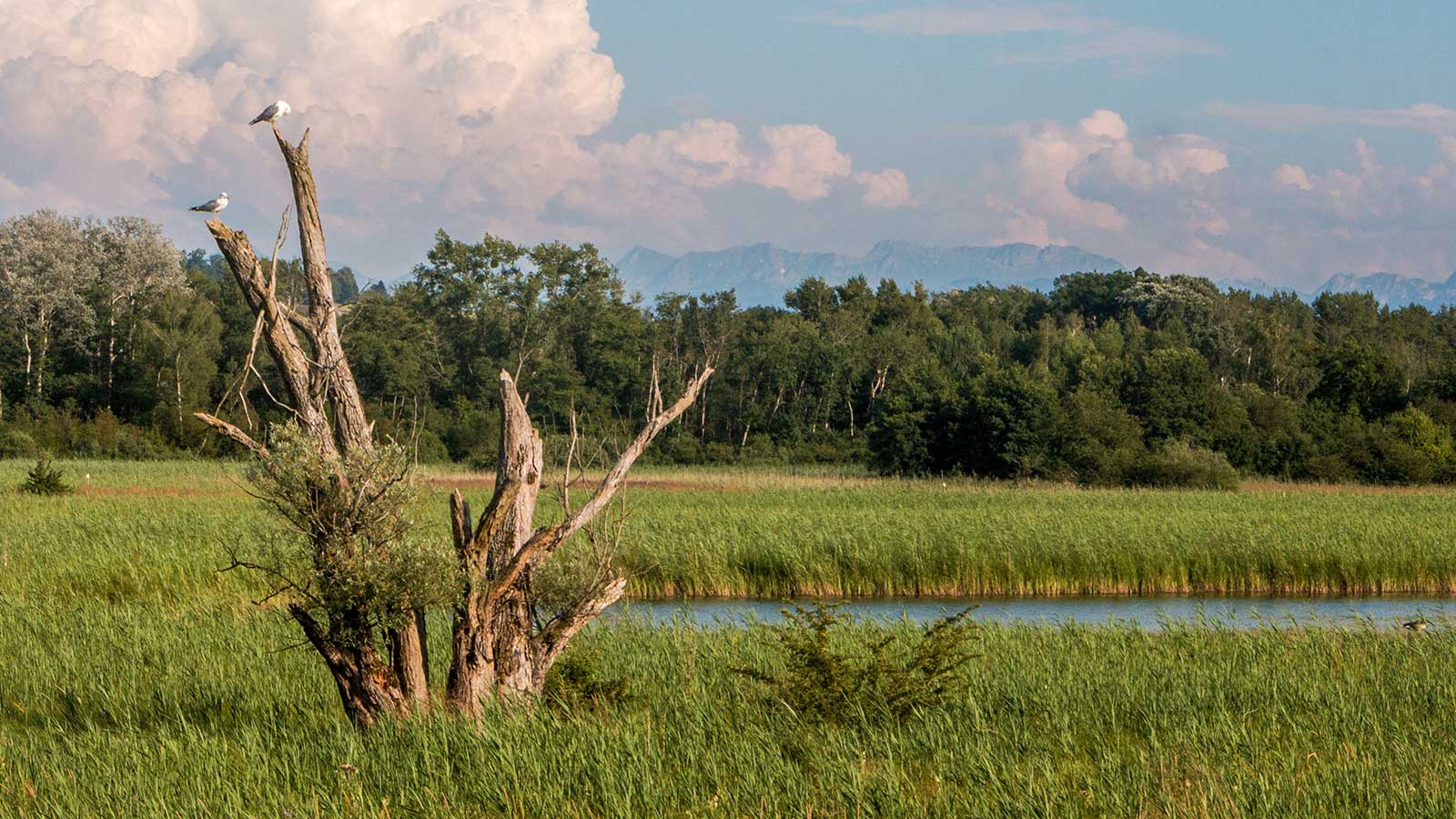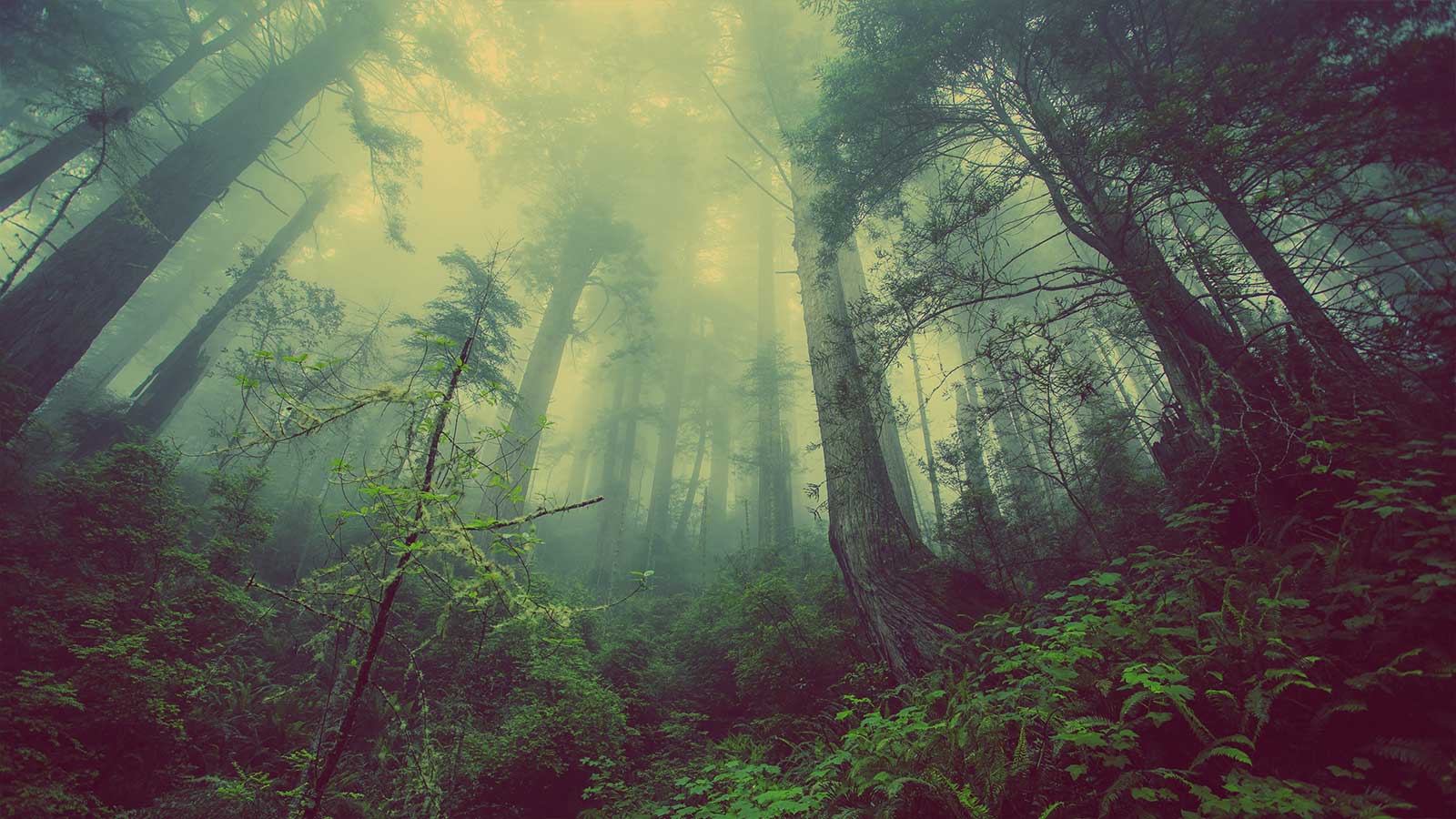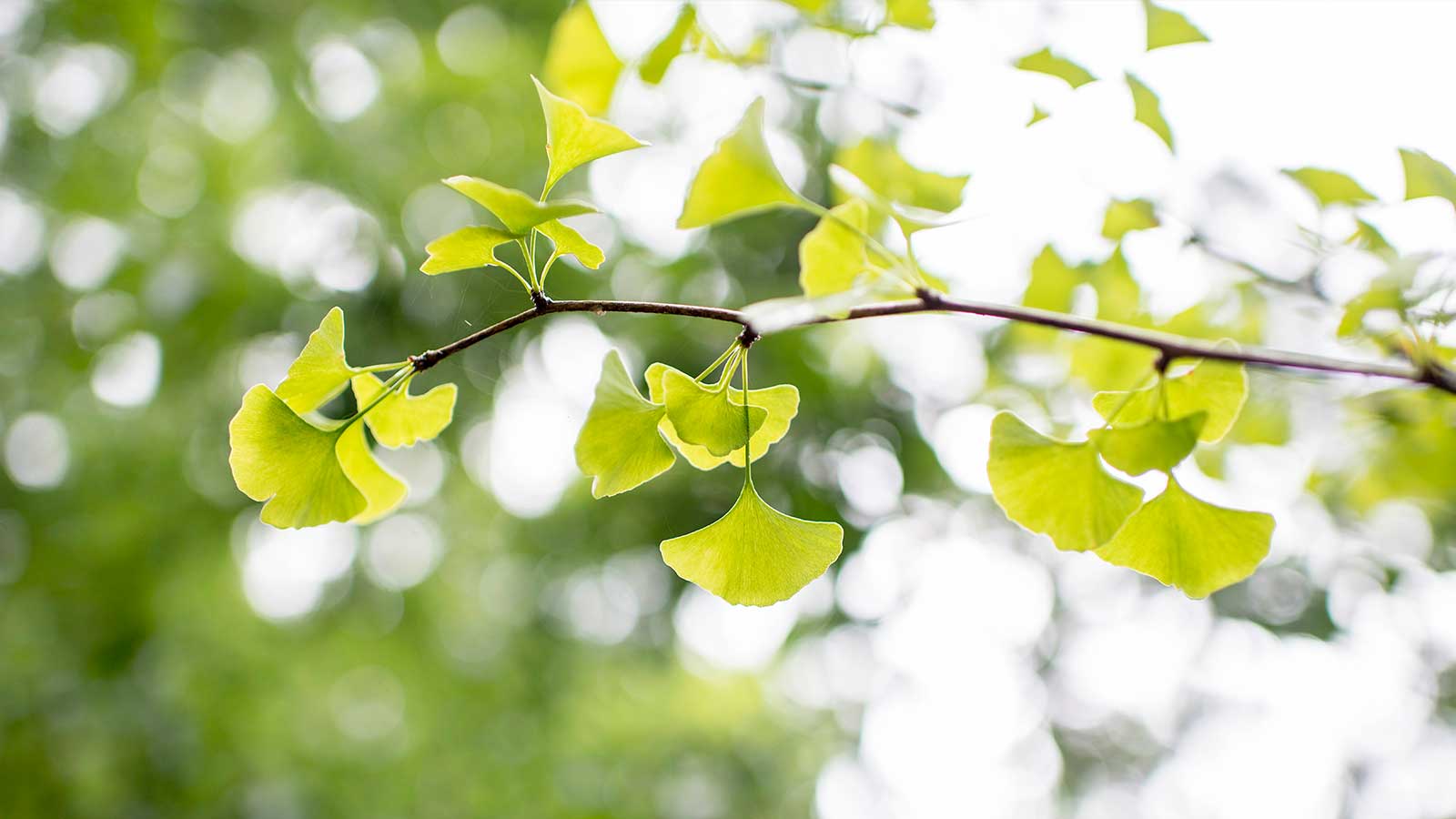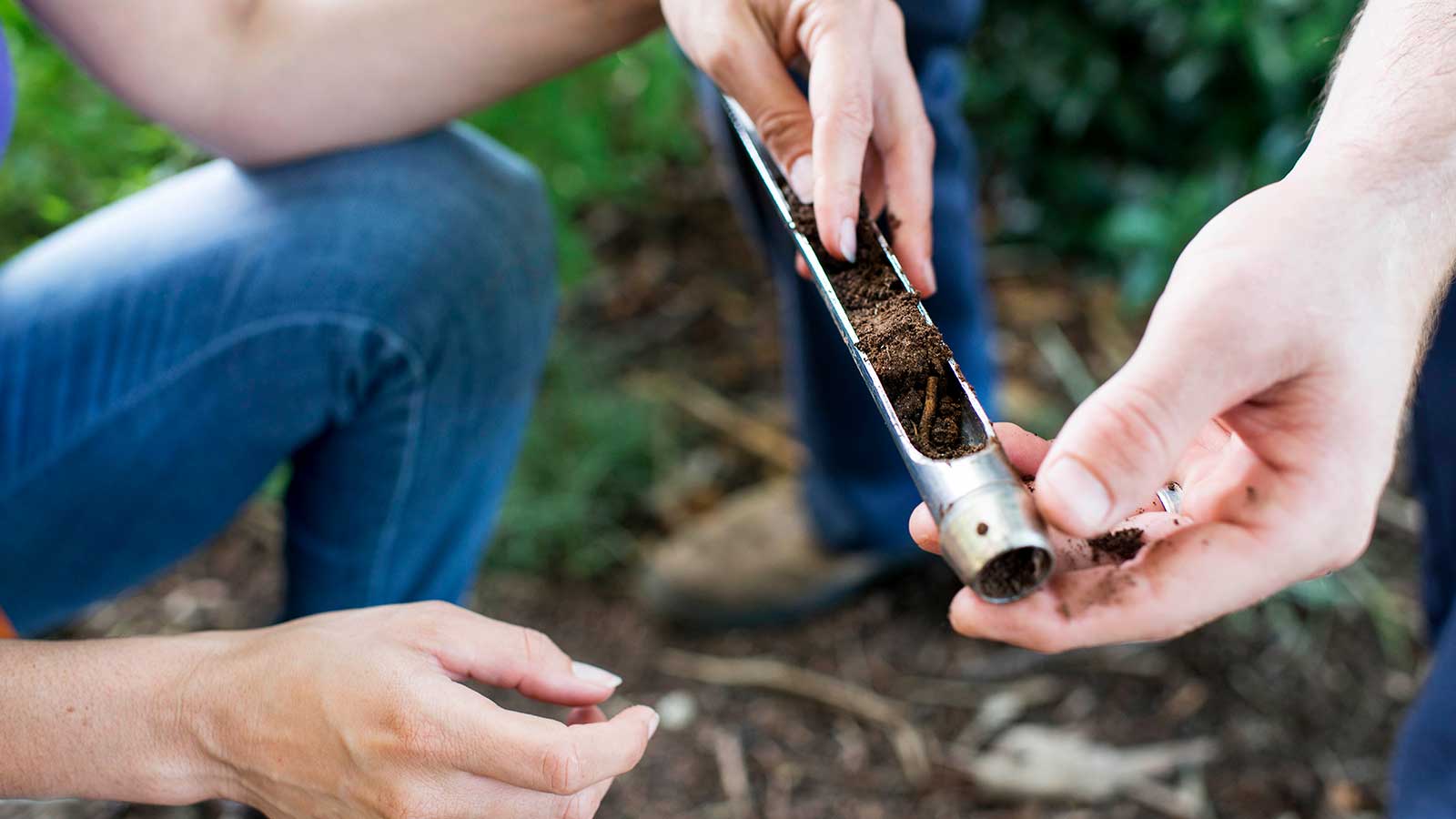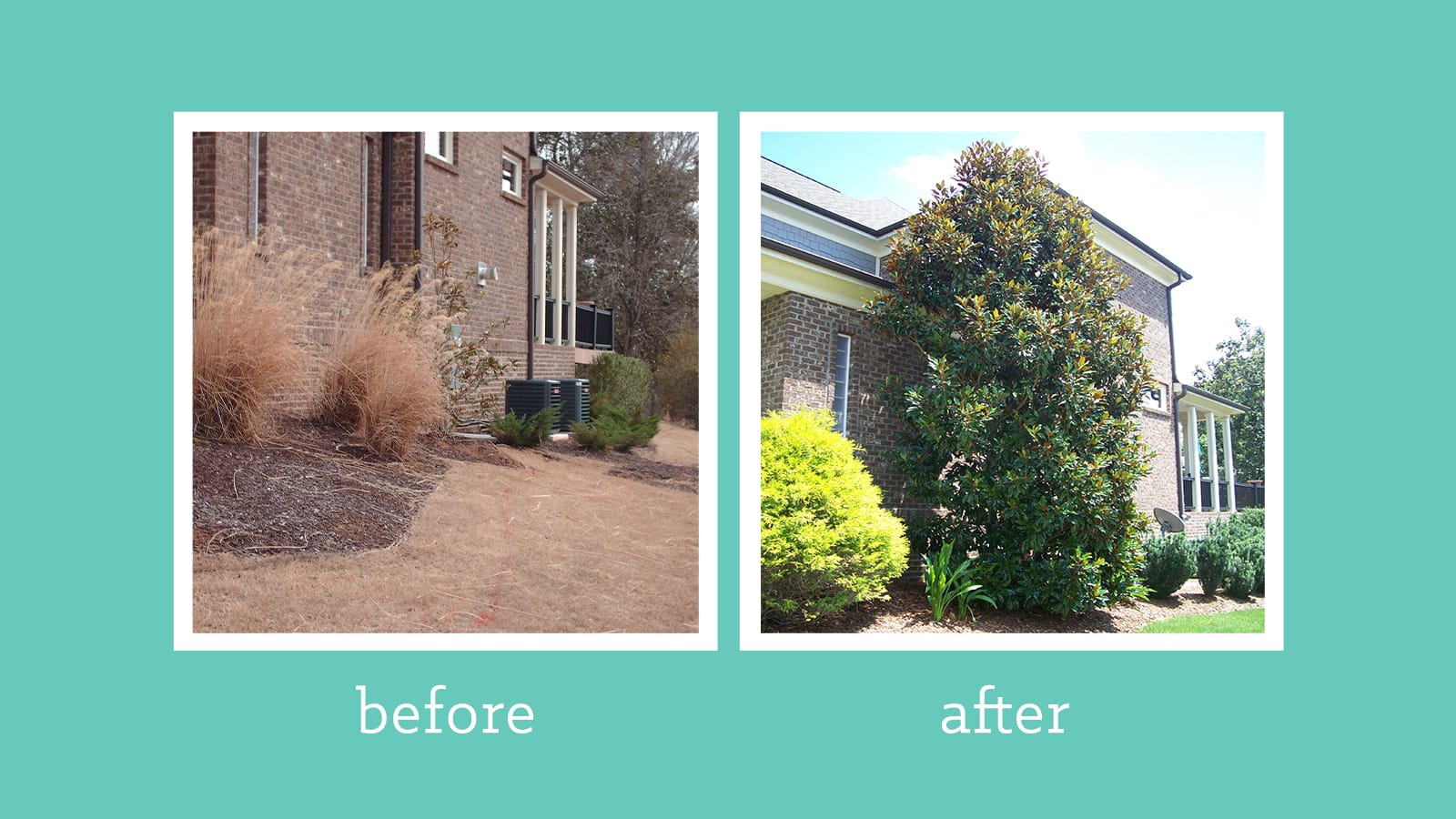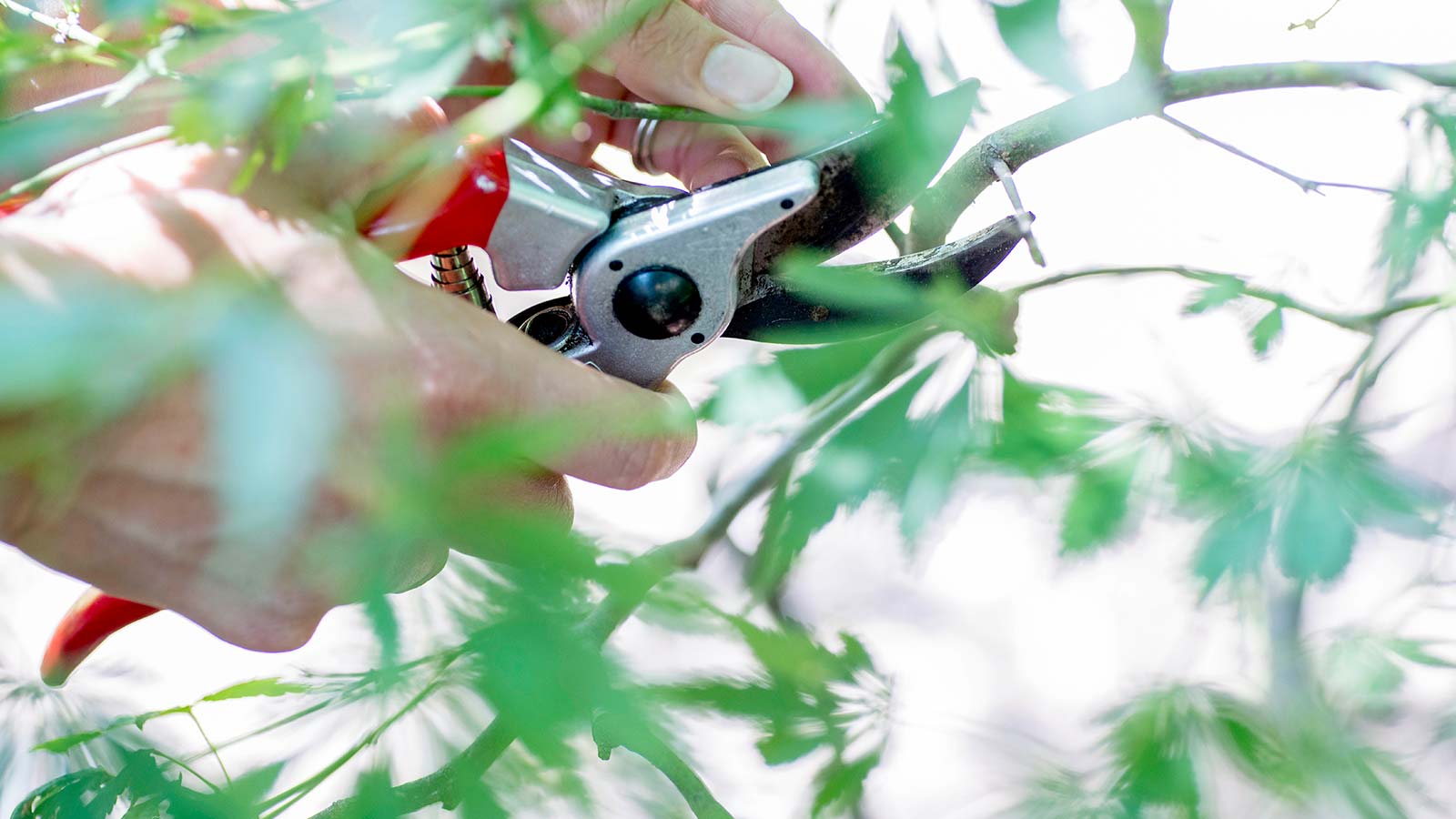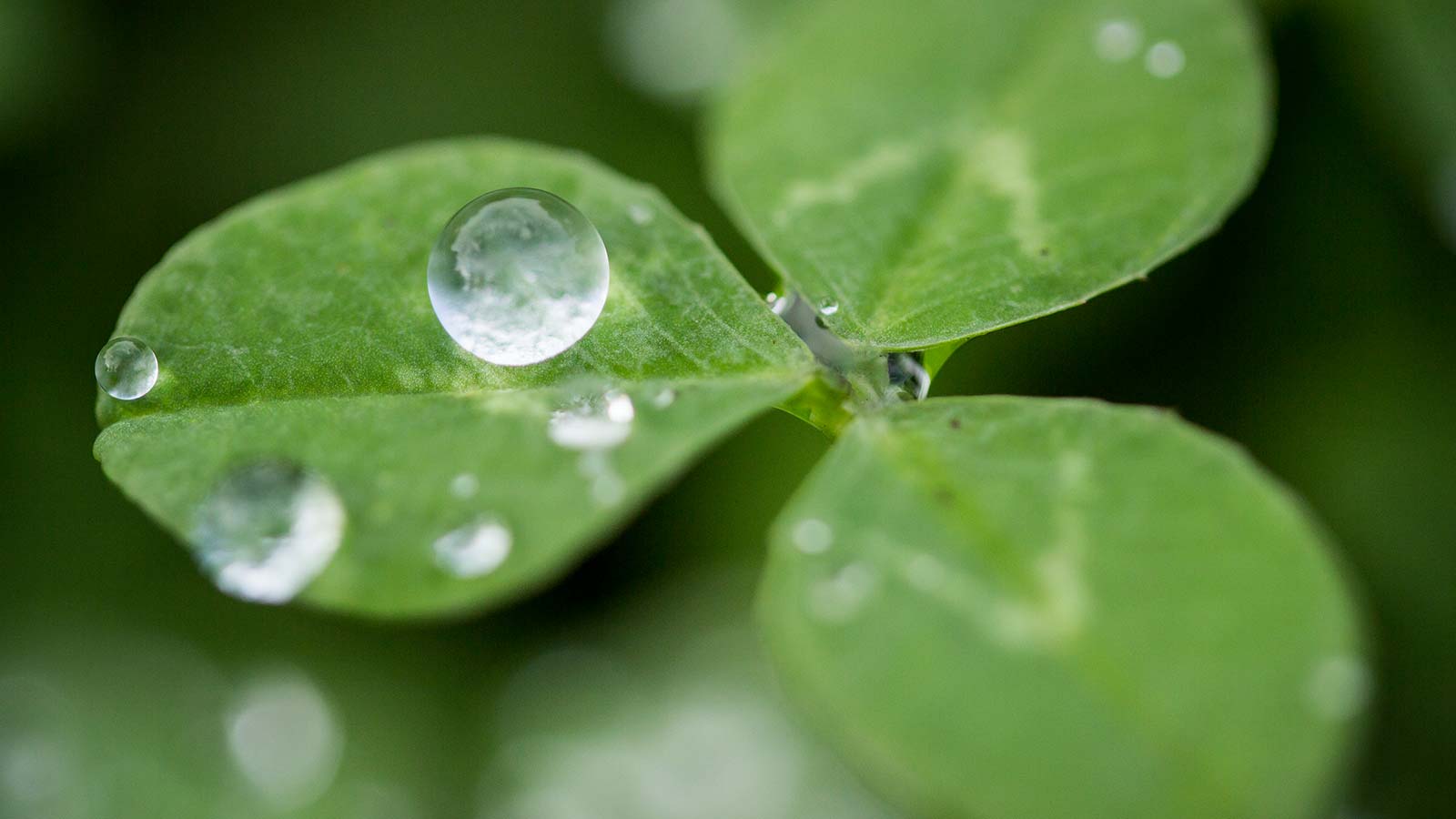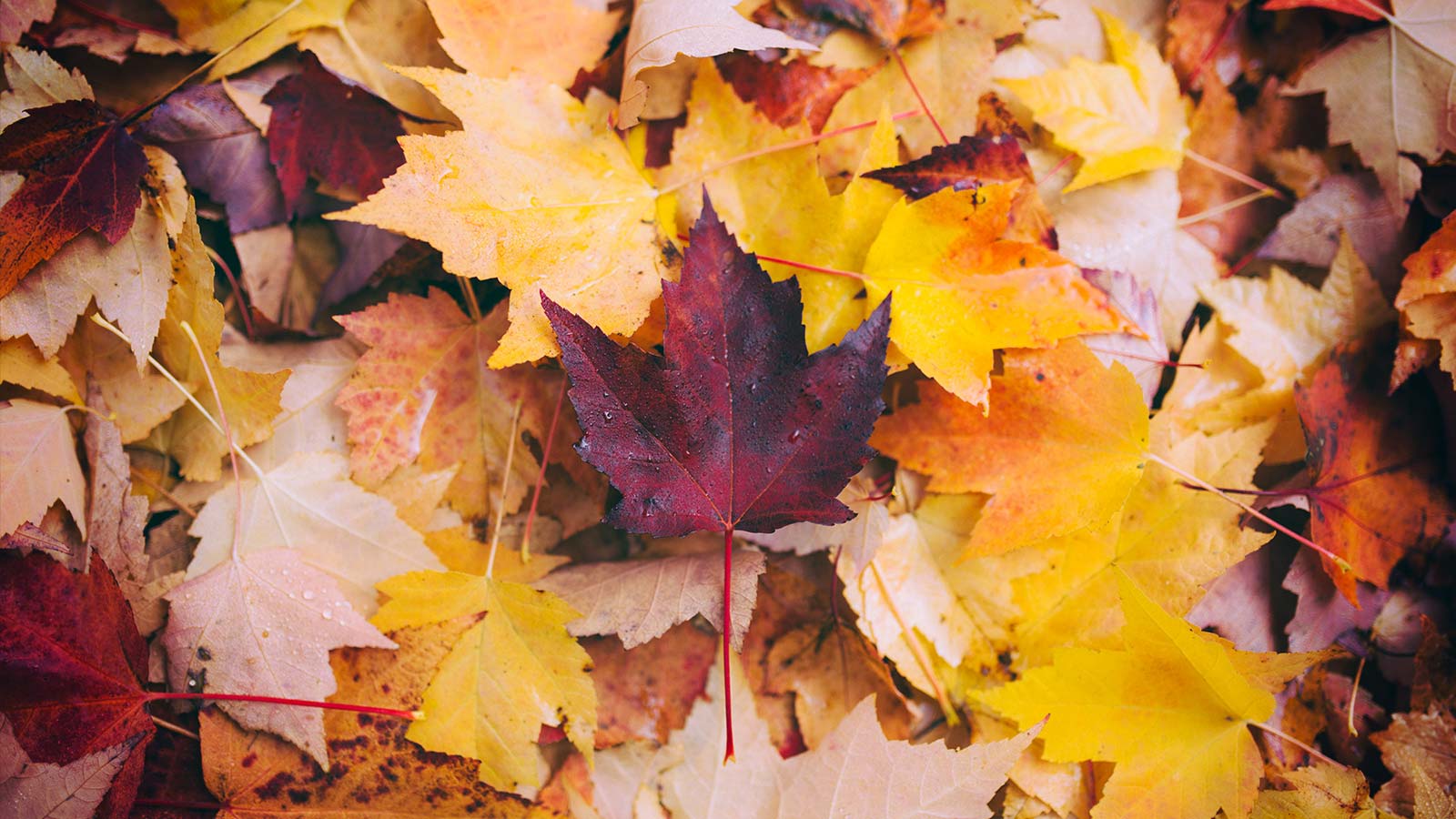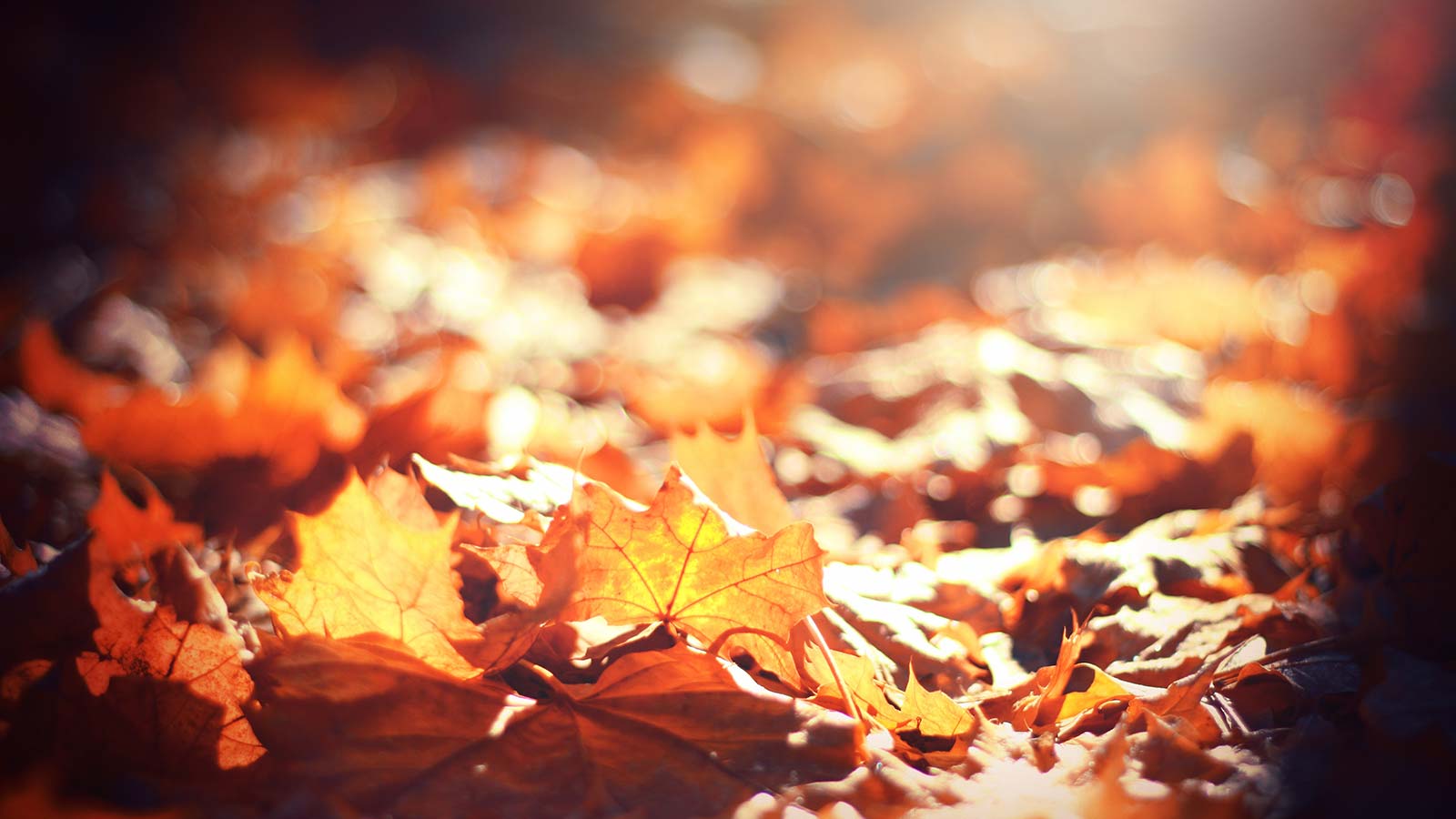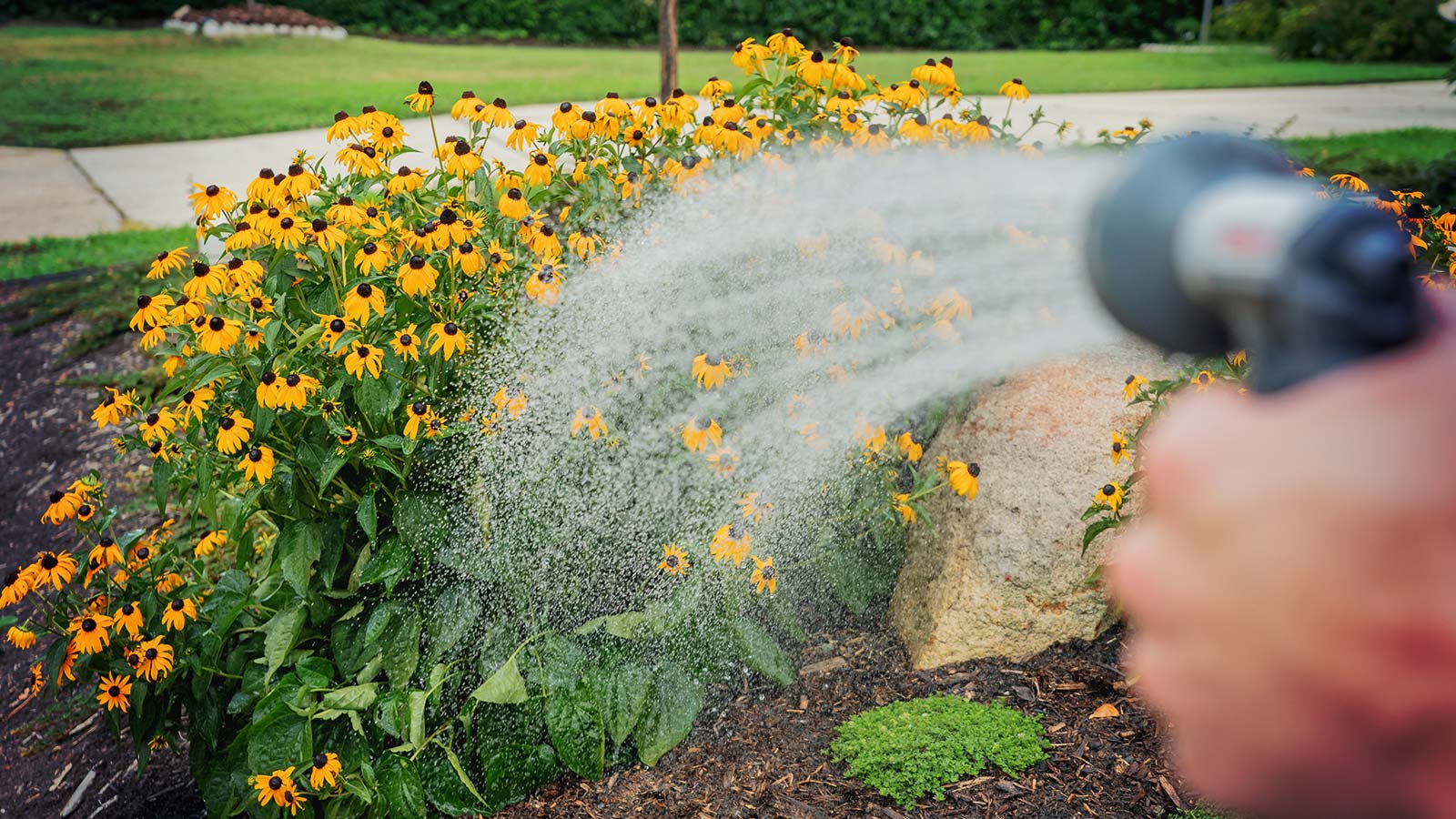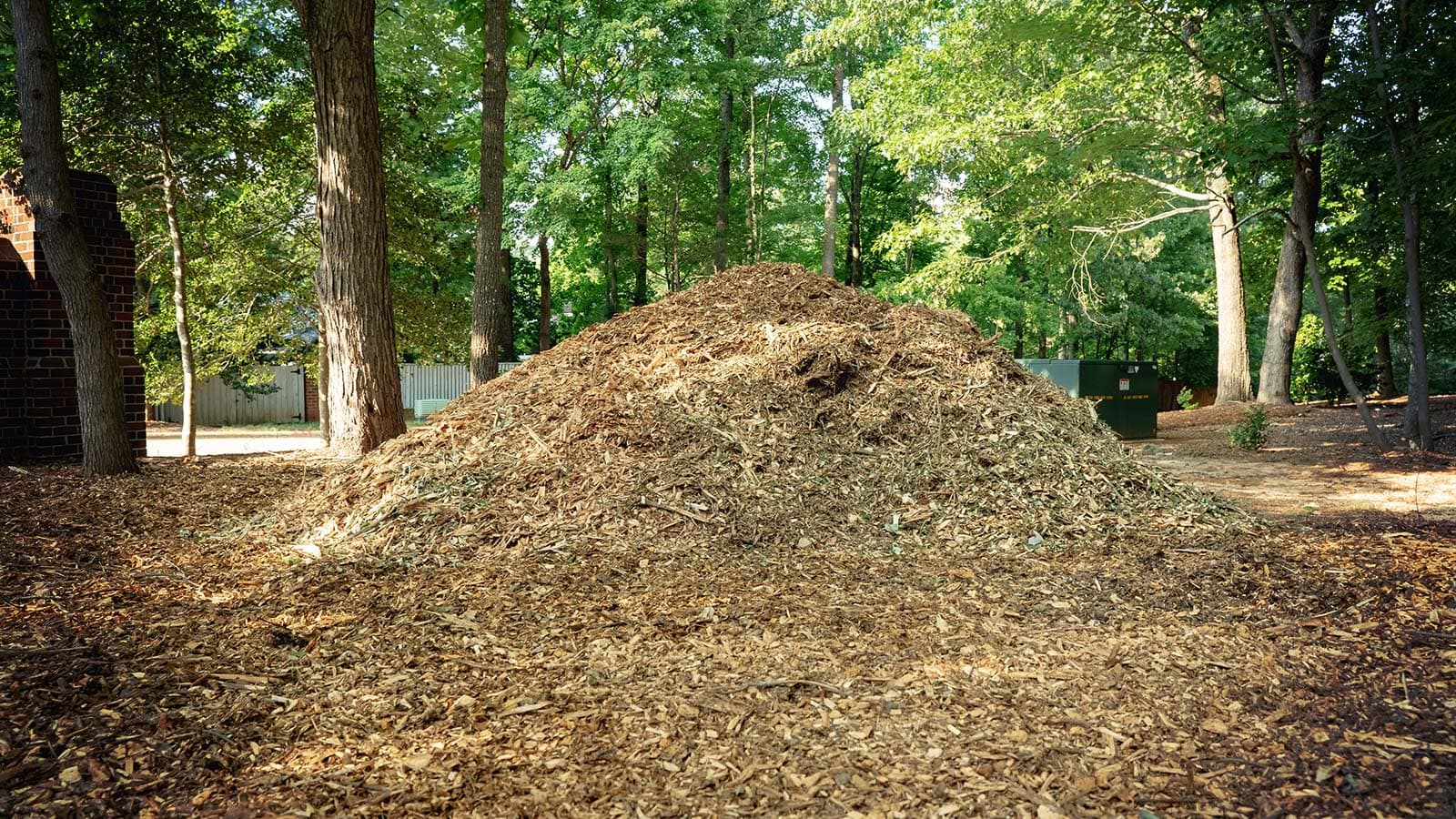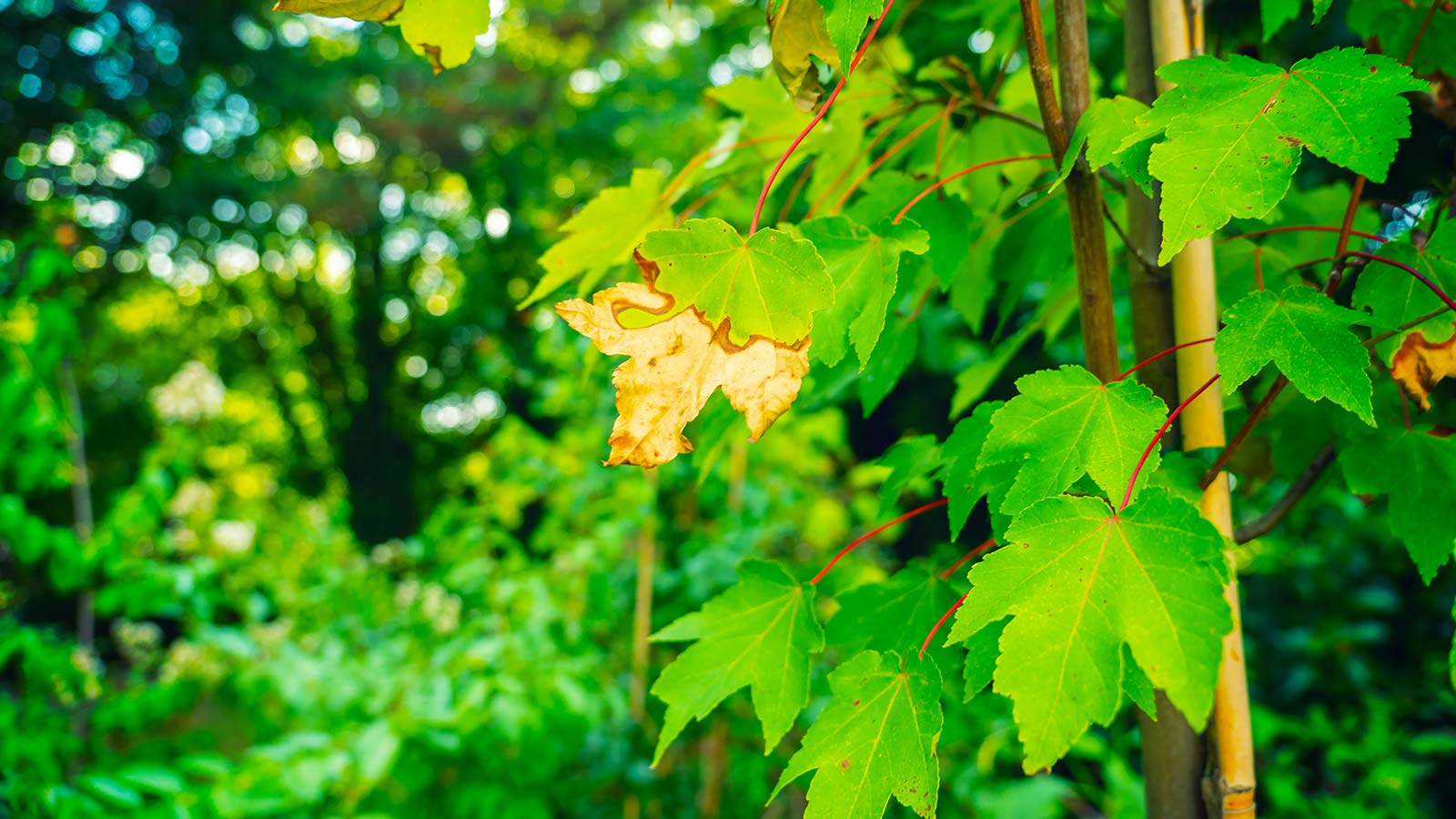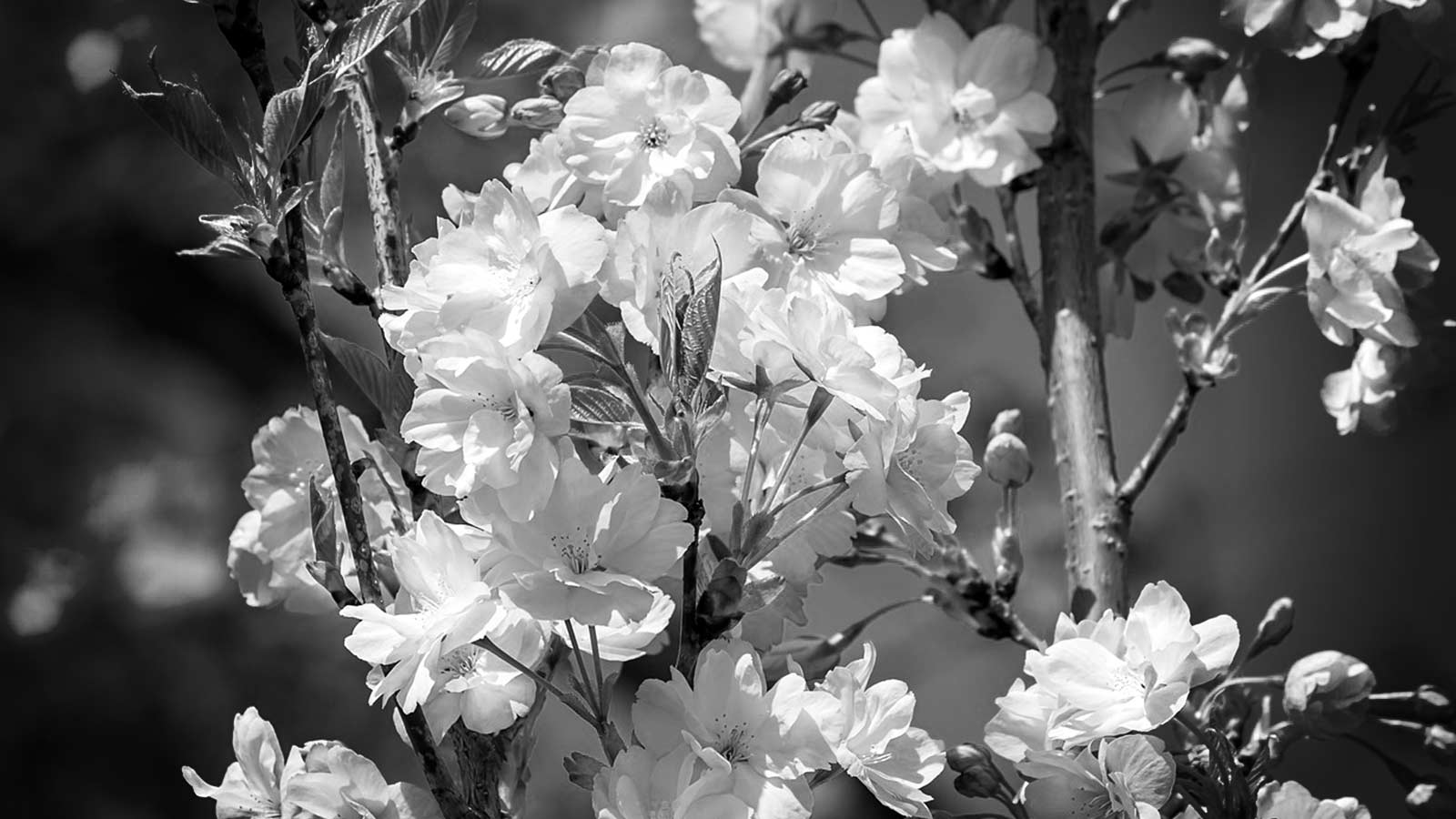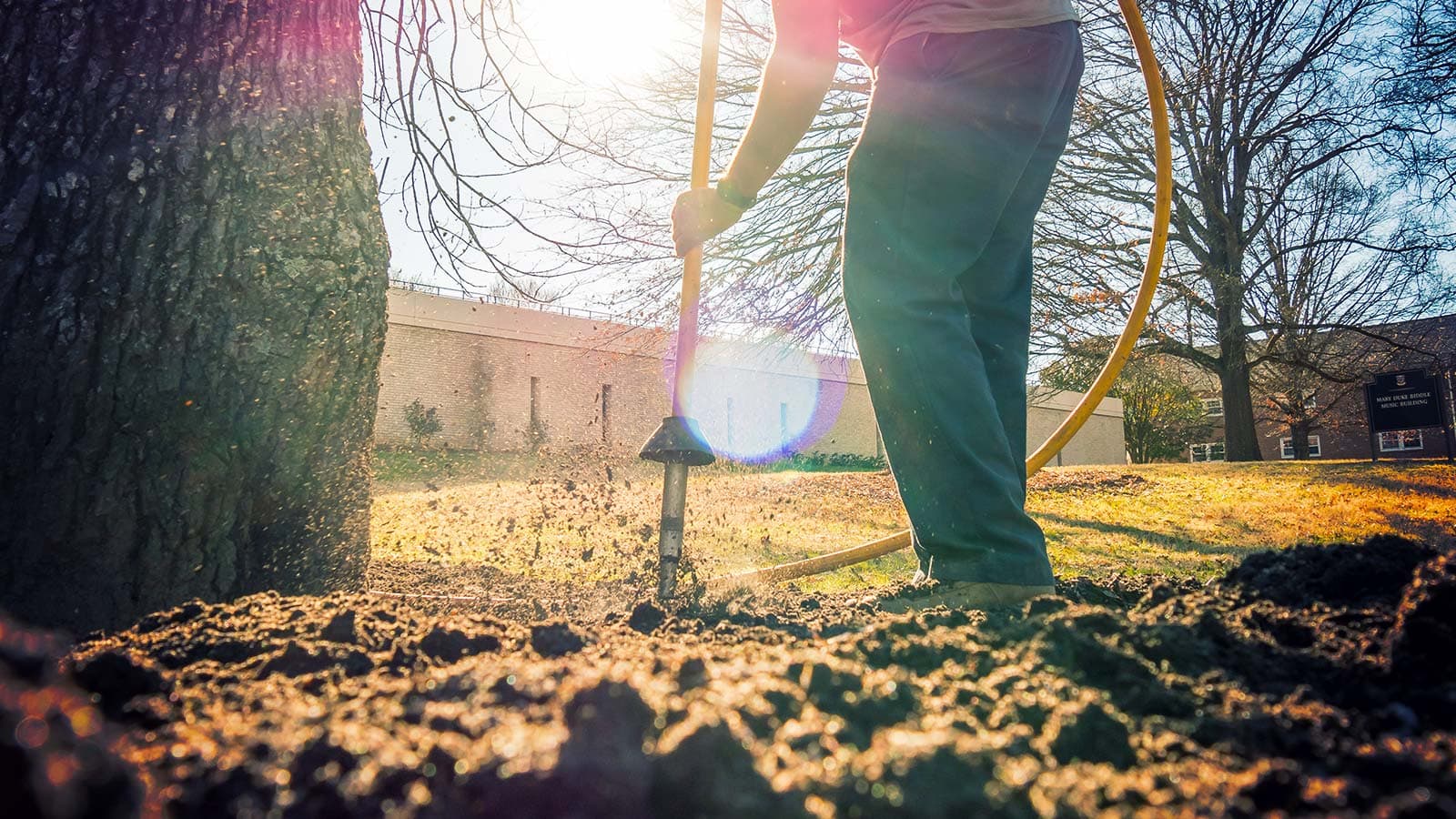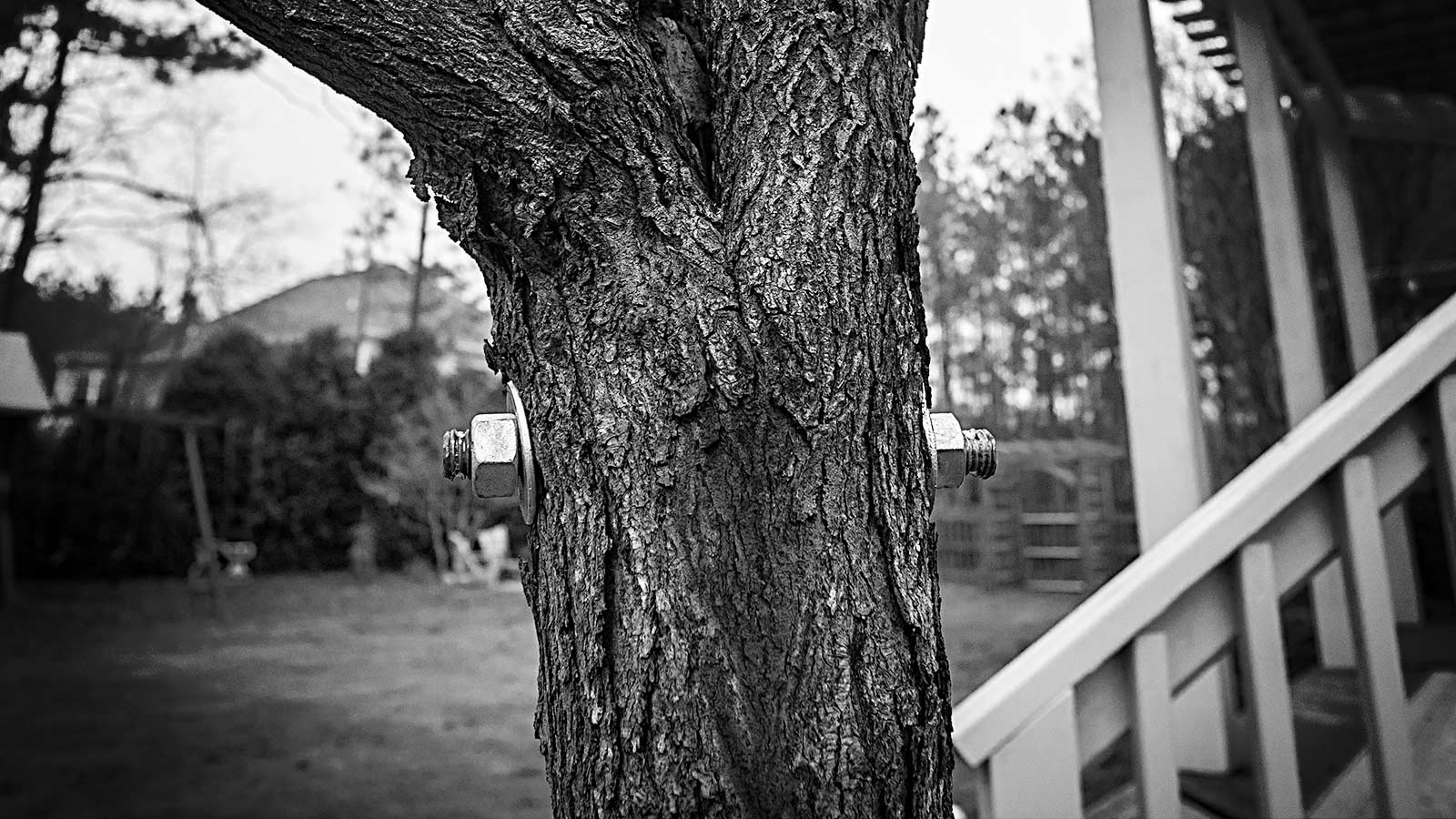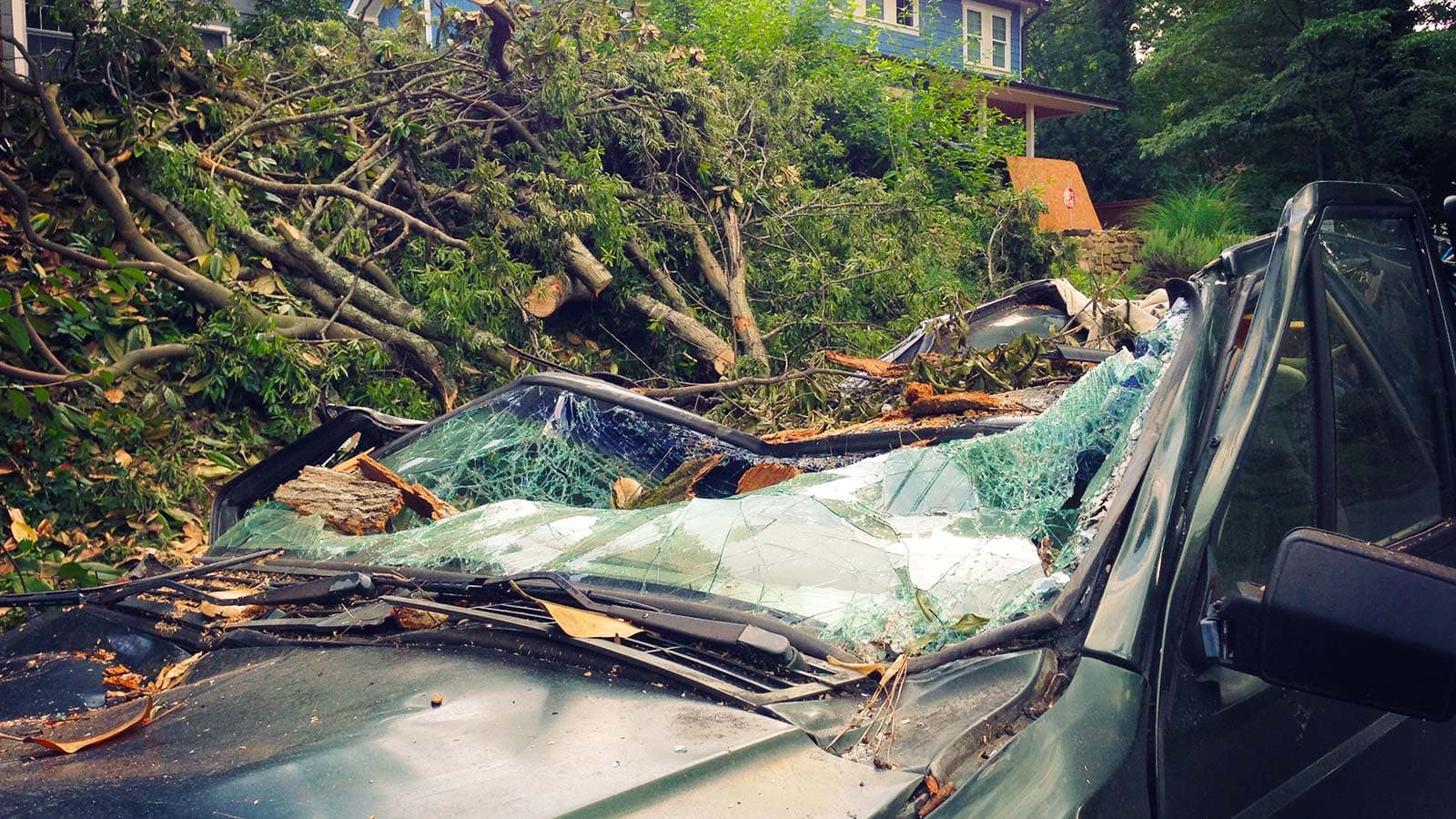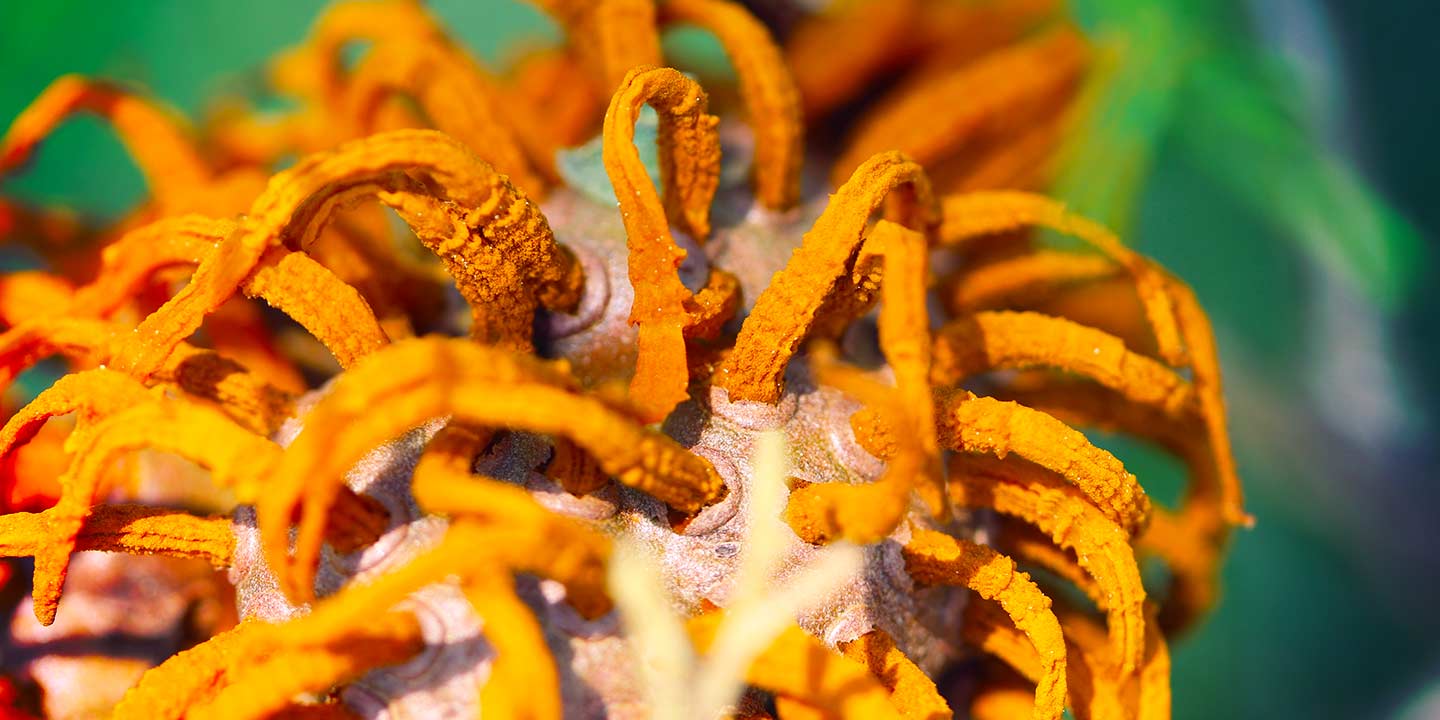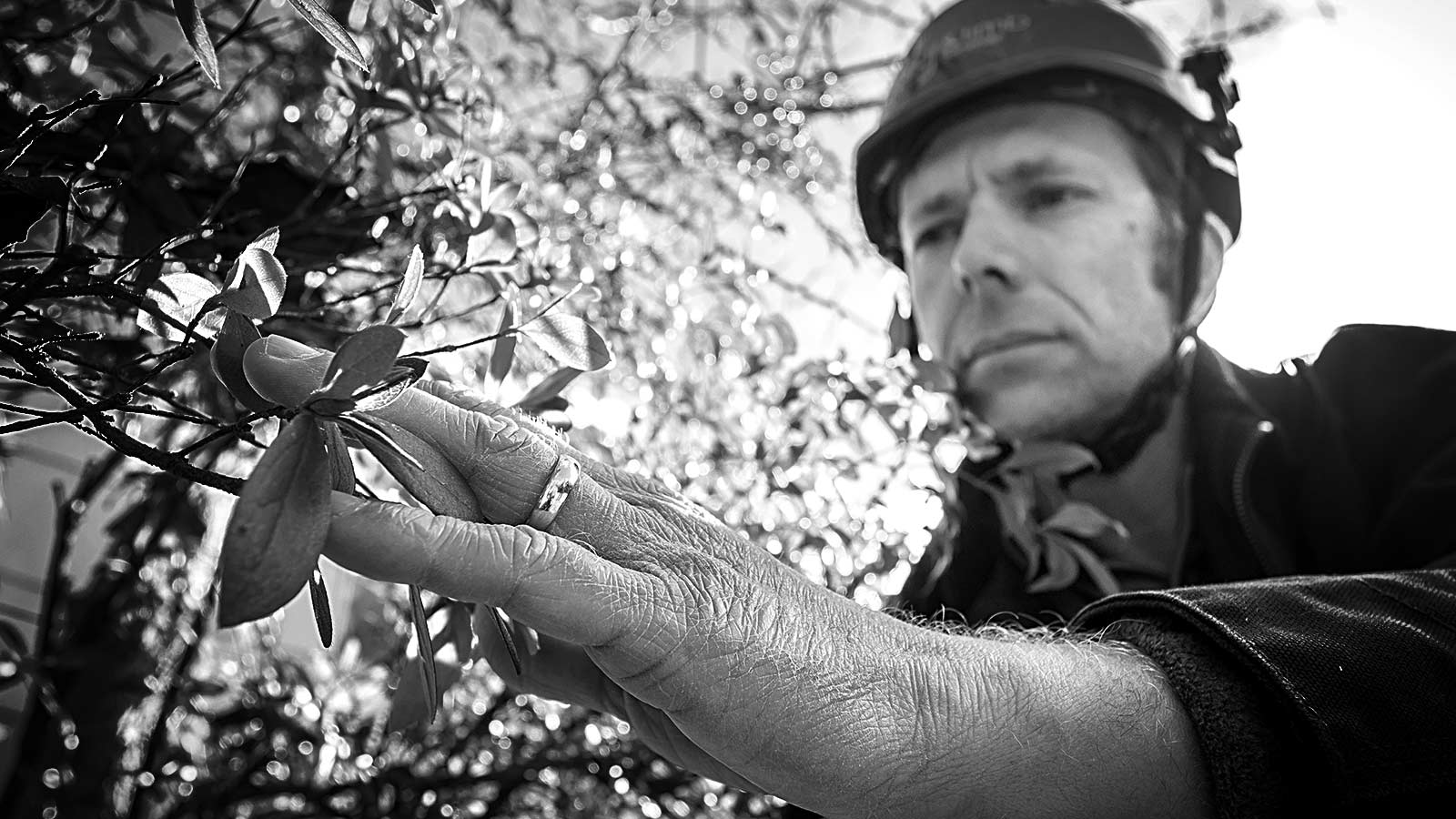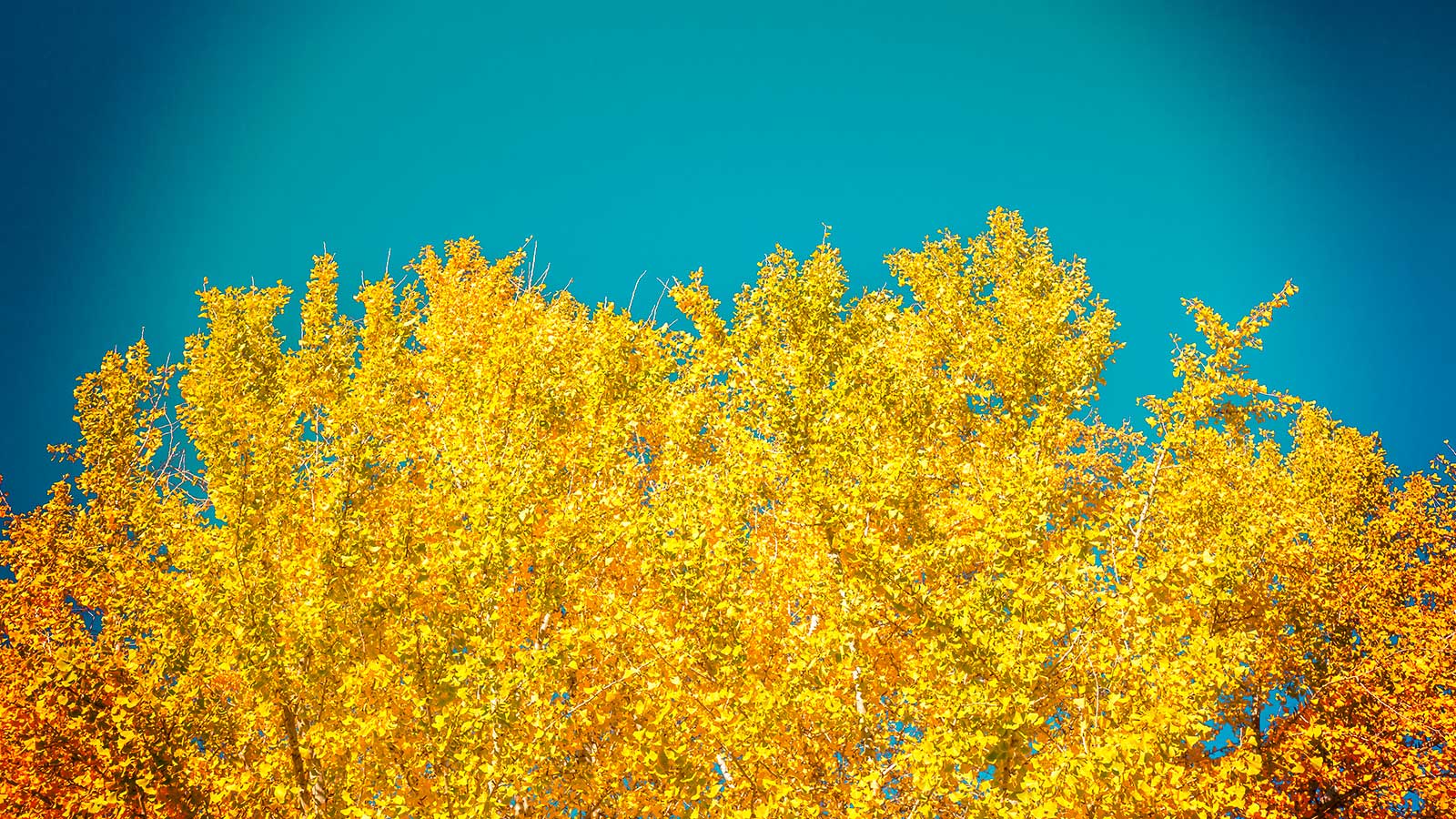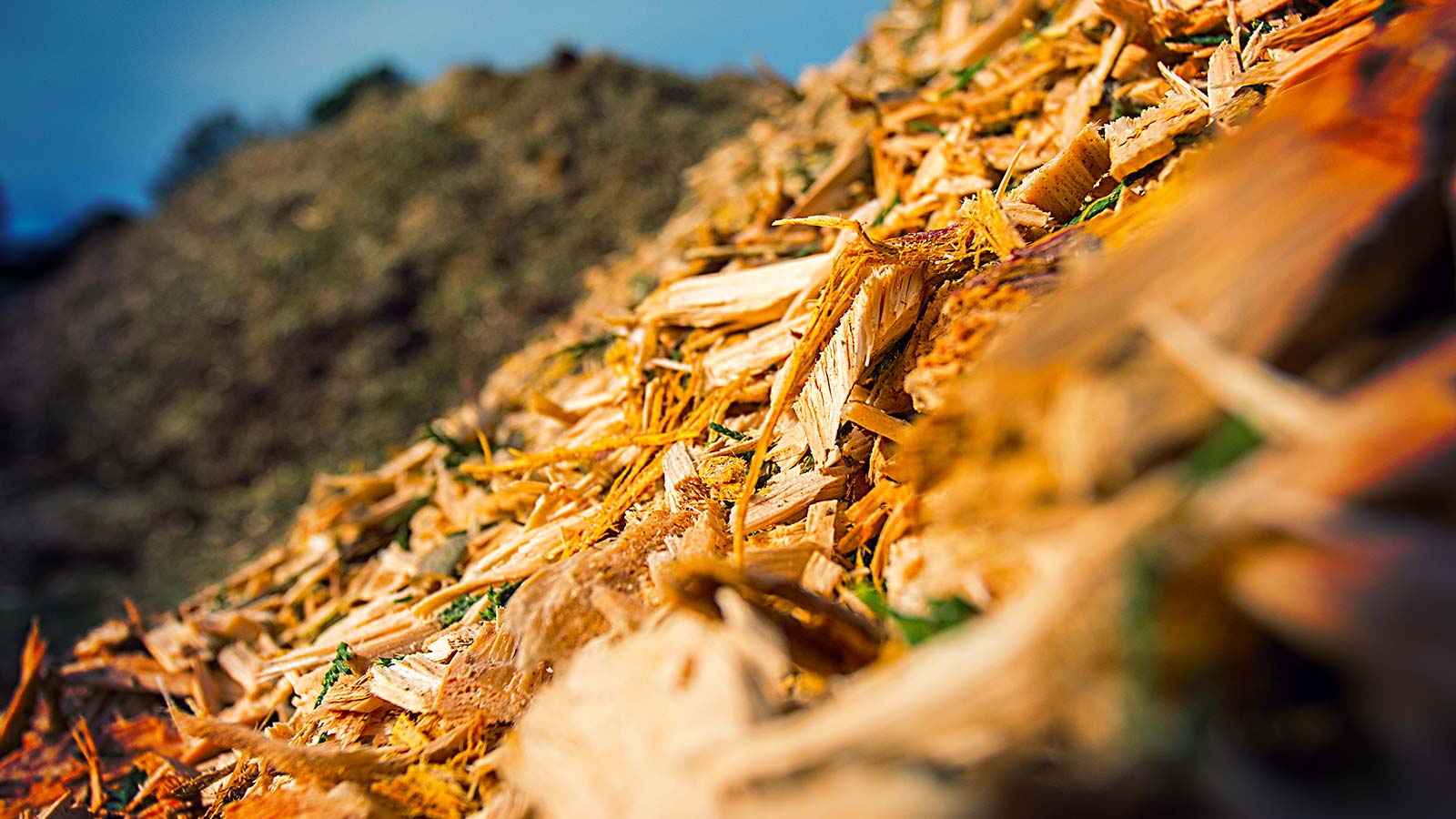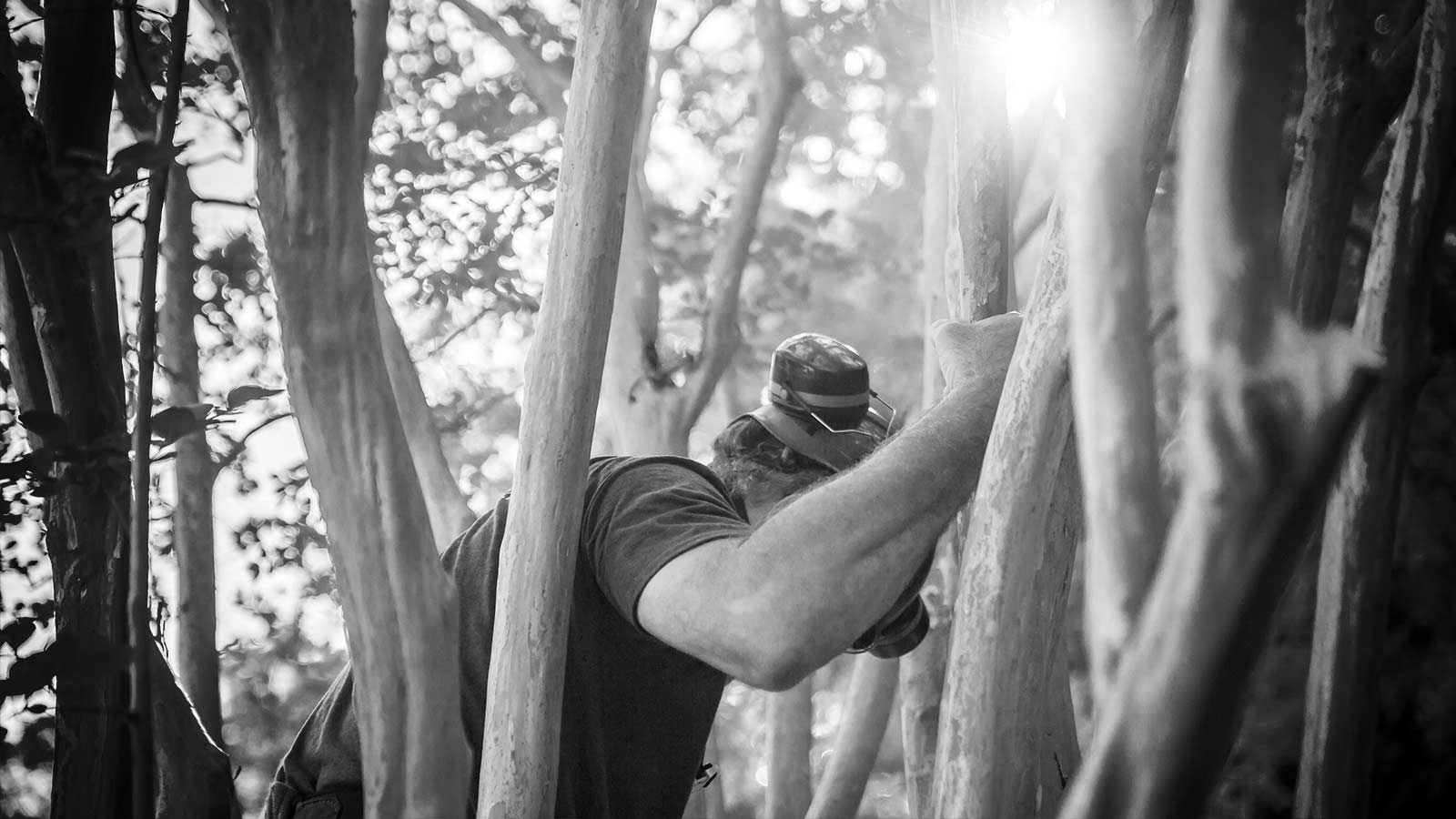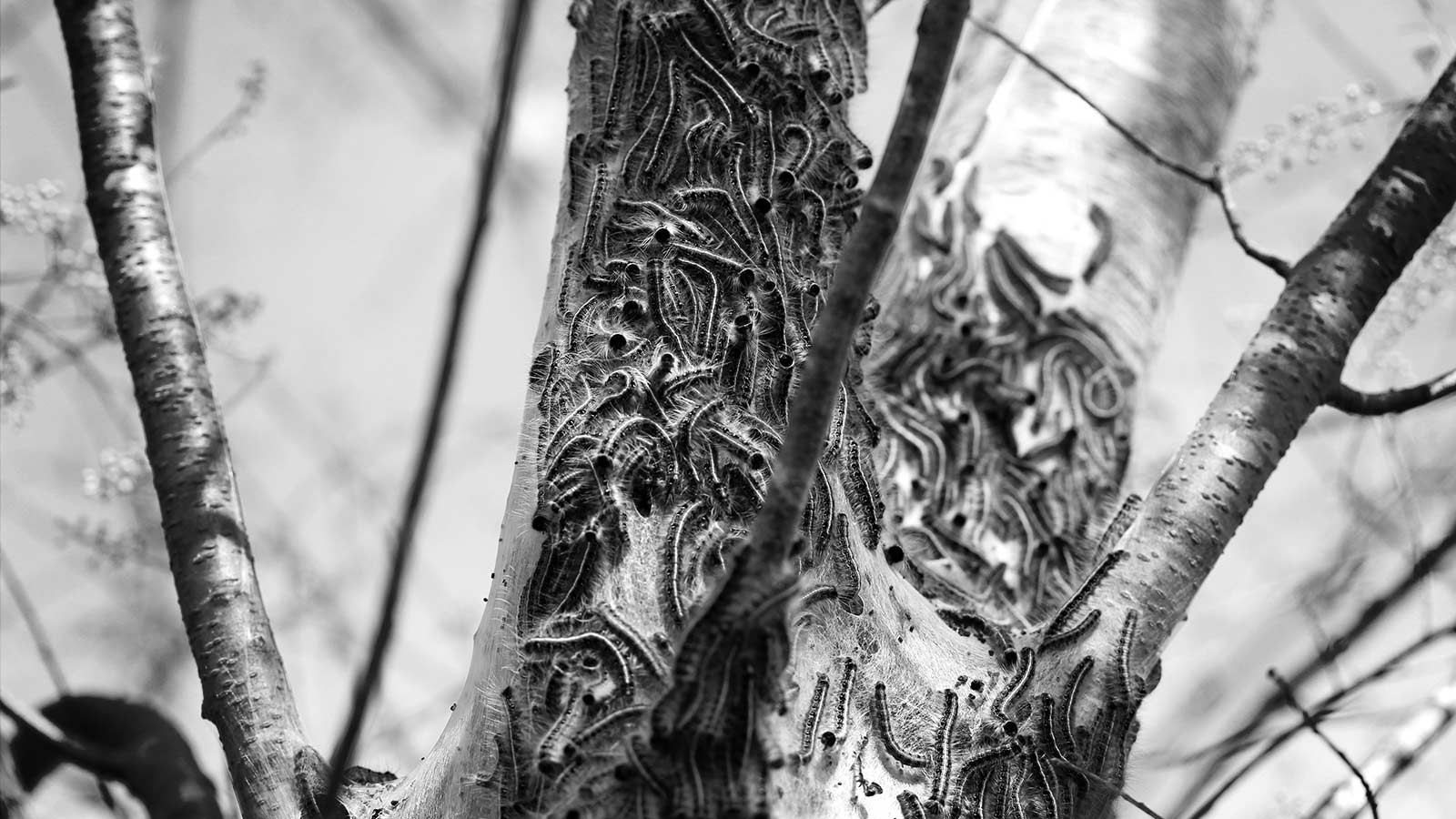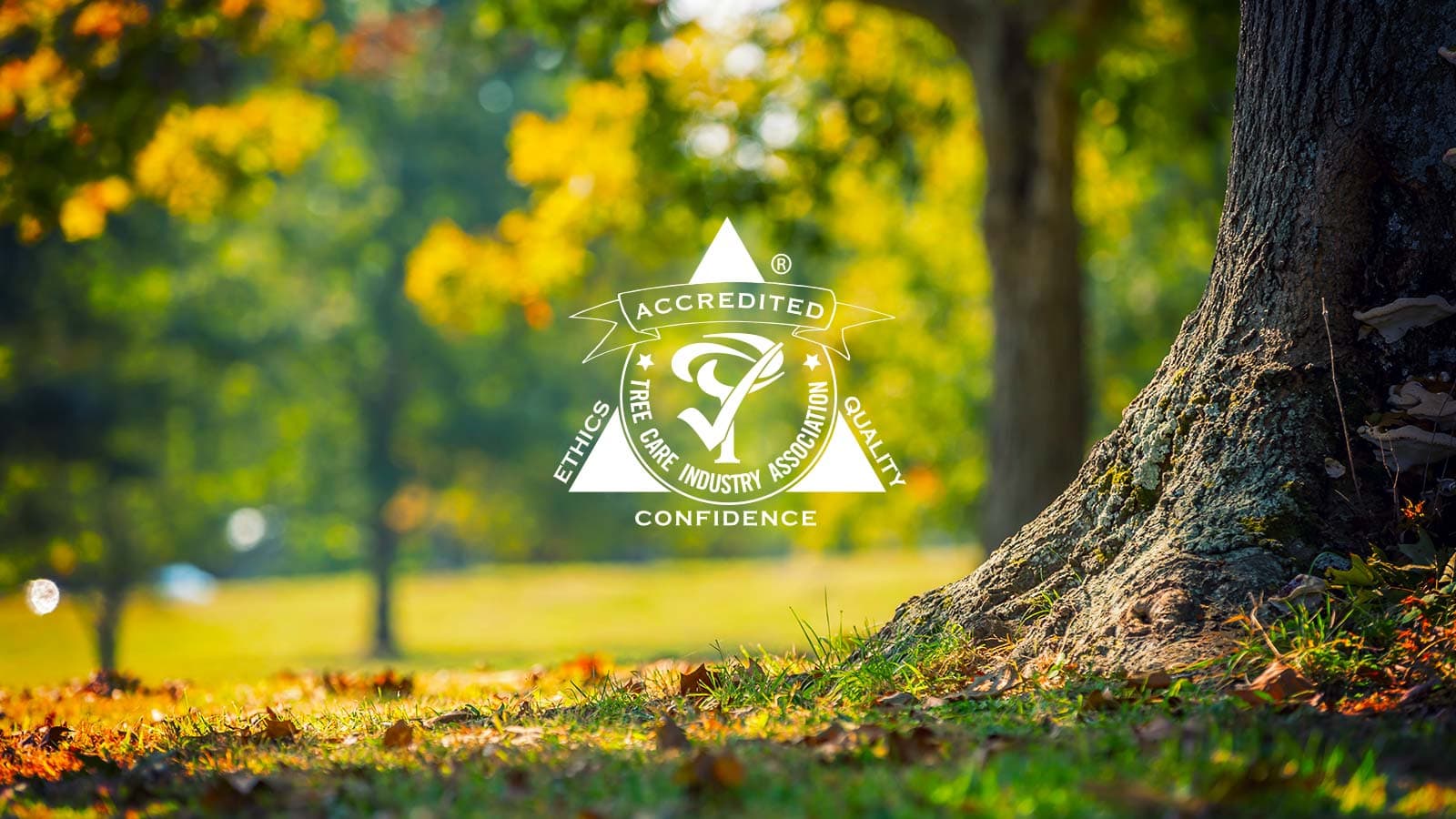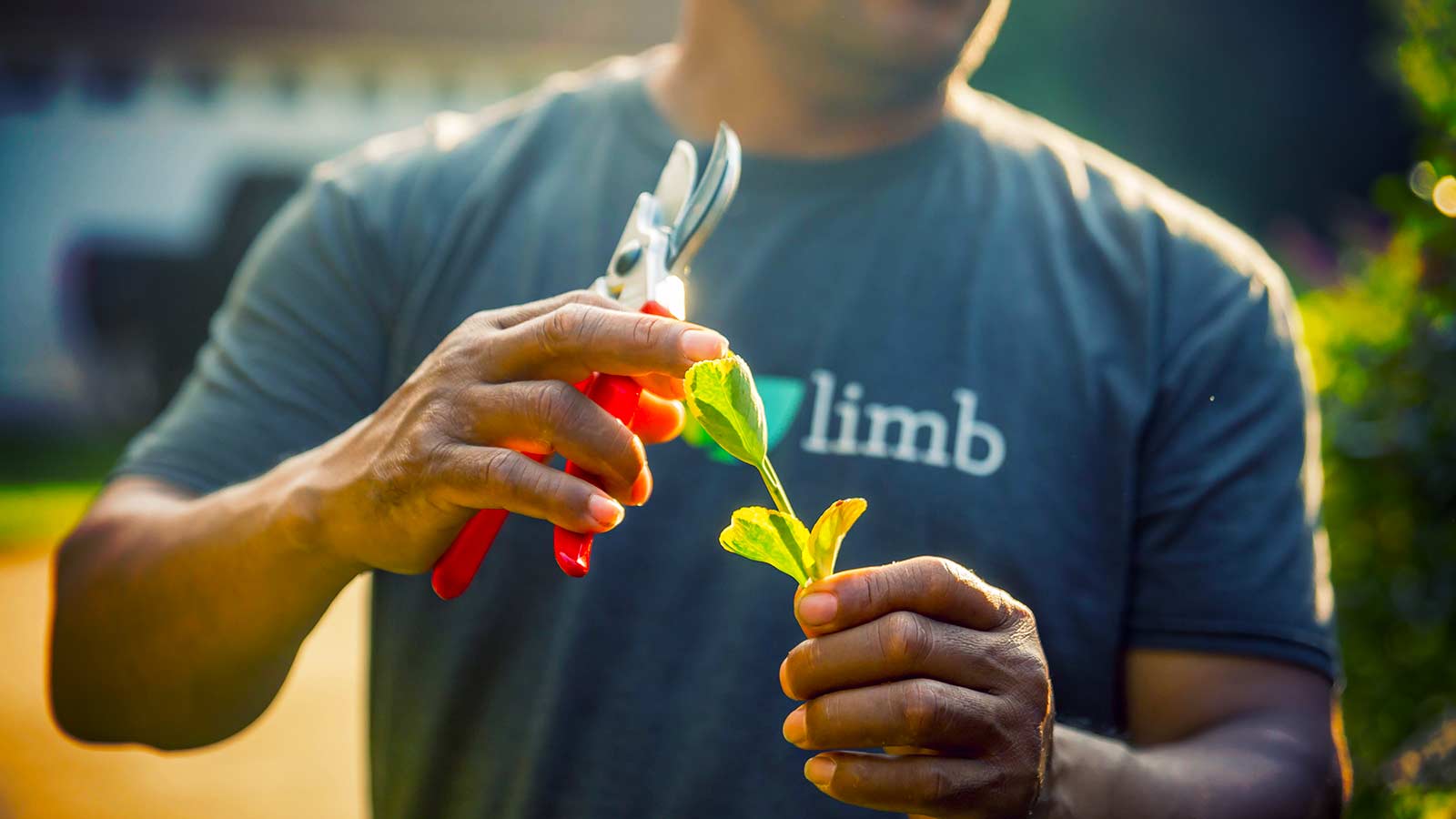Video | How to Plant a Tree: The Definitive Guide to Proper Planting
Everything you need to know about how to plant a tree or shrub perfectly every time.
Hey there, I’m Basil with Leaf & Limb. Today we’re doing one of my favorite things; we’re planting a new tree! Before we start planting, it is critical that we make sure we have the right species for the right spot. And I’ve actually got a different video on this topic which I’ll link below. The second critical thing is that we have to properly plant. If we get the planting wrong, we could end up with a tree that grows to be sick or, worse yet, it dies. So today, I’m going to show you exactly how to plant a new tree.
It’s a cold, wet day in January here in North Carolina. Not perfect for me, but definitely perfect for this tree. I recommend planting when it’s cold outside, so for us here in North Carolina, that runs from basically when leaves fall, all the way through, say March. It’s probably gonna be different depending on where you’re located, but you’re looking for a time when trees are dormant. And how do you know if a tree is dormant? Well, the leaves have fallen off.
In terms of tools, I’m using a shovel, and this is an insulated shovel. I’m using a pocket knife, super handy. I’m also using a tarp; I’ll be throwing my dirt onto the tarp so that I don’t have to clean up later. I’ve got a bucket of leaf compost; this is just good old-fashioned leaves composted down. I’ve got a mixing bucket; this is a bit of a luxury. You certainly don’t have to have this, but I’ll be using this to mix in my compost.
And then finally, I’ve got wood chips. I love wood chips. This is stuff you can get for free from any tree service. It’s basically just branches or parts of the tree that have been chipped up, and they come right out of the back of the dump truck.
One important safety item if there is even a possibility that there are lines underground that could be electric... gas... whatever you name it, make sure you call 811 to get those marked. You definitely don’t want to dig into a gas line or to an electric line. It could kill you or blow something up! One other safety recommendation: use an insulated shovel. That way, if you do hit something, and maybe it’s electric, there’s less of a chance that you’ll get hurt.
First thing I’m going to do I’m going to cut off all my little ties. You see them here with the stake. Sometimes they’re in the canopy as well. Get those cut off, so you don’t have to deal with them later.
The most important part of this entire process is to make sure that you have a root collar that’s exposed and above grade.
So you’re probably wondering what is a root collar? That is where the trunk disappears and turns into roots. Nine times out of ten actually, maybe 99 times out of a hundred, when you buy stock from a nursery, you are going to have a buried root collar. So the first thing we’ve got to do is, we’ve got to expose our root collar. So for this, you just simply start digging away. Now let me show you something. You’re looking for structural roots. These are not the tiny little roots like this. This is a little adventitious root here. It’s just, you know, it looks like the size of a big hair or something that’s nothing to be worried about. That’s something we actually want to cut off, which I’m going to do that now.
What we’re looking for is something much bigger. Okay, here we go: this is a structural root. A structural root is going to be maybe the size of a branch. So if you look up and you see these branches, you would expect to find structural roots that are at least that large. In this case, it’s actually larger, and actually, what’s nice about this particular tree is we have multiple structural roots. So that’s great. We do not want these little adventitious roots here above. So I’m going to expose my structural roots, and then I’m going to dig everything down to that level. I want to get the whole bucket, and you might not be doing a container. Maybe you’re doing a balled and burlap, that’s where they use a wire, and they have burlap around the root ball. It’s the same idea. You have got to find the large structural roots and then bring the soil down to that level. That gives us the baseline for where we’ll go next. All right, so that’s it. I’ve brought the grade down to match my structural roots. Which you can see beautifully right here, and another one right here. This is a picture-perfect definition of an exposed root collar.
The next really important thing is we’ve got to get our measurements just right. We want to dig a hole to the perfect depth, and what is the perfect depth? Well, it’s deep enough such that this root collar is at or above, just slightly above, the surrounding grade. If we dig a hole that’s too deep, and we put the tree in that hole. Then over time, we’re going to have rainwater washing dirt and mulch, and we’ll bury this root collar again. And if we do that, then we’re going to be right back where we started. And we’re going to have a tree that’s surely going to die, or it’s going to be very sick. The way I like to get my measurements is I like to use tools I have on hand. You can certainly use a measuring tape, use all the tools you want. But for me, I like using a shovel.
So, in this case, here’s how deep I have to go. And that depth is exactly double the black rubber. So I need to be rubber plus one, and that’s how deep I want to go. And remember, do not dig any deeper than that. Better to air on the side of too shallow versus too deep. In terms of width, I can eyeball that. I want to be two to three times wider than this root ball. So this thing’s about a foot and a half wide. I’m going to need to be, you know, three to four and a half foot wide hole. All right now, we dig, and this is the fun part.
All right, so here we go. Let’s talk about width and then let’s talk about depth. The width here is right at four feet, and we know this root ball is about a foot and a half wide. So that puts us right in the optimal range, which is two to three times the width of the root ball. I want to show you what this looks like here. Check that out. There’s a lot of space around the edges. And we want that because as this new tree begins to grow and establish, it’s going to be pushing out lots of little roots. And we want to have a hospitable environment out here where those little roots can grow and help this tree establish and become healthy.
Okay, let’s talk about depth, and just remember with depth, there’s a lot of ways you can measure it, but we have one goal. The goal is this root collar, root flare, same thing. This needs to be at or above, slightly above, the surrounding grade. We don’t want it sitting up too high, and we definitely don’t want this below the surrounding grade. Otherwise, the tree will eventually die a premature death, most likely. So again, at or above grade. I’ll show you my trick for measuring. I’ll take a stick, so you know we’ve got this stake that was in the tree, you can lay it across, now we take the shovel, which we know, and there we go. That’s exactly the right distance. It’s actually a little bit less than we measured, which is good because that means that the root collar is going to be just above the surrounding grade. Which I prefer because I know that over time these root balls will settle, just a little bit.
All right, we’ve got the hole to the right width. We’ve got the hole to the right depth. Now we’ve got to get the tree in the hole and stabilize the tree. So conventional wisdom says you should cut this pot off of the root ball and place it in the hole. My problem with that is that now you have a piece of plastic that you can’t reuse. If you leave the bucket whole, you can either give it back to the nursery, or you can use it around your house. They’re actually really handy. You can even grow some more trees if you want. So what I like to do, is I like to squeeze the sides a little bit, kind of break it up just a little bit, and then I like to gently see if it’s going to come out. And because it’s in a plastic container, it should always slide out just fine. Yep, here we go, so it’s doing just fine. So I’m going to gently pull it out and gently place it in the hole.
And there we go, now when you do this, look around the edges and see if there’s any roots that are girdling. And by girdling, I mean they’re wrapping around. In this case, there’s nothing. This is good. This is a well-developed young root ball. We don’t have to do anything. But if you did see a lot of roots growing around the edge. We would take the knife, and we would score the sides. Just like this, up and down, you want to cut open that encasement of roots so it doesn’t cause problems later on. So we’ve got the tree in the hole, and I want to stabilize it, but first things first. Remember, it’s that root collar, all about the root collar. So I want to do one more check, and the way I do this is I get my eye down at grade. Good, I want to make sure this thing is above grade, and in this case, it’s definitely above grade. Another way you might be able to look at this is... perfect. We’re exactly where we want to be. This is right above grade.
So let’s start stabilizing this tree. Now for stabilization, we are going to throw in original, unmodified soil because what we’re going to do, is we’re actually going to stomp this stuff down as hard as we can. And that’s only for the base, that’s for the stabilization. When we do the upper layers, I’m going to show you something different. All right, so again, this is stabilization only. We want this tree to be firmly tamped into place, and I’m only going to do this around the base of the root ball.
Okay, so there we have it. This is much more stable than it was. The root ball is not moving at all. The tree’s got a little wiggle room but nothing crazy, and what I’ve done is this lower one-third-ish is now fully encased in this - what we have here is this red clay. We want that packed real hard, which I’ve done. That’s going to give this tree long-term stability until it can get established, and then it’ll be just fine because it’ll have roots everywhere.
All right, so I’m de-clumping it as I go. Oh, look at that! We got a cool earthworm here, and while I’m pulling out the grass and all the other stuff. Let me tell you about this process. We want healthy soil so that this tree can grow and thrive. What does healthy soil really mean? Healthy soil means that we have thriving biology underneath the soil. That means we have lots of fungi and bacteria and earthworms, and they’re digging around, and they’re eating stuff, and they’re pooping, and they’re dying, and they’re eating each other. And every stage of this process, this activity, this life that we call the soil food web. Every stage of this enhances the structure of the soil, and it creates all sorts of nutrients that are actually available to the plant.
And I’ll show you an example, the soil that’s closer to the surface we can see life in here. I can see earthworms digging around, and there’s some shells for some little critters. I don’t even know, necessarily, all the things that I’m seeing, but that’s all happening right here, near the top. Where there’s plant life. You get further down, and we have, you know, these giant chunks of red clay, and that’s because there’s no biological activity down here. What we need is we need plant roots in here and organic matter to feed the biology that live in soil and create better and better soil to deeper depths. And the way we do that is: this lovely compost. This stuff is what feeds all that life in the soil. So I’m going to mix this in, and that’s going to be a lot of food to help generate this really good soil right around the tree. I am basically jump-starting biology within the soil. All I’m doing is, I’m adding a little bit of compost.
One other thing I’ll add, fertilizers, Miracle Grow, all these nutrients that you inject right in the soil. A plant, for the most part, cannot make any use of them. These chemicals have to go through natural biology to become plant available. So better just to get right to the heart of the matter. Encourage life in your soil. Use compost!
Okay so, we’ve nearly filled the hole with our mix of compost and dirt. The next thing we want to do is gently push this dirt down, and remember we don’t want it to be too much because too much means that these new little roots can’t grow. So the way I like to do this is I keep a foot out here, and I put some weight in here. Not all my weight. Just some, just trying to get out some of those air pockets so that there won’t be as much settling. And getting out some of the air pockets is a good thing. You just don’t want to go smooshing this too hard. This is like, you know if I was to try to make this like, an exact science. It’s... all of the weight is on my back foot. I’m just putting a little bit of pressure there in the front. So I’m keeping the weight out of the hole, and I’m just doing some general smooshing to get out some of the air and reduce some of the settling in the future.
So I’m going to have to put some more in, as you can see, but what I’m going to do here is one more layer of dirt without being blended with the compost. And then, I’m going to actually lay a final thick layer on the top of my remaining compost—the more compost, the better, on the top especially. So we have compost mixed in again. It’s about a 20/80 blend, roughly, and I made sure there were no clumps of grass in the native soil. And then, we’ve got another inch or so of compost on top. All of that’s going to help build good life in the soil.
The last thing we’re going to do is put wood chips on top. Wood chips are going to provide protection for this root area. They’re going to help retain moisture. They’re going to keep the lawnmower and the weed eaters away, and they’re going to also, over a longer period of time, feed the soil as well.
All right, so we’ve got these wood chips down. I recommend going at least out as far as you dug. If for no other reason, then that’s just going to make it look nice, but truth be told, you can go as far as you want. These wood chips are going to help build great soil. Your tree is going to love it. So make as big a bed as you want. The bigger, the better. In terms of depth, I’d go at least three or four inches, but if you want to go as much as eight inches, you can. Here’s one very important thing to remember: the root collar; we want to make sure that this is exposed and stays dry. This is one of the keys to a healthy tree.
All right, we have this beautiful tree with perfect planting. The stage is set for a long healthy life for this tree right here. So what do you actually need to do to care for this new tree? Well, over the long run, not a ton, but during the first or second year, you do have to make sure the tree has enough water; that’s very essential. And the good news is you really only have to worry about this during the summer. The easiest way to check and see if the tree has enough water is just: pull the mulch back, grab some soil in your hands, and squeeze it. Can you feel water in there? If yes, you’re probably good to go. If it’s dry and blows away in the wind, it definitely needs some water. If it’s so wet that it’s just sopping, well, that’s too wet. You don’t want to over-water a tree. You should only have to do this in the first and maybe second years. Because, if you’re caring for this tree, it should be able to develop enough root mass and enough relationship with the biology in the soil that it won’t need you to continue watering after the second year.
I always like to remind folks when you plant a new tree, the first year they sleep, the second year they creep, and then in the third year, they leap. And once they leap, they usually don’t need much help from you after that.
Aside from watering, there’s just a couple of miscellaneous things to think about. First is structure. As this tree grows in the urban environment, it’s going to be getting a lot of sunlight. It’s going to be growing in ways that it shouldn’t be growing, so structural pruning is going to be absolutely necessary during the early stages of this tree first 20, years 25 years, something like that. The structure will give this tree strength and longevity.
Another thing is to replenish wood chips and compost every single year. This is what feeds the soil, which then feeds the tree. Then you might want to also think about putting a guard on this trunk if you know that you have problems with deer, or if you know that maybe the landscaper is going to hit this thing with his weed whacker. Then I recommend buying a plastic guard that goes around the trunk, that’ll keep it safe while it establishes. Beyond that, the only thing you may have to consider is whether or not the tree needs a stake. In this case, this tree is very stable. We did a really excellent job tamping that clay down. There’s not much wiggle, but sometimes things happen. Maybe a tree is wobbling more than it should; I would recommend putting in a staking system. There are so many to choose from. Our favorite method is just to drive a stake straight through the root ball into the ground below and then tie that stick to the tree trunk.
Alrighty, now you know how to properly plant a new tree. Congratulations! In doing so, you’re helping heal the earth. If we’re careful about what we plant and how we plant it, then we can minimize the long-term issues, and we can maximize the long-term health and longevity of our trees. We have a lot of big issues facing us here on earth, trees can help us solve them, but we’ve got to be careful about what we plant, how we plant it, where we plant it. If we do that right, we can heal the earth.
